人工智能是否会创造一个没有人类工作的世界?计算机能否达到人类的智力水平?OpenAI的闹剧会迎来怎样的结局?人工智能领域的戏剧性变化证明,读者和投资者需要密切关注这个领域,因为这个领域瞬息万变。委婉地说,与人工智能技术有关的预测、想法和执行五花八门。但对于这个刚刚起步的行业,我可以确信的一点是:投资者和大大小小的公司都在认真对待它。微软(Microsoft)因为与OpenAI的关系,是主要参与者之一。该公司最近发现,在人工智能领域每投资1美元,就能够获得3.5美元的回报。Crunchbase表示,今年在美国初创公司投资的每4美元中,就有1美元投给了人工智能公司;现在已经有约200家人工智能独角兽公司。但凡是经历过炒作周期的人都知道,即使在最热门的行业,惨败的例子也远远超过大获成功的公司的数量。为了评选首期《财富》全球人工智能创新者50强榜单,我们征求了风险投资家、行业分析师和我们强大的人工智能专家团队的意见,评选出位于人工智能创新前沿的公司。我们确定的一点是:这些公司所做的工作不仅会塑造人工智能的未来,还会影响我们生活的世界。
Abnormal Security公司
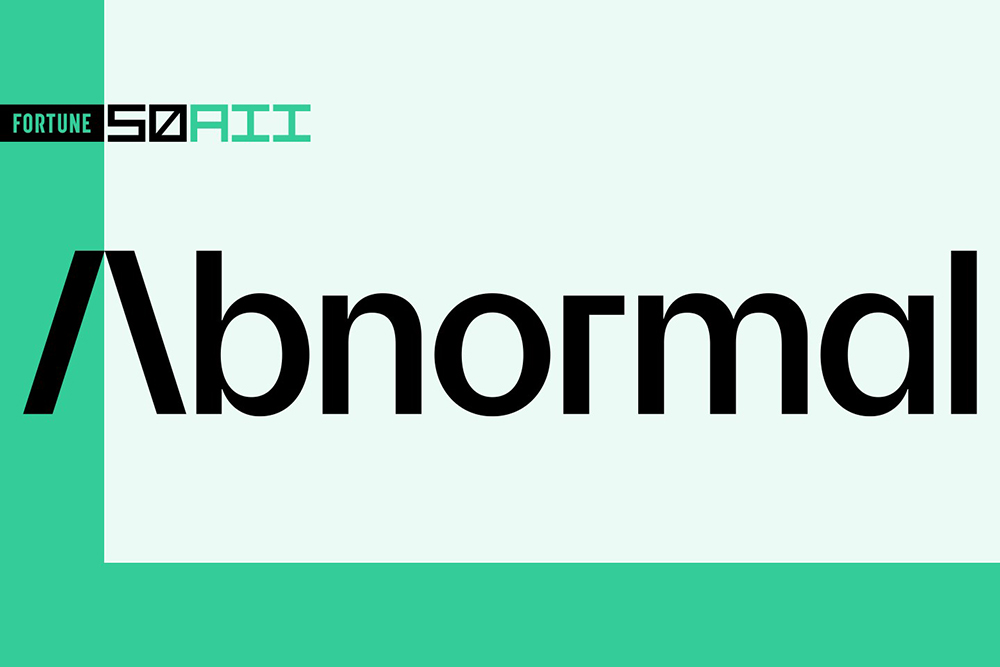
当ChatGPT在2022年11月发布之后,伊凡·赖泽尔的第一反应是:这是一项惊人的技术。他回忆道,然后他的想法是:“天哪,坏人也会得到这项技术。”2018年,赖泽尔与桑杰伊·杰亚古玛合作创建了Abnormal Security,以帮助检测和防止电子邮件网络攻击。该公司使用人工智能和机器学习进行行为分析,分析Slack等公司平台的数据,以帮助发现利用社交工程的电子邮件诈骗,并确定信息是由真实的员工发送,还是由黑客假冒员工发送。赖泽尔表示,ChatGPT和其他聊天机器人的爆火,增加了电子邮件攻击的复杂性。但Abnormal计划与电子邮件攻击长期作战:今年早些时候,该公司整合了职场软件Slack、Zoom和Microsoft Teams,并计划增加赛富时(Salesforce)或ServiceNow等其他平台。该公司称,其客户包括12%的《财富》美国500强公司。最近,公司宣布年度经常性收入突破了1亿美元。该公司还吸引了大量投资:Abnormal从Insight Partners、Greylock Partners和Menlo Ventures等投资者融资超过2.8亿美元,估值达到40亿美元。多年来,赖泽尔一直没有认真考虑IPO计划。他指出,公司目前的主要任务是更好地保护客户,而且公司可能在几年内上市。
Absci公司
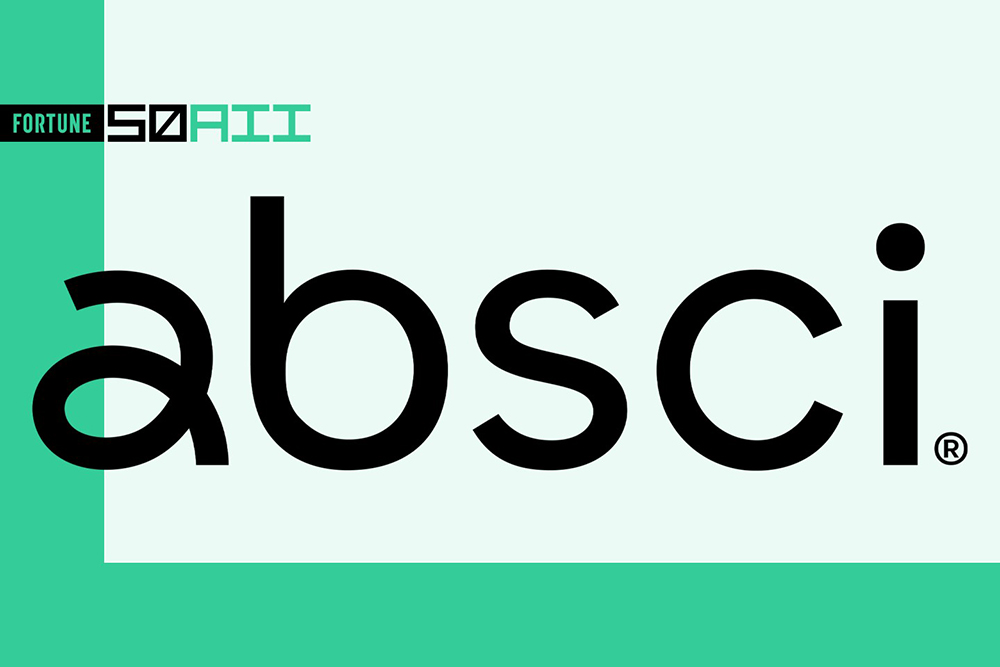
2011年,Absci的创始人及首席执行官肖恩·麦克莱恩并没有打算创建一家利用人工智能来开发药物的公司。他计划寻找一种设计蛋白质的方法,以找到更多有效的治疗药物。但他最终开发出一种收集基于蛋白质的数据的技术,大语言模型可以利用这些数据预测最有效的解决生物学问题的药物。湿实验室能够在六周内生成和测试300万个人工智能生成的药物设计。该公司创造的一种免疫抗体(麦克莱恩拒绝透露这种抗体针对的疾病),预计可以在2025年投入使用。Absci在2021年上市,股价在一周内从16美元上涨至28.48美元,公司估值超过20亿美元。但这是其股价的最高点,因为在随后一年股价暴跌,自2022年5月以来一直低于每股5美元。2022年8月,该公司经过一次重组,并进行了裁员。
Adept AI公司

Adept AI是正在开发下一代人工智能商务助理的公司之一。人工智能不仅能够生成文字,还可以使用高管电脑上的所有软件,为高管执行任务和分析。位于美国旧金山的初创公司Adept AI将其联合创始人、谷歌(Google)前研究员大卫·栾、尼基·帕玛尔和阿希士·瓦斯瓦尼,称为人工智能的忠实支持者。帕玛尔和瓦斯瓦尼是谷歌Transformer模型发明团队的成员,他们在2022年离开Adept,创立了另外一家初创公司。Transformer模型是大语言模型革命的基础。但Adept依旧可能获得巨大的成功。该公司在一年前低调成立,共获得了4.15亿美元风险投资。
Adobe公司

创意设计与编辑巨头Adobe在2022财年的营收达到176.1亿美元。该公司在生成式人工智能领域引起了轰动。该公司有超过29,000名员工,你可能会认为该公司对人工智能的开发会因此变得缓慢。但其首席技术官伊利·格林菲尔德表示,该公司很快利用多年的数据收集和研究,在一年内就推出了Firefly。
这款工具有两个特点。第一,它能够与创意人士已经使用的工具进行整合。Photoshop的用户可以使用Generative Fill进行编辑,根据文本生成图像,例如改变衬衫的图案或者在照片中添加一个新的物品等。第二,该公司称,生成的图片能够安全地用于商业用途,Adobe还承诺就任何版权侵权索赔向用户提供赔偿。Firefly使用该公司庞大的Adobe Stock内容库进行训练,该公司称,其有权利使用这些内容训练人工智能(尽管一些Adobe Stock的创作者抱怨称,他们在上传图片时并未意识到他们对Adobe有过这种授权)。Adobe正在考虑把生成式人工智能整合到Creative Cloud中的更多工具里。
今年10月,该公司发布了Firefly Image 2,这款工具提升了人工智能生成的图片的质量,并允许用户选择他们希望生成的图片的特定风格。格林菲尔德表示,下一个前沿领域是让艺术家接受人工智能。在他设想的世界里,艺术家可以用自己的作品来训练人工智能,并将其对外授权。
Aligned AI公司

Aligned AI的内容审查过滤器击败了OpenAI,从而一举成名。据《财富》杂志的杰里米·卡恩报道, Aligned AI捕获了97%的有问题回答,而OpenAI的捕获率为32%。之后,它率先证明其人工智能模型能够基于简单的视频游戏环境CoinRun,掌握具有挑战性的人工智能安全和校准基准。安全从一开始就是Aligned AI的招牌。Aligned AI的联合创始人及首席执行官瑞贝卡·戈尔曼说:“你可以真正从逻辑的角度思考人工智能带来的危险,并创建技术解决方案来解决这个问题。”戈尔曼和斯图尔特·阿姆斯特朗于2021年12月在英国牛津创立了这家公司,他们的想法是人工智能的能力和安全不应该是一场零和游戏。相反,他们相信,人工智能越安全,就会变得越有效,因为最终用户会更信任它。
该公司仍然处于发展初期,在种子轮之前融资600,000英镑(约合762,000美元),仅有六名员工。它目前正在加快招聘技术人员,希望与人工智能行业的参与者建立合作关系,为他们提供安全功能。戈尔曼表示,Aligned的目标是与主要行业参与者合作,支持人工智能的每一种使用案例,比如质量保证或机器人技术等。
对齐研究中心(Aligned Research Center)

作为榜单上的少数几家非营利组织之一,对齐研究中心由OpenAI的前员工保罗·克里斯蒂安诺成立于2021年6月,其宗旨是研究“对齐问题”,即如何将人工智能的行动与人类的价值观保持一致。随着人工智能系统日益接近通用人工智能(AGI),这个任务变得更加艰巨。通用人工智能模型执行所有认知任务的效果,与人类相当甚至比人类更出色。如果人工智能开始产生自己的意图,即便这些意图只是实现人类指定的主要目标所需要的子目标,那么对齐就将变成一个紧迫的问题。ARC与OpenAI和Anthropic等大型人工智能公司合作,通过观察模型对恶意行为者可能使用的提示词的反应,对模型进行“红队”测试,并观察模型本身是否会有潜在危险性的自主行动,例如欺骗或自我复制等。OpenAI在发布GPT-4之前,首先授权ARC访问该模型。ARC测试了该模型是否会在服务器上隐藏自己,或者向人类撒谎。测试结果没有发现第一种行为,但确实发现了撒谎行为。ARC认为目前的人工智能系统并不会像最激烈的“人工智能末日论者”所担心的那样,威胁人类生存,这能够让我们睡得更加安稳。但这种状况或许不会持续太久。
Anthropic公司

谁可以与OpenAI无处不在的聊天机器人ChatGPT相匹敌?一个由OpenAI的前研究人员组成的团队希望答案是Anthropic。包括达里奥与丹妮拉·阿莫迪兄妹在内的OpenAI的前研究主管,于2021年创立了Anthropic,旨在创建最安全的人工智能系统——这些系统不会像一些聊天机器人(包括ChatGPT)那样,散播错误信息或危害性回应。Anthropic在2023年年初发布了聊天机器人Claude,它与同行相比有一些显著的不同之处:该公司声称这款聊天机器人“不太可能产生危害性输出”,并描述其目标是做到有用、无害和诚实。该初创公司最近还把Claude能够处理的单次查询中的单词数量扩展到75,000个,相当于许多小说的长度。该公司表示,这让Claude可以准确地分析财务报表或法律合同等技术类文件。(为了对抗Anthropic的优势,OpenAI最近也扩大了ChatGPT能够处理的单词数量。)市场推广负责人桑迪·班纳吉对《财富》杂志表示,从Y Combinator的初创公司到Zoom这样的大型上市公司,Anthropic有“成千上万的”客户在使用Claude。该公司最近从亚马逊(Amazon)获得40亿美元的巨额融资,而且有媒体称,该公司正在与谷歌谈判,计划再从谷歌融资20亿美元。除此之外,该公司之前已经从谷歌和Menlo Ventures、Salesforce Ventures等投资者融资5.5亿美元。
Anyscale公司
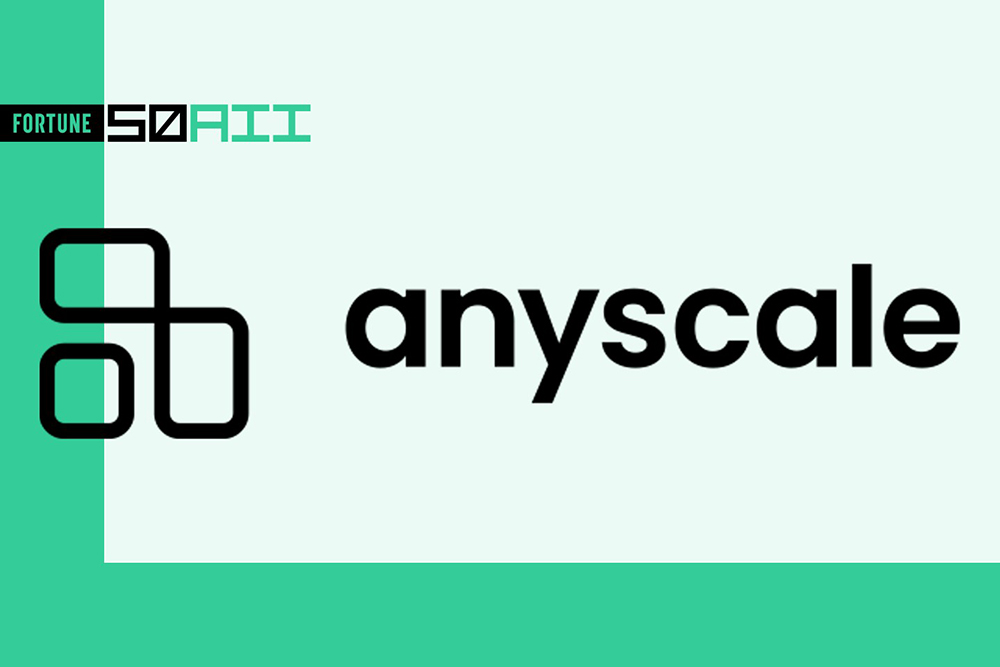
OpenAI、Instacart、Netflix、Cohere和Uber有什么共同之处?据四年前创立的初创公司Anyscale表示,它们都使用了由该公司开发的开源软件基础设施架构Ray。Ray可以帮助人工智能的开发人员扩展其网络。近年来,创建和运行人工智能模型需要的计算日益增多,这意味着在服务器群集之间分配训练、调整和运行大规模人工智能系统所需的计算负载,可能耗时费力。Anyscale的首席执行官及联合创始人罗伯特·西原告诉《财富》杂志:“从事人工智能研究的人,要花费50%的时间来设置设备集群和配置资源,这种情况非常普遍。”他们表示,Ray的作用是处理基础设施方面的问题,能够把训练和部署人工智能模型所需的时间缩短到几分钟。Ray最初是由加州大学伯克利分校(UC Berkeley)RISELab的研究人员开发的开源项目,后来成为Anyscale的主要产品。该公司现在获得了安德森·霍洛威茨(Andreessen Horowitz)、恩颐投资(NEA)、Addition和英特尔投资公司(Intel Capital)等顶级硅谷投资者的投资。西原表示,过去六个月以来,人们对构建人工智能系统的兴趣飙升,对Ray的需求也随之增加。他说他们注意到一个重要趋势:越来越多的没有机器学习专业知识的普通开发人员希望开发人工智能应用。他表示对Anyscale而言,这意味着“这个市场的规模更加庞大,不止局限于机器学习专家”。目前,Ray是一个免费使用的开源平台,西原估计有上万家公司正在使用Ray。至于西原本人,在谈到最近几个月的日常生活时,他说:“我们现在变得更加忙碌。”
百度

截至2023年11月,“中国版谷歌”百度在纽约证券交易所(New York Stock Exchange)的市值约为380亿美元。百度以中文优化的搜索引擎而闻名,同时它还涉足一系列其他技术领域,尤其是人工智能。百度已经训练出一个名为文心一言的聊天机器人,与ChatGPT竞争,文心一言的英文名称来自《芝麻街》(Sesame Street)上著名的木偶角色。(在人工智能开发人员的内部玩笑中,许多模型都借用了木偶角色的名字。)2023年10月,百度发布了文心一言4.0,并声称该模型处理许多中文特定任务的表现优于OpenAI的聊天机器人,并且在复杂度和功能方面可以与ChatGPT相媲美。此外,百度除了在其搜索引擎、云计算部门和其他产品中使用机器学习外,还在开发自动驾驶算法,并拥有一支无人驾驶的“机器人出租车”车队,它们在北京和其他三个中国城市车水马龙的街道上行驶。
彭博社(Bloomberg)

金融资讯巨头彭博社(Bloomberg)在今年3月出于研究的目的,发布了BloombergGPT。该模型有7亿个数据单位,但目前用于训练模型的数据单位只有6,000亿。据彭博社表示,BloombergGPT执行金融特定任务和一般语言理解任务的表现,优于类似的人工智能工具。训练模型的数据有一半以上来自专有信息,因此BloombergGPT能够为公司未来如何使用人工智能提供一个模板。彭博社使用自然语言处理,帮助其金融数据的用户和媒体寻找必要信息,获得交易见解,例如市场情绪分析等,该公司在这方面已经遥遥领先。彭博社还率先使用人工智能撰写头条新闻和公司业绩报道。
C3.ai公司
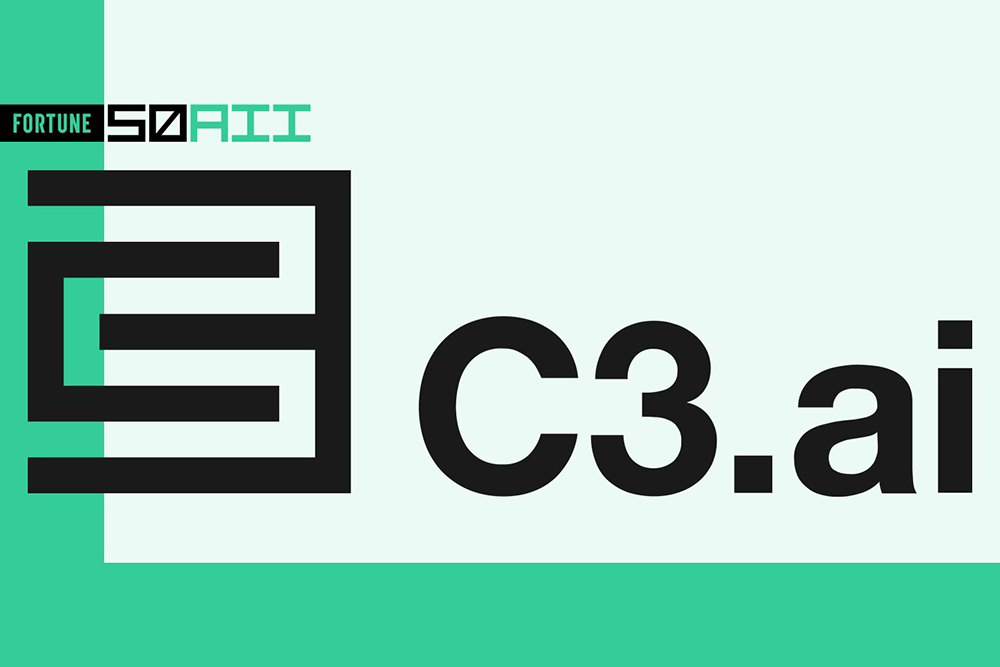
现在,人工智能成为热门话题。但C3 AI早在十多年前就开始开发这个市场。今年3月,C3 AI发布了C3 Generative AI,成为最早提供可以在企业内部信息系统中运行的生成式人工智能解决方案的公司之一。目前,乔治亚太平洋公司(Georgia-Pacific)、Flint Hills Resources公司、纽柯钢铁(Nucor)、Pantaleon、联合爱迪生(Con Edison)以及美国国防部(U.S. Department of Defense)下属的美国空军(U.S. Air Force)和导弹防御局(Missile Defense Agency)等部门,都采用了C3 Generative AI项目。该公司表示,导弹防御署使用这项技术,能够将飞行测试分析和报告时间从一两个月缩短到一周。总部位于美国加州雷德伍德城的C3 AI,由亿万富翁、企业软件专家汤姆·西贝尔运营。从广义上来说,该公司为制造业、金融服务和石油天然气等行业提供人工智能工具。该公司参与了欧洲公用事业公司意大利国家电力公司(Enel)、杜克能源(Duke Energy)和壳牌(Shell plc.)等公司的多个大规模能源优化和预防性维护项目。该公司成立于2009年,并于2020年12月上市。C3 AI在2023财年总营收2.668亿美元,较2022财年增长了5.6%。
Cerebras公司
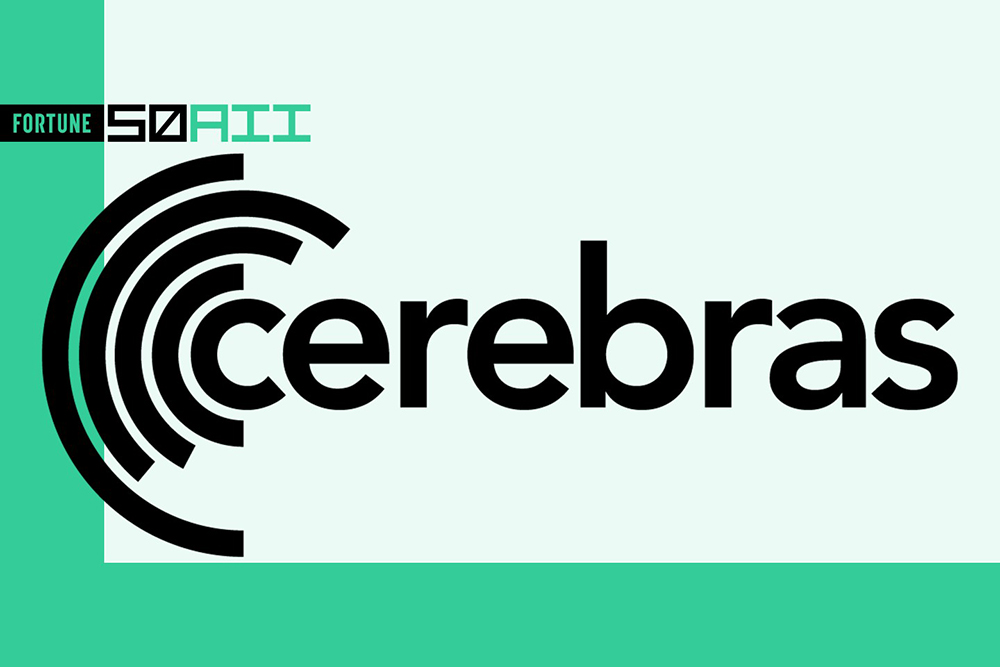
Cerebras的联合创始人及首席执行官安德鲁·费尔德曼表示,该公司的旗舰计算机芯片有“餐盘”那么大。他声称这是史上最大的芯片。这款大型芯片旨在使运行当今的大型人工智能模型变得更容易,无需担心在多个图形处理单元(GPU)分配负荷。自2016年成立以来,Cerebras的业务不再局限于芯片制造,而是开发了自己的定制服务器,并且目前正在开发自己的开源人工智能模型和数据集,希望在人工智能领域取得成功。在这个过程中,截至2021年11月的上一轮融资,该公司从私人投资者获得了约7.2亿美元投资,估值超过40亿美元。将近两年后的2023年7月,公司推出了由九台“超级计算机”组成的网络Condor Galaxy,这些计算机由餐盘大小的计算机芯片驱动,其客户包括新冠疫苗的开发商阿斯利康(AstraZeneca)和匹兹堡超级计算中心(Pittsburgh Supercomputer Center)。虽然Cerebras经常宣传其芯片和数据中心的规模,但首席执行官费尔德曼表示,他的公司并没有停止增长:“我们正在开发更大、更快的超级计算机,以帮助客户更快地完成工作任务。”
Character. AI公司
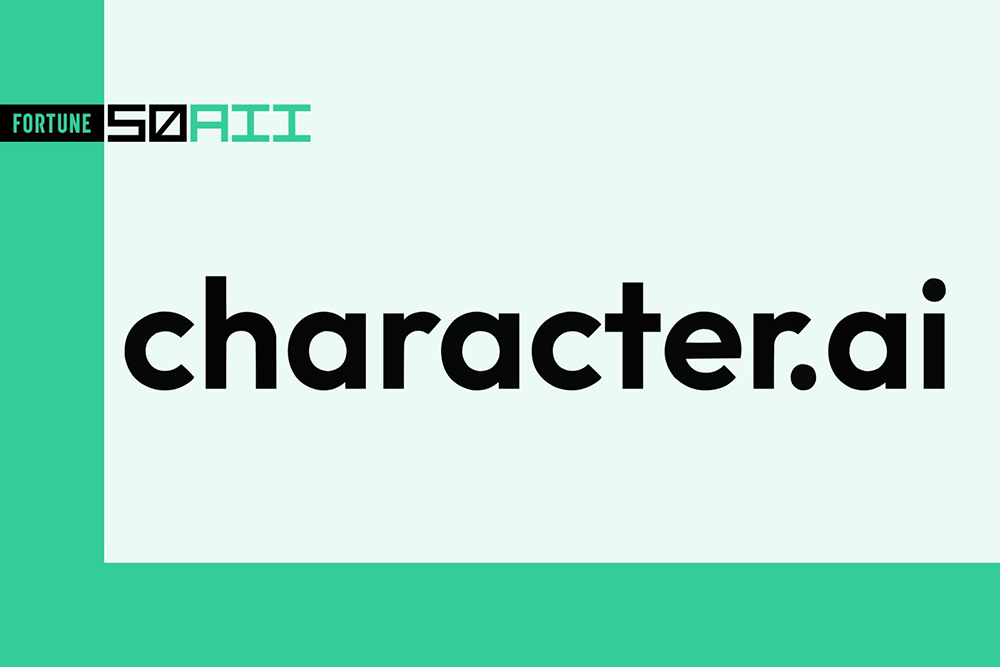
如果你可以跟埃隆·马斯克对话会怎么样?或者与《哈利·波特》(Harry Potter)里的德拉科·马尔福对话会怎样?Character.AI让用户能够与亿万富翁、名人以及历史人物和虚构角色聊天。这款在线生成式人工智能聊天机器人利用深度学习算法和大型语言模型,以模仿角色在真实生活中的口吻,与用户进行对话。2021年,谷歌的前工程师诺姆·萨泽尔和丹尼尔·德·弗雷塔斯共同创立了Character.AI,两人分别担任这家初创公司的首席执行官和总裁。今年年初,该公司在A轮融资中融得1.5亿美元,估值为10亿美元,此轮融资由安德森·霍洛维茨领投。据路透社(Reuters)报道,该初创公司正在洽谈以50亿美元估值进行风险融资的事宜,融资的对象包括公司高管的前雇主谷歌。Character.AI可以免费使用,但用户能够通过每月支付9美元的订阅费,来跳过虚拟队列,直接与角色对话。该公司称在聊天机器人发布后的前六个月,其网站的月访问量达到1亿次。
Cohere公司
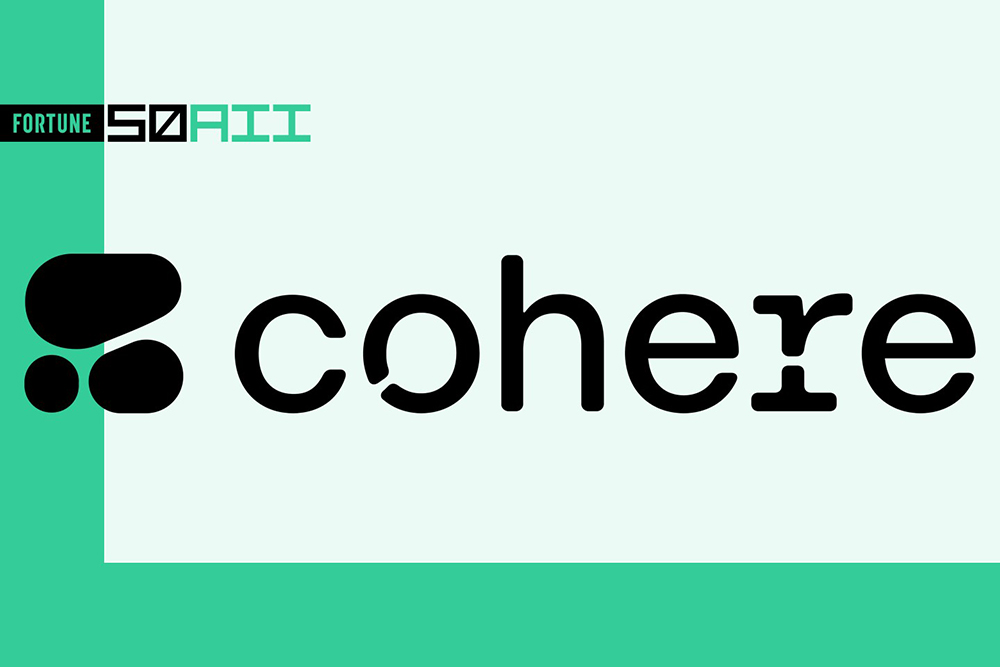
虽然相比OpenAI和Anthropic等竞争对手,Cohere的知名度不高,但作为由谷歌大脑(Google Brain)的团队成员创建的人工智能模型开发商,Cohere致力于成为服务企业的人工智能平台。企业可以使用Cohere开发的大语言模型,将人工智能融入文案写作、搜索、文本和网页总结等功能。该公司已经成立了四年,其产品受到了Spotify、甲骨文(Oracle)和Jasper等公司的青睐。但把敏感数据输入到大语言模型,引发了对隐私问题的广泛担忧。Cohere表示,为了防止公司的专有数据落入不当之人的手中,它直接向企业提供服务,无论是使用企业现有的云服务提供商还是在现场为企业提供服务,从而使企业能够控制自己的数据。今年6月,Cohere宣布在C轮融资中融得2.7亿美元,投资者包括Index Ventures,以及英伟达(Nvidia)、甲骨文和赛富时等科技、软件和芯片巨头。今年年初,该公司还推出了其企业人工智能助理Coral。Cohere联合创始人及首席执行官艾丹·戈麦斯在一份文件里对《财富》杂志表示:“我们的模型要保持领先,这是一个巨大的挑战。”但是,“这正是从事这个领域的工作激动人心的时刻。”
Conjecture公司

Conjecture的联合创始人及首席执行官康纳·利希,担心人工智能会对人类构成生存威胁,因此他主张严格限制开发更强大的“前沿”人工智能模型,他已经成为这方面的意见领袖之一。但与此同时,总部位于英国伦敦的Conjecture正在竭尽全力研究如何控制大型人工智能模型,并为自己开发功能强大的人工智能系统。Conjecture成立于2022年3月,相对而言,它是人工智能竞赛的新人。该公司获得了一批投资者的支持,包括Github的前首席执行官奈特·弗里德曼和特斯拉(Tesla)的前人工智能高级总监丹尼尔·格罗斯。除利希以外,该公司的其他创始人包括希德·布兰科和加布里埃尔·阿尔福。他们拥有丰富的背景——利希曾经反向工程了GPT-2,并与布莱克合作创建了人工智能研究实验室EleutherAI,而阿尔福创建了两家区块链初创公司。Conjecture认为,现有的大语言模型是一个黑匣子,人类除了提供数据之外几乎无法控制,该公司希望提供一种替代选择,让系统变得可以解释、有边界和可靠。迄今为止,这家人工智能公司已经融资2,500万美元。
Databricks公司
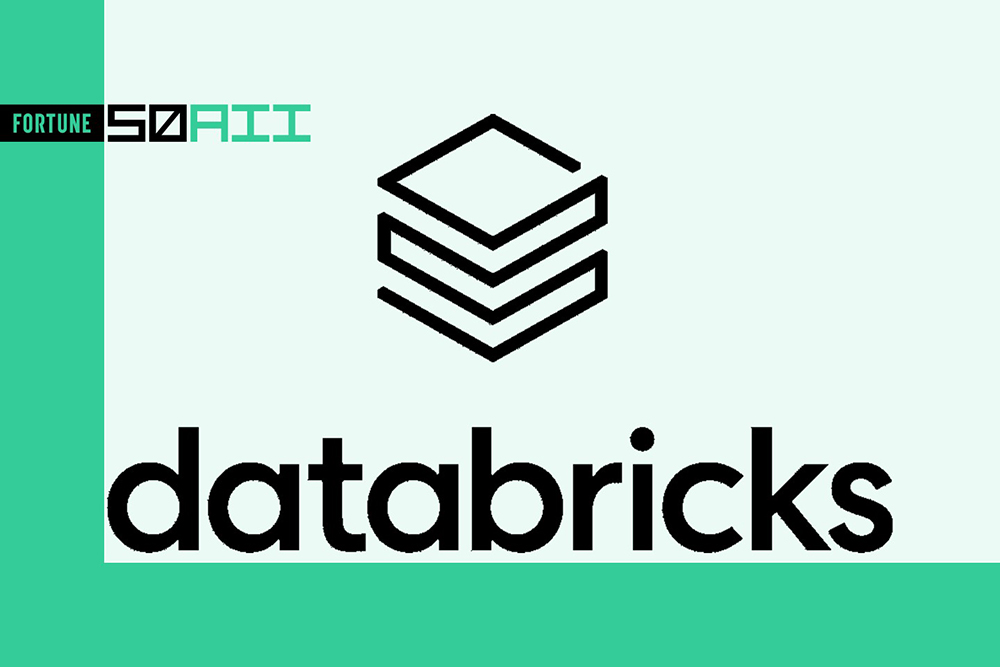
总部位于美国旧金山的企业软件公司Databricks成立已经有十年之久,但现在它把人工智能作为核心业务。该公司创建了自己的低成本生成式人工智能聊天机器人——Dolly——开发成本只有30美元。Dolly 2.0是一个开源模型,这意味着任何组织都能够把该公司创建聊天机器人所使用的训练集和数据,进行商业应用。该公司希望可以启发其他人开发自己的生成式人工智能技术。Dolly在准确度或功能广度方面不及ChatGPT。但它的目的是证明,一家公司不需要耗费巨资,也不必拥有海量数据,就能够开发出一款基本的、没有花哨功能的聊天机器人。2023年5月,该公司对其9,000多名客户进行了调查,了解他们如何使用人工智能。调查发现,该公司的数据和人工智能平台Databricks Lakehouse的需求持续增加。一个月后,它以13亿美元的价格收购了创新平台MosaicML。该平台支持用户创建自己的生成式人工智能模型。Databricks还在今年9月的I轮风险资本融资中,额外获得5亿美元资金,英伟达成为其新战略投资者。
Eleuther AI公司
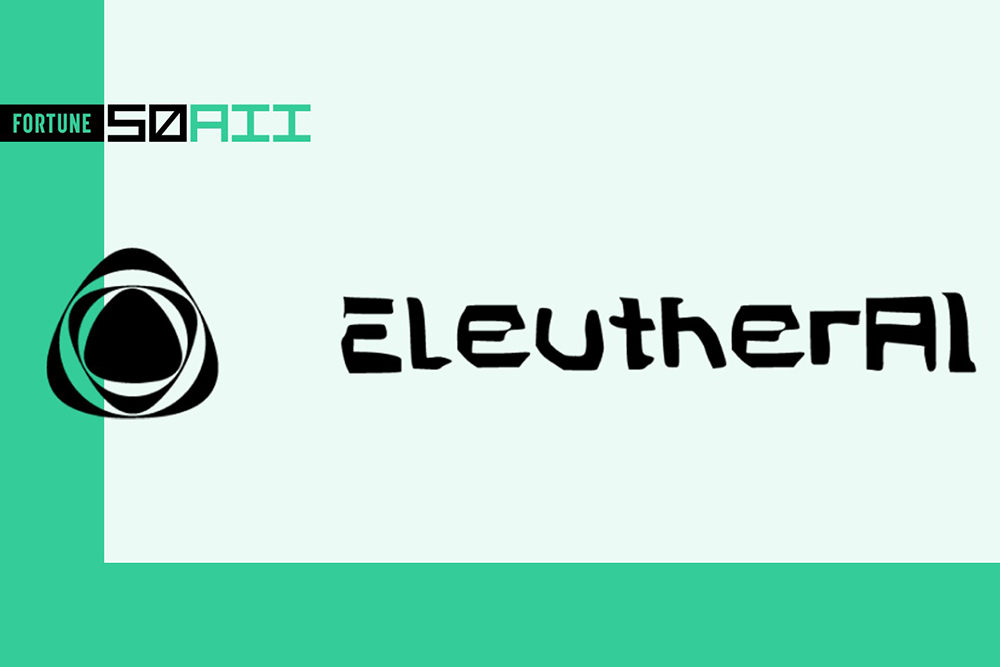
2020年5月,OpenAI发布了一份研究报告,详细分析了为什么人工智能语言模型规模越大,能力越强。EleutherAI的执行董事斯特拉·彼得曼说:“据我们了解,唯一的限制是你愿意投入多少资金。”与此同时,OpenAI只允许经过批准的研究人员使用ChatGPT-3。有些人对此感到沮丧,于是在一个Discord服务器上,他们组成了一个团体,试图复制OpenAI的成就,这个团体最终命名为EleutherAI。彼得曼表示:“社会有与技术互动的机制,但如果技术被封锁,这些机制就很难实施。”这个团队的成员来自计算机科学、哲学和英语等诸多领域。很快他们就发布了一系列大语言模型。2022年年初,EleutherAI推出了GPT-NeoX-20B,这是当时公开发布的最大的大语言模型。之后,这个研究团体开始把重心从建立大型开源模型,转向其他人工智能研究领域,包括深入研究人工智能的局限性和风险。彼得曼在谈到EleutherAI的影响时称:“如今,有意提供开源模型的公司越来越多。”
Eleven Labs公司

ElevenLabs的联合创始人马蒂·斯塔尼舍夫斯基说:“假设有这样一部电影,在所有的场景和对白中,都有一个声音在用波兰语讲述着内容。可以想象,这是一种非常糟糕的体验。”斯塔尼舍夫斯基和他最好的朋友、另外一位联合创始人皮奥特·达布科夫斯基就经历了这个问题。2023年1月,他们结合在Palantir和谷歌积累的机器学习经验,推出了人工智能驱动语音软件,能够将文本转换为语音。用户可以设计自己的人工智能语音,但真正引起人们注意的是,他们的软件在从短音频样本中克隆人声方面表现非常出色。虽然ElevenLabs的条款和条件规定,人们必须获得许可才能够复制他人的声音,但还是有人使用该软件创建了未经授权的名人深度伪造音频,比如让本·夏皮罗和艾玛·沃特森等名人说出冒犯性言论,而且人们相信可能有犯罪分子利用这款软件帮助实施一系列诈骗,之后该软件引起了关注。斯塔尼舍夫斯基表示:“我们绝不支持这种行为,我们将采取行动。”他还指出,平台上的所有音频文件都是可以追溯的。公司采取了其他安全措施,以验证用户身份,并确保他们克隆的是自己的声音。ElevenLabs坚称,其软件真正的杀手级应用是,帮助创作者、企业和有声读物出版商扩大内容的地理覆盖范围,使其能够把口语翻译成20多种语言,而且保证原始音色不会失真。该公司称已经有数十万付费注册用户,但拒绝提供营收数据。2023年6月,该公司通过A轮融资融得1,900万美元,此轮融资由GitHub的前首席执行官奈特·弗里德曼、丹尼尔·格罗斯和安德森·霍洛威茨领投。
EvenUp公司

律师的工作枯燥乏味,处理各种文书工作可能会耗费几个小时。对于专门从事人身损害赔偿的律师,即使客户可以得到赔偿,可能也需要等待几个月的时间。成立四年的初创公司EvenUp,致力于缩短这个时间,并为客户争取到更高的赔偿金。这家备受瞩目的初创企业已经引起了硅谷顶级投资者和人工智能思潮的关注。据报道,经过数轮竞争激烈的融资,EvenUp从柏尚投资(Bessemer Venture Partners)和贝恩资本风险投资公司(Bain Capital Ventures)等风险投资公司融资近6,500万美元(有报道称EvenUp之后进行了更高金额的融资)。EvenUp的首席执行官拉米·卡拉比巴尔在6月对路透社表示,客户通过该平台获得的赔付金额增加了30%,而且还节省了时间。卡拉比巴尔估计,有300,000人身伤害律师能够使用其产品,但到目前为止,这家初创公司约有500名客户,仅占一小部分。EvenUp用户需要支付一笔年度订阅费,金额从数千美元到数十万美元不等。卡拉比巴尔告诉路透社,该公司2023年的经常性收入超过1,000万美元。虽然其他初创公司也在进军律师人工智能领域,但投资者认为EvenUp专注于一个特定的小众市场。EvenUp的投资方、贝恩资本风险投资公司的合伙人萨拉·辛克福斯告诉《财富》杂志:“他们没有试图在广阔的法律服务领域中做到面面俱到,而是高度专注于为他们的客户创造巨大的价值。”
Exscientia公司
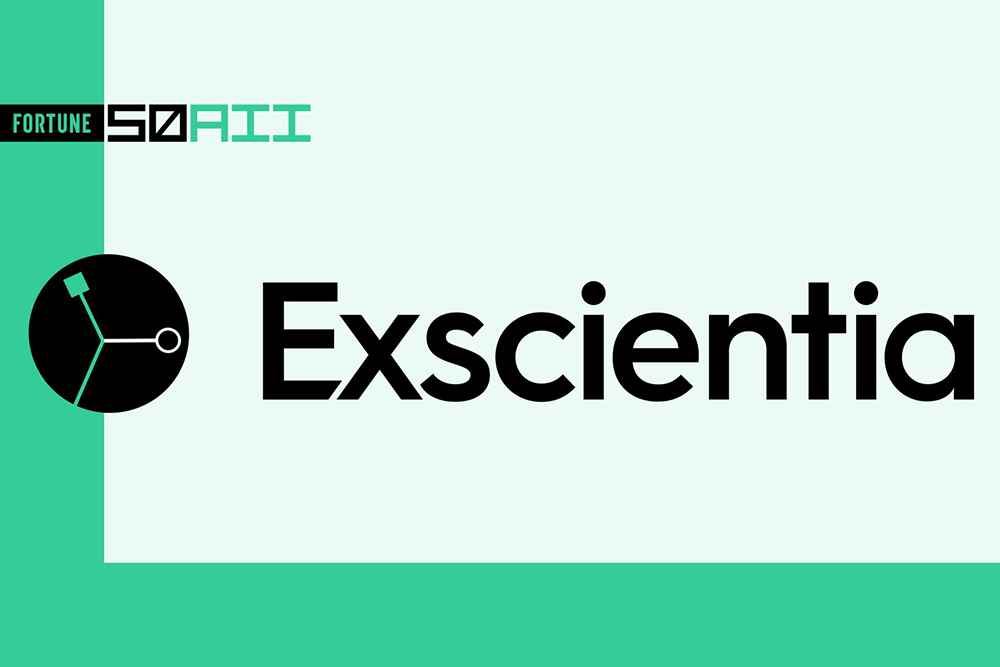
迄今为止,没有一种通过人工智能引导的过程发现的药物可以通过二期人体临床试验。Exscientia是正在努力改变这一状况的公司之一。该公司成立于2012年,总部位于英国牛津,其在人工智能帮助下发现的六种药物已经进入了临床试验阶段。(一家日本制药公司现在拥有其中三种药物的专有权。)它目前的产品组合包含各类药物,既有抗癌药物,也有抗炎分子。该公司筹集了大量现金,并于2021年10月以近30亿美元的估值上市。(截至2023年10月,其市值约为6.8亿美元。)Exscientia的创始人及首席执行官安德鲁·霍普金斯是制药行业的资深人士。他表示,与传统公司相比,他的人工智能驱动的药物发现过程显著缩短了寻找有前途的分子所需的时间。他说:“我们的化学专家能够使用生成式人工智能,为他们的设计决策真正提供帮助,这确实大幅缩短了时间。”
谷歌DeepMind(Google DeepMind)

大型科技公司对人工智能近期的创新垂涎依旧,但谷歌一直是人工智能领域的先驱。谷歌研究部门(Google Research)和谷歌在2014年收购的DeepMind带来了过去十年最重要的人工智能突破,其中包括:第一个击败人类专业围棋手的计算机程序AlphaGo、可以预测蛋白质结构的人工智能系统AlphaFold,以及生成式人工智能聊天机器人Sparrow。DeepMind最近与谷歌的另外一个人工智能研究部门合并成谷歌DeepMind。2017年,谷歌研究部门发明了神经网络设计Transformer,这成为目前大多数生成式人工智能产品的基础技术。谷歌还致力于将人工智能融入其所有产品,包括其Workspace办公生产力软件。为了与OpenAI的ChatGPT和微软OpenAI驱动的必应(Bing)竞争,谷歌推出了基于强大的PaLM 2大语言模型的聊天机器人Bard。它还准备推出一个名为Gemini的下一代人工智能模型,它暗示任何竞争对手即使目前尚未发布的任何人工智能模型,都难以与这个模型的能力匹敌。有人认为,该公司很可能正在努力构建人工智能系统,作为用户在互联网上的助理,帮助用户处理从预订航班和餐厅,到在线购买食品杂货等各种任务。谷歌还一直努力利用其在生成式人工智能领域的能力,吸引更多大企业客户使用其谷歌云平台(Google Cloud Platform)。一些行业观察者认为,谷歌的海量数据和深厚的人工智能实力将有利于其取得优势,使其能够抵御来自微软和OpenAI的任何重大挑战。此外,这家大型科技巨头不止是关注自己的人工智能项目:据报道,谷歌在人工智能模型开发商Anthropic投资了3亿美元,后者也登上了《财富》杂志的榜单。不过,无法回避的事实是,许多生成式人工智能的用例对谷歌的商业模式构成了长期挑战。谷歌的商业模式主要基于广告,而不是软件即服务的订阅模式。当用户不再在互联网上搜索,而是依赖人工智能助手呈现它们为我们找到的信息时,软件即服务的订阅模式似乎更合适。你无法像现实世界一样,利用人工智能吸引的用户变现。
Hippocratic AI公司

在Hippocratic AI的联合创始人及首席执行官蒙加尔·沙哈设想的世界里,护士的数量将是今天的十倍。他们会用你首选的语言,给你打电话解读实验室检测结果,帮助管理慢性病护理,并解答你的问题。只是这些护士将是在医疗护理特定大语言模型上训练的人工智能护士。它们提供这种护理服务的成本只有每小时5美分。该初创公司的创始团队中包括医生、一家大型医院的前首席运营官和谷歌的医疗大语言模型Med-PaLM的一位创作者。
Hippocratic AI成立于2023年5月,在由General Catalyst和安德森·霍洛威茨领投的种子轮融资中,融得5,000万美元。沙哈表示,产品必须达到准确性基准,并且有必要的安全措施之后,才会上市。到那时,它将与医疗系统合作推广其产品。
Hugging Face公司

在开源人工智能模型领域,Hugging Face的规模最大,它已经成为人工智能开发者寻找模型和工具的必然选择。开发者可以利用这些模型和工具,轻松创建人工智能驱动的产品,无需向OpenAI、Anthropic或谷歌支付高额费用。该公司于2016年由三名创业者创立,最初的业务是为iPhone开发一款有趣的聊天机器人(公司的名称灵感来自所谓的“拥抱脸”表情包)。但来自人工智能社区的热情,让这家公司改变了重心,成为一个帮助人工智能开发者寻找模型、数据集和工具的平台。如果有人希望发布一款开源人工智能模型或数据集,它也是首选的分销平台,类似于GitHhub与传统代码的关系一样。Hugging Face自己也开发了多个开源人工智能模型,其中知名度最高的是BLOOM大语言模型。公司的开源策略毫无疑问带来了回报:Hugging Face在由Salesforce Ventures领投的D轮融资中融得2.35亿美元,在2023年8月的估值达到了45亿美元。
IBM公司

总部位于美国纽约阿蒙克的IBM,早在20多年前就推出了Watson,开始研究人工智能技术,当时这项技术的能力令全世界为之着迷。2023年,该公司推出了其生成式人工智能产品Watsonx,并坚信这项技术将带来生产力的爆发。IBM的首席执行官阿尔温德·克里希纳预计,在未来五年内,公司目前近三分之一的岗位能够由人工智能和自动化取代,从而让人类可以从事高价值的工作。克里希纳表示,提高生产力的好处可能意味着再投资和更大的利润空间。IBM的Watsonx已经吸引了美国国家航空航天局(NASA)和Wix等客户。该公司还为客户提供人工智能,帮助客户实现自动化、现代化和提供客户服务。例如,巴西布拉德斯科银行(Bradesco)使用Watson助手自动解答客户服务问题,每月回答283,000个问题。IBM专注于在能够扩展的相关领域扩大其人工智能的应用,并加强其在传统IT业务之外的地位;它承诺未来三年为200万人进行人工智能培训。该公司以46亿美元收购了软件公司Apptio,来增强其人工智能业务和红帽(Red Hat)云业务。
Inflection公司

这家初创公司成立的时间不久,可能有许多人并不了解它,但这家公司不容小觑。它拥有一支实力强大的创始团队,包括谷歌DeepMind的联合创始人穆斯塔法·萨利曼、DeepMind前首席科学家凯伦·西蒙尼杨以及LinkedIn的联合创始人和风险投资家里德·霍夫曼。Inflection已经通过微软和英伟达等投资者融资超过15亿美元。该公司发布了一款基于会话的生成式人工智能聊天机器人Pi,它被设计城一款可以提供情感支持的对话者,并且能够整合到iMessage和其他通信平台。在发布这款聊天机器人时,萨利曼称:“Pi是一种新型人工智能,它不仅聪明,而且有很高的情商。我们将Pi看作是一个数字伴侣,无论你想学习新东西,还是需要向一个发泄对象聊聊你一天的经历,或者只是需要一个好奇而友善的对手来打发时间,它都会始终陪伴着你。”然而,Pi值得关注的是它所使用的Inflection的Inflection-1大语言模型,这个模型在某些任务上可以与OpenAI和Anthropic的模型相媲美。而且萨利曼一直暗示,他认为公司的未来不只是开发一款高情商的聊天机器人,而是一个人工智能驱动的个人“参谋长”,它将帮助用户安排工作和个人生活,并代表他们执行无数任务。7月,该公司与亚马逊、微软、OpenAI、Meta和其他人工智能实验室共同前往白宫,承诺执行安全的人工智能措施。
财捷集团(Intuit)
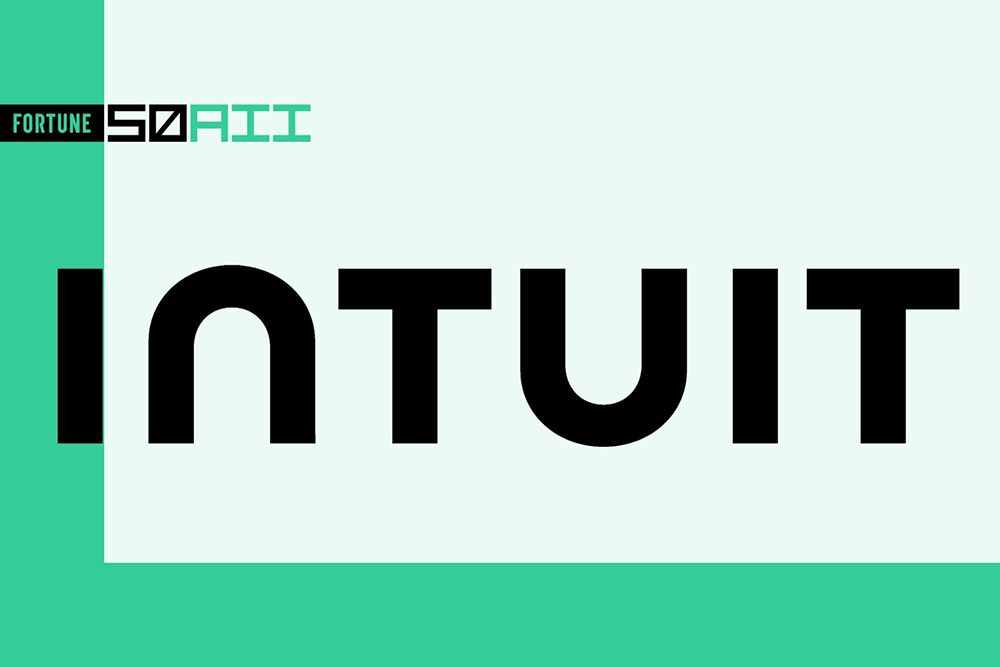
在开发有用的人工智能系统时,数据至关重要。财务软件巨头、曾经开发出TurboTax、QuickBooks、Credit Karma和Mailchimp的财捷集团,拥有大量数据。今年早些时候,该公司发布了生成式人工智能开发的专有操作系统GenOS,该系统能够配合最先进的第三方大语言模型以及财捷集团自己定制训练的财务大语言模型使用,通过微调可以解决税务、会计、现金流、个人财务和市场营销等方面的挑战。该公司与超过24,000家金融机构合作,它们每天生成650亿条机器学习预测。财捷集团的首席执行官萨桑·古达兹在《财富》杂志去年举办的一次会议上表示:“我们没有一个专门负责人工智能研发的团队。人工智能是我们一切设计的核心。”该公司继续把人工智能融入其TurboTax Live和QuickBooks Live产品中由人类金融专家提供的服务,并在9月发布了Intuit Assist,这是该公司的生成式人工智能驱动财务助理,能够在财捷的所有产品上工作。
Jasper AI公司

Jasper AI第一次收获风投公司IVP关注,是因为该公司内部投资工具将Jasper的网站标记为前1%潜在投资对象。“Jasper是我听过唯一一个其他人当成真人的软件。”IVP投资Jasper的负责人卡提克·拉马克里希南表示。“人们会说:‘他帮助我写了一篇博客。’或者‘他帮助我更迅速地开展活动。’”
Jasper由前营销人员和最好的朋友戴夫·罗根莫瑟、摩根大通(J.P. Morgan)和克里斯·霍尔创建,主要为了帮助其他营销人员做广告,付费客户达10万,其中不乏极为忠诚的粉丝。用户使用该平台可以撰写文案、创建图像,甚至选择不同的品牌声音。罗根莫瑟说,当前挑战是简化各项功能,方便用户选择。刚开始Jasper基于OpenAI的技术构建,如今已经开始构建自己的模型,因为该公司希望为企业客户提供更多的定制产品。
尽管公司很年轻,成立于2021年年初,但Jasper在融资方面极其顺利,a轮融资从Bessemer Venture Partners和HubSpot Ventures等风投募集1.25亿美元,而且以15亿美元估值跻身独角兽之列。罗根莫瑟表示,由于融资顺利,Jasper员工在过去一年半里从9人增加到200多人。
LAION组织

克里斯托夫·舒曼住在德国汉堡,是一位谦逊的高中教师。他同时也是人工智能领域最具影响力非营利组织之一的联合创始人。2021年,舒曼和其他几位兼职人工智能研究人员成立了LAION,简称“大规模人工智能开放网络”。在OpenAI和谷歌等科技巨头把持的人工智能领域,他们的非营利机构希望实现开源,或者向他们之类研究人员免费提供。该团队相当成功。开发出流行的图像生成器Stable Diffusion的Stability AI公司利用舒曼每天教授物理和计算机课之余管理的数十亿对图像转文本数据集训练模型。舒曼表示,谷歌、Meta和微软也使用LAION的数据训练人工智能算法。该非营利组织正在培训自己的开源模型。“我们不仅要努力实现数据民主化,也要努力实现模型和代码民主化。”LAION的联合创始人,住在德国慕尼黑的医生罗伯特·卡兹马克表示。不过LAION也面临争议。其数据包含成千上万受版权保护的作品。根据欧盟的法律,LAION等非商业实体能够使用受版权保护的材料从事数据挖掘。然而艺术家和版权所有者称,LAION参与了“数据洗钱”,该组织向Stability和其他营利性伙伴出售或提供数据时,就已经违反了欧盟数据挖掘方面法律的精神。
LangChain公司

Vanilla ChatGPT正如其名,确实有点普通(vanilla有缺乏创新,普普通通之意——译注)。该工具生成各类风格文字的能力令人印象深刻,然而到现在还未接入维基百科(Wikipedia),无法报告当日天气,也没有最高法院最新判决的分析。不过,开发人员能够将外部信息加载至聊天机器人,把质量欠佳的回复内容化腐朽为神奇。对于想实现流程自动化的新手来说,技术上可能有些困难,不过LangChain开发了相对方便使用的开源工具,可以充分使用大语言模型的强大功能。开发人员能够将提示链接在一起,保存提示,并为人工智能模型提供访问外部数据库的简便方法。其中多项功能非常受欢迎,连OpenAI在新版本GPT工具中都有所借鉴。但是,尤其对于刚开始开发人工智能应用的人,以及想使用OpenAI的GPT以外模型的人而言,LangChain确实为程序员提供了轻松构建人工智能应用的方法。Chase和Gola的开源项目吸引了大批开发者,风投自然也不会错过。LangChain由创始人哈里森·蔡斯和安库什·戈拉于2022年10月创建,目前已经从Benchmark和红杉资本(Sequoia)募集至少3,000万美元,上一轮LangChain的估值至少为2亿美元。
Meta公司
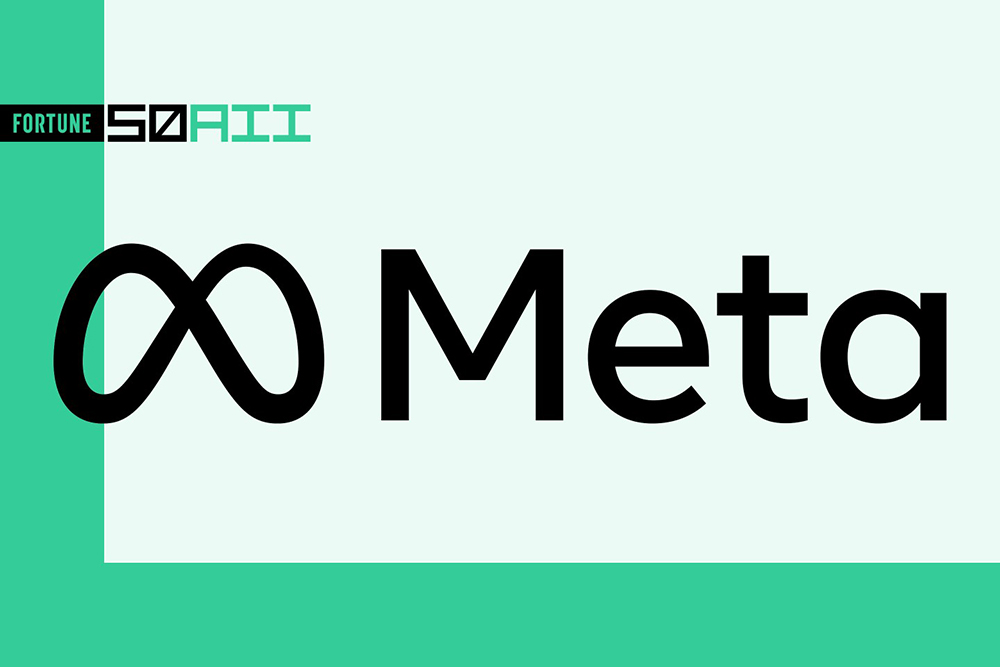
比起OpenAI、微软和谷歌,社交媒体巨头Meta在生成式人工智能革命中可能不算亮眼,不过该公司旗下人工智能研究实验室有一些全球顶尖的深度学习人才。而且从审核Facebook上的内容到把广告推荐与Instagram用户匹配,该公司在大语言模型方面的开创性工作在自家产品上发挥了关键作用。现在,该公司在开源生成式人工智能世界中同样角色关键,已经免费发布开源语言模型LLaMA(大语言模型元人工智能),多项功能看齐OpenAI的ChatGPT和谷歌的Bard。五个月后,Meta与微软联合发布了开源的Llama 2,免费用于商业用途或研究。Meta的首席人工智能科学家杨立昆在人工智能研究领域非常优秀,也是“人工智能教父”之一。他强烈反对严格的人工智能监管,尤其是可能导致开放式人工智能发展困难的规则。他也带头反对人工智能可能对人类构成生存风险,也因此与深度学习领域里其他的教父杰夫里·辛顿和约舒亚·本吉奥的观点对立。6月,Meta宣布推出多项服务,其中生成式人工智能语音模型Voicebox使用最短两秒的音频样本就可以生成高质量的文本转换语音。最近,Meta宣布了人工智能模型模拟器Habitat 3.0,希望将实体机器人训练成擅长社交的智能助理。公司还获得了帕里斯·希尔顿到史努比·狗狗等知名人物的形象许可,推出了多款具有独特风格的人工智能聊天机器人。
微软(Microsoft)
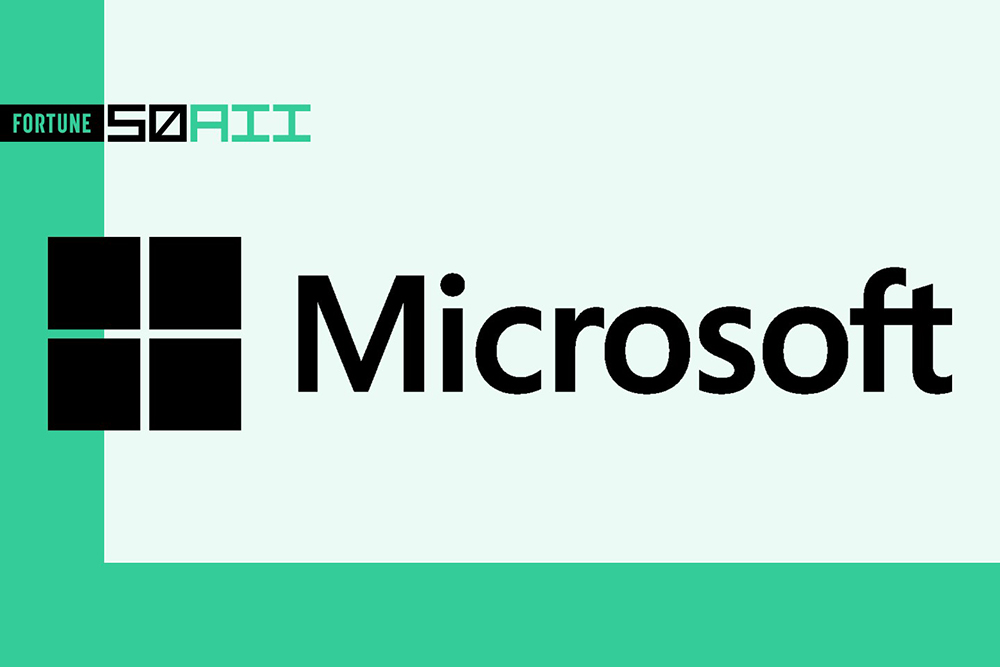
OpenAI研发出ChatGPT固然值得称赞,但如果没有当初微软数十亿美元的投资,断然不可能实现。据报道,到目前为止,微软已经向OpenAI投入130亿美元,并建立了全球最大的超级计算集群之一,以帮助OpenAI训练规模更大、能力也更强大的人工智能模型。微软的聊天机器人和搜索引擎Bing Chat根据OpenAI的模型构建,首次亮相以来用户使用该机器人已经聊天超过10亿次,能够根据用户提示转化图像的Bing Image Creator生成图像超过10万张。然而,必应结合人工智能并未实现微软搜索业务大翻身:必应在全球搜索市场份额依旧停留在3%左右,谷歌的份额为91%。不过对微软来说,生成式人工智能更重要的胜利在云业务方面。微软向Azure云客户提供OpenAI技术,推动该科技巨头销售额和利润增长超过华尔街预期,在截至今年9月的财季,生成式人工智能为云收入增长贡献约为3%。从PowerPoint到Outlook,微软在核心业务办公软件产品中均已经添加人工智能辅助功能,还增加了人工智能编码助理GitHub Copilot等产品。
Midjourney公司

教皇穿上时髦的白色羽绒服什么样?美国前总统唐纳德·特朗普被捕会是怎样的场景?现在有了Midjourney,人们再也不必将想象停留在脑海——只用几分钟就可以呈现在眼前。这家位于美国旧金山的研究实验室成立还不到两年,正是过去一年某些疯狂传播的人工智能生成照片的幕后推手,也是同名广受欢迎的文本图像生成系统开发方。用户提供文本提示,就能够使用Midjourney创建高度逼真的图像。不过该工具也是人工智能生成照片这一规则模糊新世界里的争议中心,有人批评称特朗普和其他名人以假乱真的图片可能用于散布政治虚假信息,艺术家们强烈反对使用受版权保护的作品培训Midjourney,也有人担心该工具会减少付费商业插图和摄影作品数量,削减企业将向艺术家和摄影师支付的图片费用。今年早些时候,Midjourney创作的一张照片获得了重要的摄影奖,当时多位摄影师十分愤怒。该实验室还因为审核标准而受到抨击,一些人批评其标准不一致。今年早些时候,创始人及首席执行官大卫·霍尔茨说:“我们正在听取专家和社区的大量反馈和想法,努力多思考。”去年霍尔茨曾经表示,该实验室创立时间并不长,就已经在文本转换图像领域取得了巨大进步,“目标是让人类更有想象力,而不是研发富有想象力的机器。”有趣的是,该实验室一直未接受风险投资。
英伟达(Nvidia)

英伟达成立于1993年,然而没有哪家公司像英伟达一样顺利乘上人工智能的东风。英伟达是人工智能硬件领域的霸主,其图形处理单元(GPU)芯片对大多数顶级人工智能模型训练至关重要(搜索巨头谷歌的模型除外;其数据中心大多使用自家芯片。)作为重要的人工智能公司,截至2023年11月2日,英伟达的股票在今年已经惊人地飙升289%。英伟达旗下还有广受欢迎且支持全面的CUDA软件系统,开发人员可以相对容易地对GPU编程。其芯片性能相当强劲,市场份额迅速壮大,其他芯片制造商只能在后面费力追赶。虽然英伟达最知名的业务是芯片,但近20年来该公司一直投资人工智能软件,仅过去十年就在研发上花费了300亿美元。英伟达开始直接向企业客户提供自己的人工智能模型和人工智能云服务,导致与一些最大客户,比如微软Azure等“超大规模”云提供商展开正面竞争。英伟达针对人工智能和生物技术推出了两项大语言模型云服务,开发者能够使用其大语言模型创建内容。
OpenAI公司
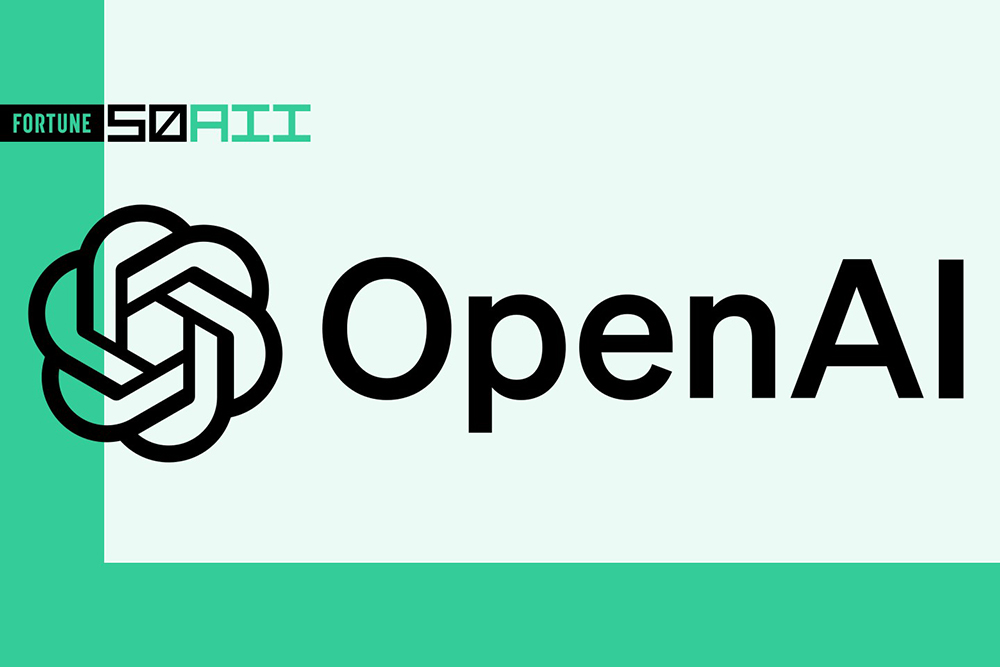
2022年11月,OpenAI推出ChatGPT,震惊了世界。转眼来到今年11月中旬,上周末疯狂的董事会大戏中联合创始人萨姆·奥尔特曼突然离职,再次震惊了商业和科技界。目前还不清楚OpenAI人事动荡的最终结果。正如《财富》杂志报道,正因为OpenAI的公司架构不同寻常,权力斗争才有可能出现。OpenAI成立于2015年,当初是非营利组织(后来增加了一个利润有上限的部门),由埃隆·马斯克(后来与公司决裂)和现任前首席执行官奥尔特曼等科技企业家组成。OpenAI与人工智能其他公司类似,目标是创建通用人工智能,即可以完成需要智力的任务的单独人工智能,有些跟人类水平相当,有些能够完成得更好。据报道,仅过两个月,ChatGPT的月活用户就达到1亿,成为截至当时增长最快的消费者应用程序。OpenAI的最新版本GPT-4 Turbo是迄今功能最强大的通用大语言基础模型,购买ChatGPT Plus服务的付费用户和API企业客户都可以访问。从写代码到写剧本,GPT-4 Turbo什么都会做,还能够创建图像,根据冰箱里食物的照片倒推食谱,还可以使用越来越多的互联网连接工具。GPT-4另一版本加入了微软的搜索引擎必应。OpenAI宏大的愿景也顺利募集到庞大规模的资金,其中仅微软就提供了130亿美元。不过该公司的创新也面临审查,包括政府的审查、审查其技术的能力,以及该用哪些法规管理和控制。该公司还面临很多侵犯版权和数据隐私泄露的诉讼。不管奥尔特曼和OpenAI团队其他成员的最终结局如何,可以打赌全世界必会关注。
Palantir公司
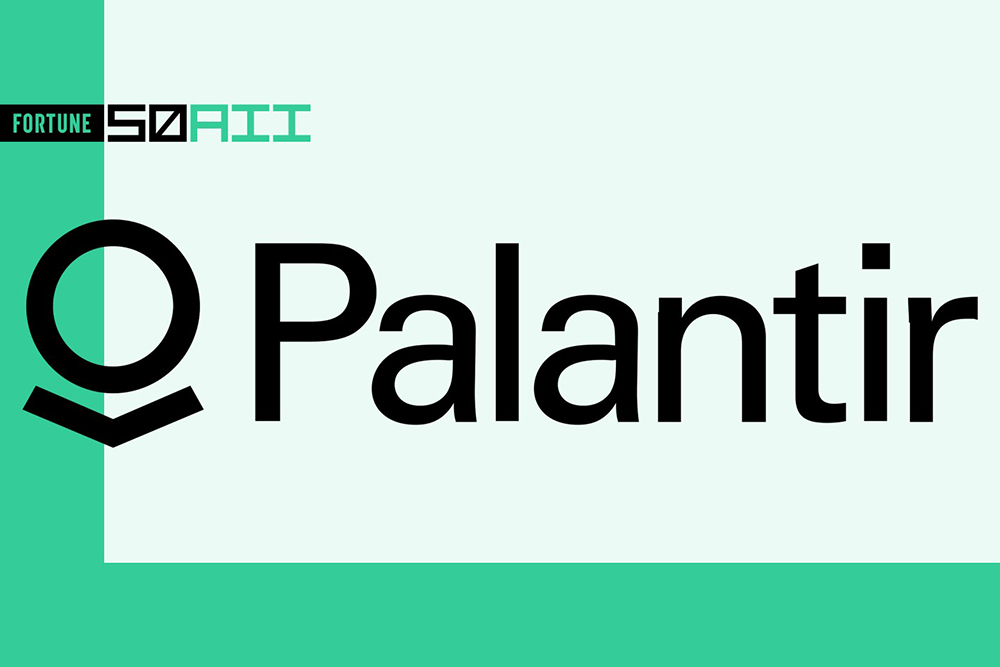
这家规模庞大的数据挖掘和软件公司成立于2003年,最大客户包括多家政府、军队和情报机构,PayPal的彼得·蒂尔也是创始人之一。Palantir在人工智能领域深耕多年;去年,乌克兰军队对抗俄罗斯的战争中就使用了其工具。最近人工智能大热,对这家总部位于美国丹佛的公司技术需求也同步激增。2023年4月,Palantir推出了人工智能平台,能够使用人工智能分析各种现实场景中的数据。今年早些时候,首席执行官及联合创始人亚历克斯·卡普表示,人工智能工具“市场无限”。由于对其平台需求激增,2023年前六个月,Palantir的股价翻了一番。该公司对未来几个月相当乐观,因为今年5月,公司预测每个季度都会盈利。尽管Palantir的人工智能工具功能强大,也有巨大潜力,但卡普坚持认为技术将继续“从属于”创造者,并不会成为独立的强大力量。与多家科技公司一样,Palantir采取了一系列成本削减措施,包括裁员约2%,在云技术方面降低支出等。
PathAI公司
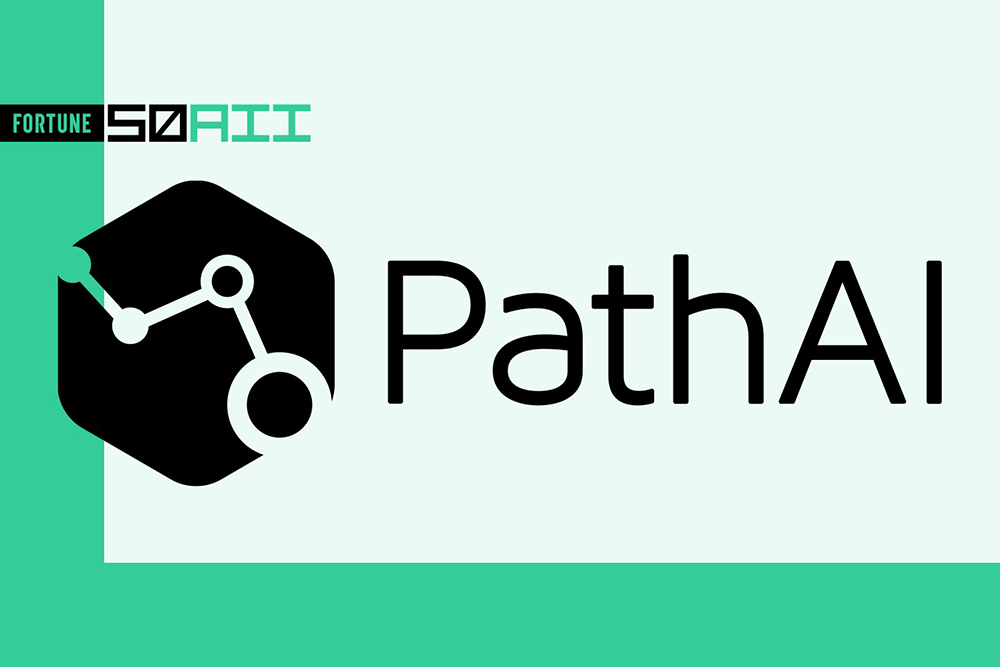
近几十年来,现代医学发展迅速,然而一些关键部分,例如医生检查细胞以诊断癌症等疾病的病理学仍旧依赖人眼,而人眼有时会犯错。这正是人工智能大显身手之处。总部位于美国波士顿的PathAI利用机器学习和人工智能算法帮助病理学家和研究人员更准确、更高效地分析细胞图像,发现新的生物标志物,协助诊断和未来的药物开发。该公司根据450多名病理学家的专有众包数据开发算法。PathAI称,超过45家制药和生物技术公司、3,500家供应商和50个实验室正在使用其技术。PathAI主要跟治疗癌症、肝病和肠道综合征的医生合作。首席执行官安迪·贝克本人也是经认证的病理学家,他预测10年后病理学家“不会像现在一样针对单个细胞计数或手动测量。所有低级别的工作都会提前完成,人工智能系统可以提供具体建议,‘诊断如下,推荐的护理方向如下。’”他对《财富》杂志表示。贝克还告诉《财富》杂志,PathAI的平台已经用于开发新药,处于临床试验各个阶段。General Atlantic和D1 Capital Partners等投资人也发现了PathAI技术的前景,为这家初创公司投入超过3.5亿美元。最近,该公司宣布了Nash Explore和IBM Explore等新产品,主要利用人工智能对八种类型的癌症和溃疡性结肠炎标志物实施分类。
Perplexity公司
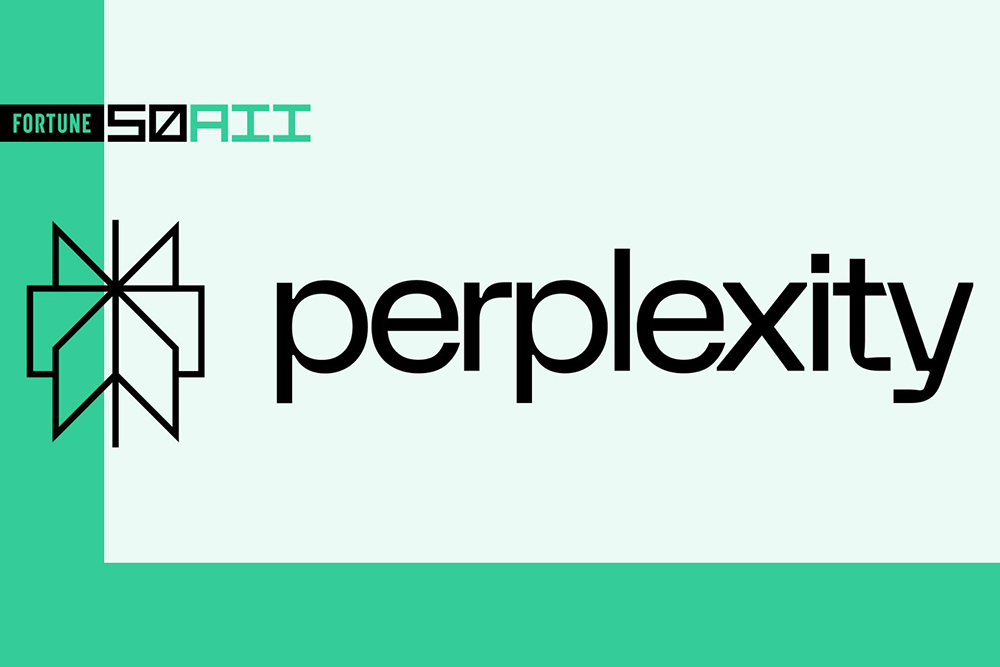
Perplexity总部位于美国旧金山,正在基于人工智能聊天努力构建堪与谷歌搜索和微软必应媲美的生成式搜索引擎。该公司创立于2022年,创始人包括阿拉温德·斯里尼瓦斯、丹尼斯·雅拉特、约翰尼·何,以及安迪·康温斯基,创始团队成员曾经在科技公司积累人工智能和基于机器学习的角色方面经验。该公司报告称,仅在今年2月,其月访问量就达到1,000万,独立访客达到200万人。该公司的界面更像是聊天屏幕,Perplexity声称其提供的答案准确得多,而且比其他一些聊天机器人搜索引擎产生幻觉的概率更低。今年3月,Perplexity在苹果(Apple)的iOS上推出平台,六天内下载量超过了10万次。斯里尼瓦斯表示,“Perplexity”不同之处在于,能够很好地平衡搜索结果排名和使用大语言模型生成总结的简短答案,答案均引用来源,用户也可以提出后续问题。该公司计划提供付费功能,以实现盈利。Perplexity在需求很高的人工智能搜索领域面临着诸多的竞争,不过该公司独特之处在于已经成功吸引图灵奖(Turing Award)的得主杨立昆和谷歌人工智能研究负责人杰夫·迪恩等行业资深人士注意。到目前为止,该公司已经融资超过2,800万美元,正在与Instacart和Klarna就将对话搜索整合到各自旗下平台展开谈判。
Pinecone公司

人类并非无所不知,但人类能够在教科书、在线数据库和百科全书中搜索,找到几乎无限量信息。同样,当用户需要人工智能模型中并未收纳的信息时,模型需要自行研究。这就是Pinecone和矢量数据库发挥作用的地方。创始人及首席执行官埃多·利伯缇表示,每个值得一试的人工智能应用程序都有可以用来定位查询信息的数据库,比如苹果股票的当前价格或银行客户名册上的非公开数据等。Pinecone为包括微软和CVS等大小公司开发基础设施,打造各自的矢量数据库,为其人工智能模型提供所谓的“长期记忆”。利伯缇称,2022年年初推出后运营第一年,Pinecone的客户群从零增长到170,销售额超过200万美元。Crunchbase的数据显示,2023年4月,该公司以7.5亿美元估值募集了1亿美元,这家总部位于美国旧金山的初创公司募集资金总额也达到1.38亿美元。
Profluent公司

Profluent公司的首席执行官阿里·马达尼表示,寻找能够治疗疾病的化学分子无异于海底捞针。马达尼称,就像使用大型语言模型培训ChatGPT预测问题的正确答案一样,有着类似设计的人工智能模型有望“学习自然的基础语言,继而解决人类健康和环境领域最具挑战性的问题。”他与加州大学旧金山分校(UCSF)、斯坦福大学(Stanford University)和业内的科学家一道,耗费了数年的时间研究这一问题,以测试人工智能设计的蛋白质是否有用。他们发明的这项技术可以打造功能性蛋白质,《自然生物》(Nature Biotech)期刊上发表的一则同行评议论文对这类蛋白质进行了详细介绍。这些人工智能设计的蛋白能够被用于医药发现以及其他生物科技部门。受此前景启发,马达尼创建了Profluent,而且是单枪匹马,其团队成员由生物和机器学习领域的科学家、技术人员和企业家构成。在2023年1月成立并获得Insight Partners领投的900万美元种子轮资金之后,该团队的阵容有望继续壮大。Insight Partners的董事总经理迪兰·莫里斯说:“即便蛋白质结构预测领域在人工智能的驱动下于近期出现了诸多突破,但Profluent的成就尤为卓著。”
Replika公司
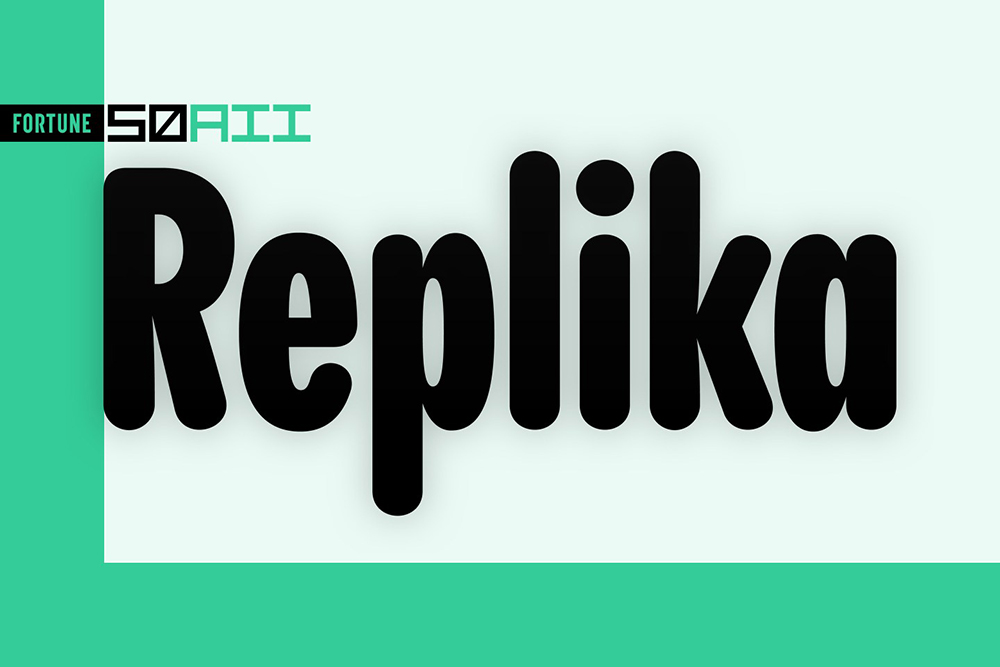
Replika的创始人及首席执行官尤金妮亚·库伊达表示:“我们正面临着最严重的孤独危机。”此前从事记者工作的库伊达希望借助Replika来对抗孤独。Replika是其创建的人工智能伴侣公司,成立于2017年,为用户提供了反乌托邦式(或乌托邦式,取决于个人看法)电影《Her》中的些许体验。在这部电影里,演员杰昆·菲尼克斯爱上了其人工智能助理。Replika用户可以打造其专属的虚拟朋友,定制其外貌,并长时间地与其聊天。截至2023年10月,这款应用程序的月用户达到了约200万,付费订阅用户达到了25万。Crunchbase称,公司从私人投资者手中筹集了近1,100万美元。与OpenAI这类人工智能大拿相比,这点资金可谓是不足为道。然而,Replika对虚拟友谊的推销引发了巨大的媒体轰动,尤其是有报道称,其用户倾向于将其人工智能朋友转变为互惠互利的人工智能朋友。2023年2月,公司取消了用户参与情色角色扮演的功能,但在社区的强烈呼吁下,公司又恢复了这一功能,并允许在2023年2月之前注册的用户继续与其聊天机器人卿卿我我。Replika还推出了Blush这款应用程序,专为希望与人工智能聊天机器人“约会”的用户打造。库伊达称,线上恋爱一开始也被人们贴上不正经的标签,但后来这种看法完全消失了,因此她认为,人们对与人工智能机器人谈恋爱的成见也会随着时间的流逝而消失。
Runway公司
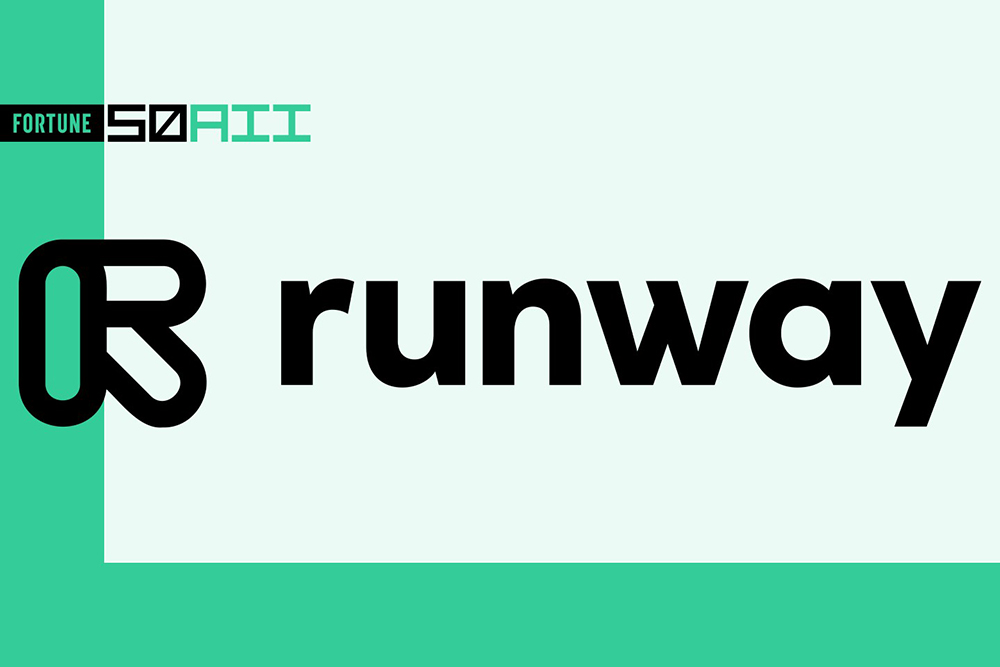
从过去到现在,制作一部电影是一个既耗时又耗资本的过程,对于一位刚入行的电影制片新手而言,独立地成功完成一部电影的拍摄是不可能的事情。然而,初创公司Runway的创始人将改变这一现状。这家公司因为其帮助打造大热文字转图像模型Stable Diffusion而声名鹊起。它最近推出了首款面向公众的文字转视频平台Gen-2。公司当前为制作公司、新闻刊物、独立内容创作者提供超过35款人工智能视频编辑工具。Runway还允许电影拍摄者和艺术家等创意人士生成所有的画面和场景。值得一提的是,多部电影的部分场景均采用了这项技术进行编辑,包括《瞬息全宇宙》(Everything Everywhere All at Once)。该公司的发言人称,该产品的一些客户包括纽百伦(New Balance)、哥伦比亚广播公司(CBS)和Vox。2023年6月,Runway在C轮扩展融资中筹集了1.41亿美元,估值达到了15亿美元,参与投资的公司包括谷歌、英伟达和Salesforce Ventures。公司最近公布了新的研究,详细介绍了在从文字生成图像过程中减少其模型偏见的方式,同时发布了“导演模式”,给予用户更多的场景生成控制权。
赛富时(Salesforce)
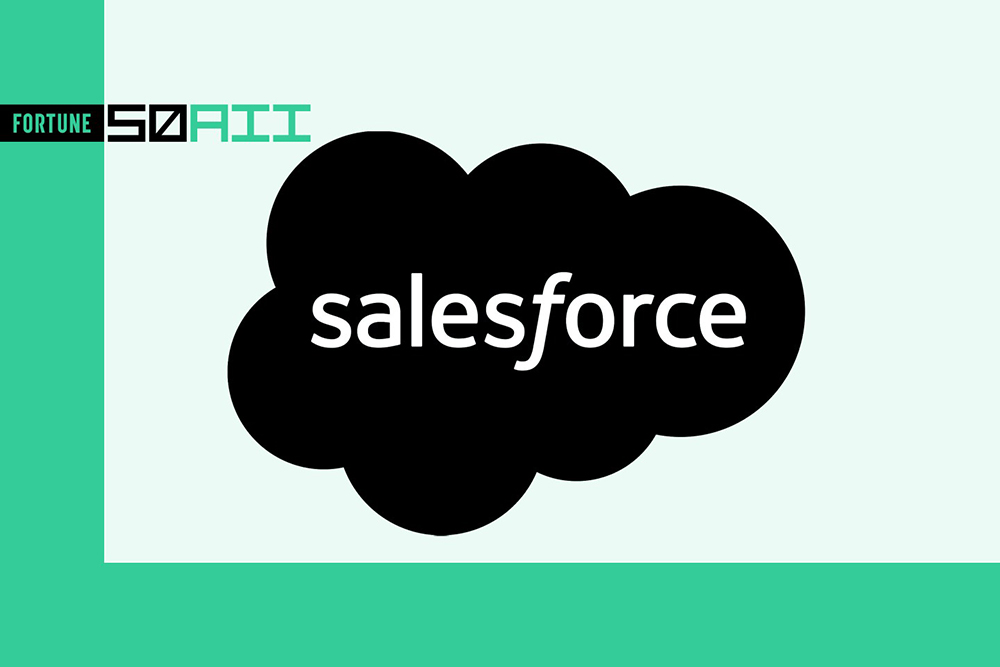
这家基于云的客户关系管理平台自2016年以来一直在通过其人工智能平台Einstein使用人工智能技术。为了给客户和雇员提供更多的服务,赛富时宣布,公司将把2023年3月发布的Einstein GPT与ChatGPT制造商OpenAI进行整合。Einstein机器人的一些主要用户包括一级方程式赛车(利用这项技术提供个性化的车迷体验),以及古驰(Gucci,采用该技术处理面向客户的业务)。赛富时还经营着一项专注于生成式人工智能的风投资本业务,公司借助这项业务计划在该技术领域投资5亿美元。在赛富时的人工智能扩张之旅中,数据安全一直是重中之重,只有这样,大型语言模型才不会在不经意间泄露客户的数据。这家公司采取了“人机回圈”的做法,也就是生成式人工智能将参与预防人工智能的滥用,并防止可能会对客户带来不利影响的人工智能幻觉。2023年3月,此前赛富时服务云业务负责人史宗玮被任命为人工智能业务执掌者。公司期待通过人工智能来推动业务增长,并已经引入了一整套工具来帮助企业运用生成式人工智能的力量,例如AI Cloud。马克·贝尼奥夫预计,短信息平台Slack将成为此次人工智能行动的重要组成部分。赛富时还开展了多项交易,比如收购美国加州的Airkit.ai公司,并拓展了其与亚马逊云科技(AWS)、谷歌和Databricks的合作关系,以进一步推动其策略。
Scale AI公司
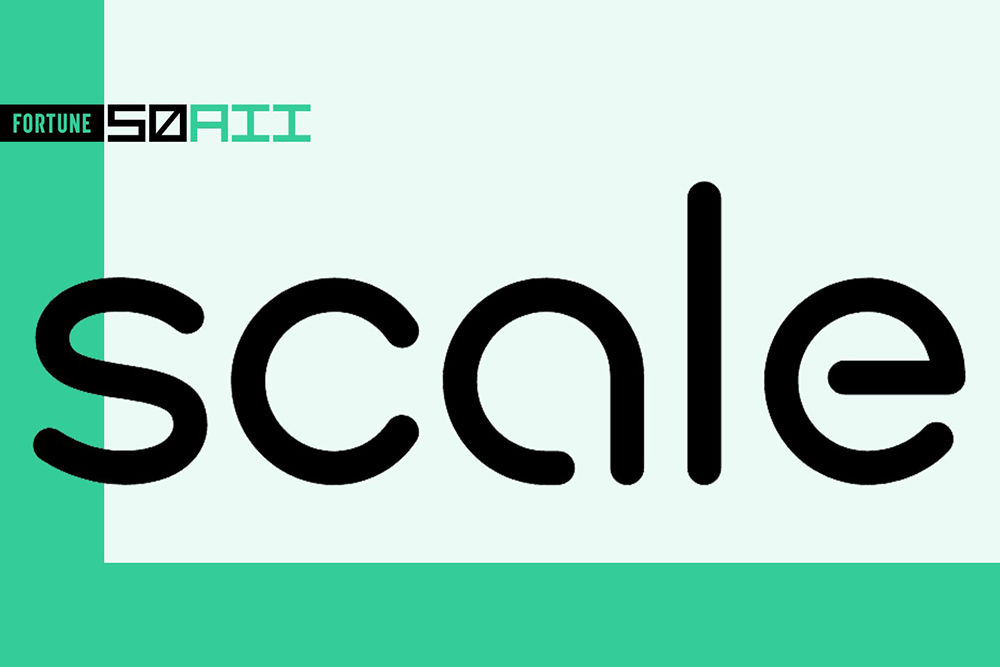
人工智能可以自动运行,但要达到像ChatGPT这类聊天机器人的先进程度,则需要人类的帮助,而且是海量人力的帮助。尽管OpenAI ChatGPT背后的大型语言模型(LLM)或Anthropic的Claude会自行学习语言背后的数据关联,但要引导和完善这些模型通过聊天机器人界面做出的反馈,各大公司采用了一个名为“基于人类反馈的强化学习”的流程。在这个流程中,人类评估者会判断模型的回答是否是有用、有益和“安全”(通常意味着不会让人反感或用于伤害他人)。然后,这个模型会因为给出近似于人类评估者所认为的好答案而获得奖励。然而,所有这一切都需要人力。Scale也因此而有了用武之地,其整个业务就是提供人工智能公司所需的数据标签。通常,这些制作标签的人都处于发展中国家,薪资很低。科技博客The Verge称,例如在肯尼亚,硅谷宠儿Scale AI付给人工模型培训员工的工资在1美元至3美元之间。(一位发言人称,这家公司在其经营国都会遵守最低薪资法律。)Scale由亚历山大·王创立于2016年,当时他还只有19岁。Scale是很多全球最先进人工智能模型背后的数据专家,包括多家自动驾驶汽车公司所使用的模型,并为国防决策提供支持。公司也因此而声名大噪。这些任务通常十分简单而且异常枯燥:发现零售产品的特征,或识别图中的物体。尽管Scale在一开始为自动驾驶算法标记图片数据中的物体,但它如今拓展了其培训内容,并面向广泛的人工智能模型,其客户包括Etsy、Instacart、Meta,当然还有OpenAI。借助人工智能热潮,公司共计筹集了约6亿美元资金,其最近的估值达到了73亿美元。然而,首席技术官维贾伊·卡鲁纳穆尔蒂表示,Scale也在开发自己的人工智能算法,并打算在寻找外行人之余聘请专业度更强的专家来培训人工智能模型,比如古亚拉姆语权威人士。“专家反馈对于帮助模型构建思维模式来说异常重要。”
Snorkel AI公司

Snorkel AI的联合创始人及首席执行官亚历山大·拉特纳说:“数据往往被人们忽视了,通常会被当作一个上游清洁流程。”尽管费力走过这片统计池沼并不是什么光彩的事情,但拉特纳的初创企业已经吸引了私营投资者足够多的目光,筹集了1.35亿美元,截至其2021年8月的最后融资轮,公司的估值达到了10亿美元。这家初创企业一开始是2015年斯坦福大学人工智能实验室(Stanford AI Lab)的一个研究项目。公司客户包括Wayfair、纽约梅隆银行(BNY Mellon)和纪念斯隆-凯特琳癌症中心(Memorial Sloan Kettering)。本质上,Snorkel AI使用人工智能来帮助培训人工智能。每一个人工智能模型都会从数据组学习,通常都是TB级的数据组。为了塑造这些数据组,Snorkel使用其自有的人工智能算法以及人力。像记者、网络技术人员、或医生这类专家会教授Snorkel的模型如何标记、清理和塑造数据。例如,一位医生会教人工智能如何更好地区分超声波,而且会教授数次。拉特纳称,此举能够加速数据的标记和编排,该流程比传统的技术快10倍至100倍。他说:“在过去九年中,这种不怎么体面的、混乱的数据清理工作一直都是我们的主要卖点。”
Stability AI公司

Stability AI最知名的壮举莫过于帮助打造了大热文字转图像生成系统Stable Diffusion。用户可以在其中输入提示,然后生成一幅他们心目中任何事物的人工智能图像。不过,这家公司还从事着大量其他人工智能项目,均为开源模型,意味着所有人都能够访问这些模型。今年春季,Stability发布了两款语言模型:StableLM与Stable Vicuna。公司称,还将发布其他两款图像模型。同时,公司还打造了一款文字转音频模型,名为Stable Audio,已经于今年9月发布。Stability很早便发声支持人工智能开源,也就是人们能够免费访问整个模型、所有其代码和权重数据,以及所有的输出内容,而且几乎没有限制。一些大投资者已经开始为这家初创企业的理念买单。PitchBook的数据显示,Stability已经筹集了超过1.1亿美元,投资者包括Coatue Management和Lightspeed Venture Partners等。公司称,超过20万创作者、开发人员和研究人员,以及7个研究中心都在使用Stability的产品。然而,Stability及其创始人伊马德·莫斯塔克最近也遭到了审查:据称,莫斯塔克以前就爱说大话。福布斯(Forbes)的调查发现,在莫斯塔克有关自己背景和Stability客户的多项言论中,一部分是假的,而剩余部分都存在夸大之处。据称,诸多资深高管和人工智能专家在今年离开了公司。然而,公司称整体员工数在增加,而且其收入基数在今年翻了10倍多。Stability在今年11月初又迎来了好消息,因为莫斯塔克于X上发布:“在上个月,我们靠自己完成了战略融资(即将发布声明)。”彭博社随后报道称,Stability获得了5,000万美元的债务融资,由英特尔领投。不过,彭博社还指出,Coatue Management和Lightspeed与莫斯塔克在Stability的管理和发展方向上产生了分歧,并于随后拒绝向该公司提供进一步的融资,同时放弃了其在公司董事会的席位。
Sudowrite公司

“这么说可能有争议,但我认为生成式人工智能的日常用户不应该使用Sudowrite。”Sudowrite投资方之一、Garuda Ventures的联合创始人里希·塔帕里亚表示。不过,塔帕里亚的观点进一步证明了Sudowrite更重视为专业作家服务,对市场规模有限则没有那么关注。Sudowrite自称创意写作的人工智能平台。其设置有助于剧本和小说创作,也能够完成检查情节节奏和改写对话等特定任务。不同于生成式人工智能常见的满屏文字,软件布局添加了人物图片和交互式时间线等视觉元素,方便整理大纲。
Sudowrite的联合创始人阿米特·古普塔和詹姆斯·余在写作小组中相识,当时两人都卖掉了之前的公司在休假。古普塔表示,目前该平台已经有1.2万名付费用户,每月的订阅费用从10美元到100美元不等。古普塔对《财富》杂志表示,目前Sudowrite只募集300万美元,还没有继续募资的计划。
Synthesia公司

在人工智能热潮中,人工智能视频创作平台Synthesia一跃成为独角兽。该公司创立于2017年,四位创始人曾经在伦敦大学学院(UCL)、斯坦福大学、慕尼黑工业大学(TUM)和剑桥大学(University of Cambridge)求学。其产品利用人工智能主要为教学视频创建视频形象,为企业客户节省了时间和制作成本。截至2023年6月,该平台已经为5万家企业生成超过1,200万个视频,其中包括近一半《财富》美国100强企业,相关企业使用Synthesia在几分钟内就可以制作产品营销和教学视频。公司业务增速高达456%,难怪在Accel领导的C轮融资中顺利筹集到9,000万美元,还获得英伟达风投部门的投资。“Synthesia最重要的理念之一是实用性而非求新。虽然过去六个月出现了因为炒作而造成的波动,但我认为这一轮热潮和投资者的兴趣在很大程度上证明了人工智能技术背后强大的商业基本面。”首席执行官及联合创始人维克多·里帕贝利告诉彭博社。今年6月,Synthesia的C轮融资募集了9,000万美元,其中英伟达的风投部门对其估值为10亿美元。颇具争议的是,根据《连线》(Wired)杂志报道,该公司创建的一些高度逼真的形象,特别是一个名为杰森的虚拟新闻主播,以及名叫达伦和盖瑞的形象在马里、布基纳法索、委内瑞拉被用于政治虚假信息宣传活动,还出现在美国加州一个加密货币骗局广告里。里帕贝利告诉《连线》杂志,后来该公司做了一些调整,尽力防止虚拟形象被用于虚假信息宣传,具体举措包括从面向消费者的账户中屏蔽与新闻相关的剧本,以及聘请内容审核员审查用以生成虚拟形象的剧本等。
Together公司
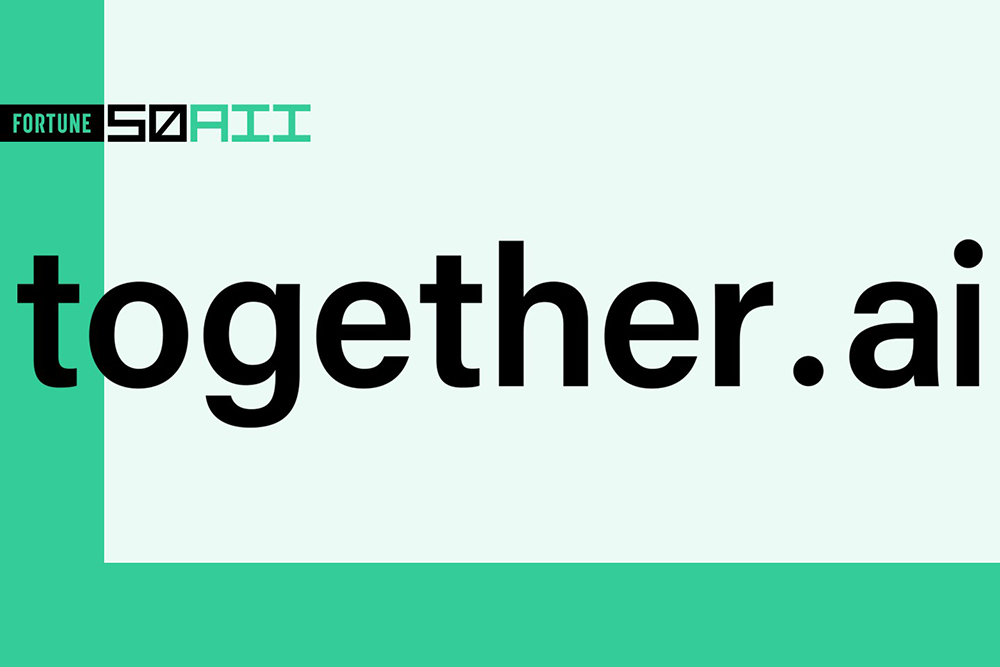
人工智能需要堪比成千上万台电脑的庞大计算能力,如果使用云计算,亚马逊云科技、谷歌云(Google Cloud)和微软Azure就都是很难绕过的巨头。联合创始人及首席执行官维普尔·韦德·普拉卡什表示,为挑战巨头的主导地位,Together“汇聚”小型云,为人工智能研究人员和开发人员提供同等水平的算力,成本可能只有云计算巨头的五分之一。该公司由斯坦福大学的教授和科技行业资深人士领导,2023年5月宣布获得2,000万美元的种子资金。Together将开发者的计算需求外包给其他数据中心,甚至是以前的比特币(Bitcoin)矿工。公司还为普通开发者和想从头开始搭建模型的人提供了全面的人工智能开发平台。“OpenAI和谷歌的资源已经够集中了。”普拉卡什说。“所以我认为,去中心化、更少锁定的生态系统是有价值的。”
Tome公司
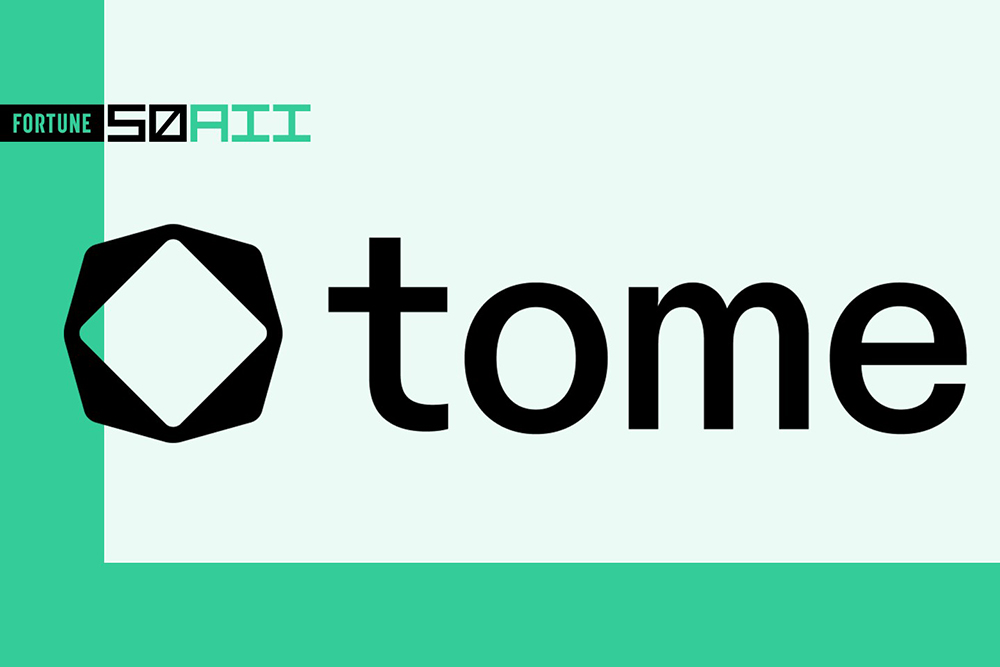
想象一下PowerPoint——不过加上了人工智能。这就是2022年9月成立的初创公司Tome向投资者和客户推销的内容。截至2023年7月,该公司已经吸引到1,000多万用户,并以最新的3亿美元估值募集到8,100多万美元。归根究底,Tome由两位曾经在Meta工作的主管创立,使用Stable Diffusion、ChatGPT等大模型,还有自己的专有人工智能为用户生成自定义演示和图像。不过该初创公司的联合创始人及首席执行官基思·佩里斯称,他的愿景可不只是制作幻灯片。“就像湿陶土,能够做成任何东西。”他谈到Tome的产品时说。佩里斯指出,创建者不仅可以建立宣传平台推销最新的人工智能工具,还能够创建旅行指南、简历或小型网站。之前,Tome依赖人工智能模型生成普通的文本和图像,但一位发言人表示,今后Tome将越来越多集成外部数据,比如用户谷歌账户里的文件,从而进一步完善人工智能生成的幻灯片。
You.com公司

早在最近一波人工智能热潮席卷全球之前,有家公司就已经测试过人工智能聊天搜索。提示:You.com。该公司全新的搜索引擎使用生成式人工智能从事网络搜索、内容和图像创建,而且非常重视用户数据隐私。You创立于2020年,创始人理查德·索切尔曾经在赛富时担任首席科学家,赛富时的首席执行官马克·贝尼奥夫的Time Ventures牵头提供了2,000万美元种子资金。随后,该公司获得了2,500万美元A轮融资,由Radical Ventures领投,Salesforce Ventures也追加了投资。1996年以来,该公司的域名一直归贝尼奥夫所有且未被使用。You.com的搜索栏似乎跟谷歌相似,不过相似之处也仅限于此。此前索切尔就曾经指谷歌保护隐私的手段“相当糟糕”。该公司在搜索和隐私领域还有几家竞争对手,比如DuckDuckGo,不过You将数据隐私和生成式人工智能功能结合的做法脱颖而出。2023年6月,该公司为推动产品变现推出了名叫YouPro的付费订阅服务,付费用户每月支付9.99美元,便可以无限量地访问人工智能聊天和其他生成式人工智能功能,而且没有广告。今年9月,该公司在WhatsApp上推出了一项人工智能搜索功能,正式把对话搜索功能整合入全球最流行的通讯应用程序之一里。(财富中文网)
译者:Biz、Feb
人工智能是否会创造一个没有人类工作的世界?计算机能否达到人类的智力水平?OpenAI的闹剧会迎来怎样的结局?人工智能领域的戏剧性变化证明,读者和投资者需要密切关注这个领域,因为这个领域瞬息万变。委婉地说,与人工智能技术有关的预测、想法和执行五花八门。但对于这个刚刚起步的行业,我可以确信的一点是:投资者和大大小小的公司都在认真对待它。微软(Microsoft)因为与OpenAI的关系,是主要参与者之一。该公司最近发现,在人工智能领域每投资1美元,就能够获得3.5美元的回报。Crunchbase表示,今年在美国初创公司投资的每4美元中,就有1美元投给了人工智能公司;现在已经有约200家人工智能独角兽公司。但凡是经历过炒作周期的人都知道,即使在最热门的行业,惨败的例子也远远超过大获成功的公司的数量。为了评选首期《财富》全球人工智能创新者50强榜单,我们征求了风险投资家、行业分析师和我们强大的人工智能专家团队的意见,评选出位于人工智能创新前沿的公司。我们确定的一点是:这些公司所做的工作不仅会塑造人工智能的未来,还会影响我们生活的世界。
Abnormal Security公司
当ChatGPT在2022年11月发布之后,伊凡·赖泽尔的第一反应是:这是一项惊人的技术。他回忆道,然后他的想法是:“天哪,坏人也会得到这项技术。”2018年,赖泽尔与桑杰伊·杰亚古玛合作创建了Abnormal Security,以帮助检测和防止电子邮件网络攻击。该公司使用人工智能和机器学习进行行为分析,分析Slack等公司平台的数据,以帮助发现利用社交工程的电子邮件诈骗,并确定信息是由真实的员工发送,还是由黑客假冒员工发送。赖泽尔表示,ChatGPT和其他聊天机器人的爆火,增加了电子邮件攻击的复杂性。但Abnormal计划与电子邮件攻击长期作战:今年早些时候,该公司整合了职场软件Slack、Zoom和Microsoft Teams,并计划增加赛富时(Salesforce)或ServiceNow等其他平台。该公司称,其客户包括12%的《财富》美国500强公司。最近,公司宣布年度经常性收入突破了1亿美元。该公司还吸引了大量投资:Abnormal从Insight Partners、Greylock Partners和Menlo Ventures等投资者融资超过2.8亿美元,估值达到40亿美元。多年来,赖泽尔一直没有认真考虑IPO计划。他指出,公司目前的主要任务是更好地保护客户,而且公司可能在几年内上市。
Absci公司
2011年,Absci的创始人及首席执行官肖恩·麦克莱恩并没有打算创建一家利用人工智能来开发药物的公司。他计划寻找一种设计蛋白质的方法,以找到更多有效的治疗药物。但他最终开发出一种收集基于蛋白质的数据的技术,大语言模型可以利用这些数据预测最有效的解决生物学问题的药物。湿实验室能够在六周内生成和测试300万个人工智能生成的药物设计。该公司创造的一种免疫抗体(麦克莱恩拒绝透露这种抗体针对的疾病),预计可以在2025年投入使用。Absci在2021年上市,股价在一周内从16美元上涨至28.48美元,公司估值超过20亿美元。但这是其股价的最高点,因为在随后一年股价暴跌,自2022年5月以来一直低于每股5美元。2022年8月,该公司经过一次重组,并进行了裁员。
Adept AI公司
Adept AI是正在开发下一代人工智能商务助理的公司之一。人工智能不仅能够生成文字,还可以使用高管电脑上的所有软件,为高管执行任务和分析。位于美国旧金山的初创公司Adept AI将其联合创始人、谷歌(Google)前研究员大卫·栾、尼基·帕玛尔和阿希士·瓦斯瓦尼,称为人工智能的忠实支持者。帕玛尔和瓦斯瓦尼是谷歌Transformer模型发明团队的成员,他们在2022年离开Adept,创立了另外一家初创公司。Transformer模型是大语言模型革命的基础。但Adept依旧可能获得巨大的成功。该公司在一年前低调成立,共获得了4.15亿美元风险投资。
Adobe公司
创意设计与编辑巨头Adobe在2022财年的营收达到176.1亿美元。该公司在生成式人工智能领域引起了轰动。该公司有超过29,000名员工,你可能会认为该公司对人工智能的开发会因此变得缓慢。但其首席技术官伊利·格林菲尔德表示,该公司很快利用多年的数据收集和研究,在一年内就推出了Firefly。
这款工具有两个特点。第一,它能够与创意人士已经使用的工具进行整合。Photoshop的用户可以使用Generative Fill进行编辑,根据文本生成图像,例如改变衬衫的图案或者在照片中添加一个新的物品等。第二,该公司称,生成的图片能够安全地用于商业用途,Adobe还承诺就任何版权侵权索赔向用户提供赔偿。Firefly使用该公司庞大的Adobe Stock内容库进行训练,该公司称,其有权利使用这些内容训练人工智能(尽管一些Adobe Stock的创作者抱怨称,他们在上传图片时并未意识到他们对Adobe有过这种授权)。Adobe正在考虑把生成式人工智能整合到Creative Cloud中的更多工具里。
今年10月,该公司发布了Firefly Image 2,这款工具提升了人工智能生成的图片的质量,并允许用户选择他们希望生成的图片的特定风格。格林菲尔德表示,下一个前沿领域是让艺术家接受人工智能。在他设想的世界里,艺术家可以用自己的作品来训练人工智能,并将其对外授权。
Aligned AI公司
Aligned AI的内容审查过滤器击败了OpenAI,从而一举成名。据《财富》杂志的杰里米·卡恩报道, Aligned AI捕获了97%的有问题回答,而OpenAI的捕获率为32%。之后,它率先证明其人工智能模型能够基于简单的视频游戏环境CoinRun,掌握具有挑战性的人工智能安全和校准基准。安全从一开始就是Aligned AI的招牌。Aligned AI的联合创始人及首席执行官瑞贝卡·戈尔曼说:“你可以真正从逻辑的角度思考人工智能带来的危险,并创建技术解决方案来解决这个问题。”戈尔曼和斯图尔特·阿姆斯特朗于2021年12月在英国牛津创立了这家公司,他们的想法是人工智能的能力和安全不应该是一场零和游戏。相反,他们相信,人工智能越安全,就会变得越有效,因为最终用户会更信任它。
该公司仍然处于发展初期,在种子轮之前融资600,000英镑(约合762,000美元),仅有六名员工。它目前正在加快招聘技术人员,希望与人工智能行业的参与者建立合作关系,为他们提供安全功能。戈尔曼表示,Aligned的目标是与主要行业参与者合作,支持人工智能的每一种使用案例,比如质量保证或机器人技术等。
对齐研究中心(Aligned Research Center)
作为榜单上的少数几家非营利组织之一,对齐研究中心由OpenAI的前员工保罗·克里斯蒂安诺成立于2021年6月,其宗旨是研究“对齐问题”,即如何将人工智能的行动与人类的价值观保持一致。随着人工智能系统日益接近通用人工智能(AGI),这个任务变得更加艰巨。通用人工智能模型执行所有认知任务的效果,与人类相当甚至比人类更出色。如果人工智能开始产生自己的意图,即便这些意图只是实现人类指定的主要目标所需要的子目标,那么对齐就将变成一个紧迫的问题。ARC与OpenAI和Anthropic等大型人工智能公司合作,通过观察模型对恶意行为者可能使用的提示词的反应,对模型进行“红队”测试,并观察模型本身是否会有潜在危险性的自主行动,例如欺骗或自我复制等。OpenAI在发布GPT-4之前,首先授权ARC访问该模型。ARC测试了该模型是否会在服务器上隐藏自己,或者向人类撒谎。测试结果没有发现第一种行为,但确实发现了撒谎行为。ARC认为目前的人工智能系统并不会像最激烈的“人工智能末日论者”所担心的那样,威胁人类生存,这能够让我们睡得更加安稳。但这种状况或许不会持续太久。
Anthropic公司
谁可以与OpenAI无处不在的聊天机器人ChatGPT相匹敌?一个由OpenAI的前研究人员组成的团队希望答案是Anthropic。包括达里奥与丹妮拉·阿莫迪兄妹在内的OpenAI的前研究主管,于2021年创立了Anthropic,旨在创建最安全的人工智能系统——这些系统不会像一些聊天机器人(包括ChatGPT)那样,散播错误信息或危害性回应。Anthropic在2023年年初发布了聊天机器人Claude,它与同行相比有一些显著的不同之处:该公司声称这款聊天机器人“不太可能产生危害性输出”,并描述其目标是做到有用、无害和诚实。该初创公司最近还把Claude能够处理的单次查询中的单词数量扩展到75,000个,相当于许多小说的长度。该公司表示,这让Claude可以准确地分析财务报表或法律合同等技术类文件。(为了对抗Anthropic的优势,OpenAI最近也扩大了ChatGPT能够处理的单词数量。)市场推广负责人桑迪·班纳吉对《财富》杂志表示,从Y Combinator的初创公司到Zoom这样的大型上市公司,Anthropic有“成千上万的”客户在使用Claude。该公司最近从亚马逊(Amazon)获得40亿美元的巨额融资,而且有媒体称,该公司正在与谷歌谈判,计划再从谷歌融资20亿美元。除此之外,该公司之前已经从谷歌和Menlo Ventures、Salesforce Ventures等投资者融资5.5亿美元。
Anyscale公司
OpenAI、Instacart、Netflix、Cohere和Uber有什么共同之处?据四年前创立的初创公司Anyscale表示,它们都使用了由该公司开发的开源软件基础设施架构Ray。Ray可以帮助人工智能的开发人员扩展其网络。近年来,创建和运行人工智能模型需要的计算日益增多,这意味着在服务器群集之间分配训练、调整和运行大规模人工智能系统所需的计算负载,可能耗时费力。Anyscale的首席执行官及联合创始人罗伯特·西原告诉《财富》杂志:“从事人工智能研究的人,要花费50%的时间来设置设备集群和配置资源,这种情况非常普遍。”他们表示,Ray的作用是处理基础设施方面的问题,能够把训练和部署人工智能模型所需的时间缩短到几分钟。Ray最初是由加州大学伯克利分校(UC Berkeley)RISELab的研究人员开发的开源项目,后来成为Anyscale的主要产品。该公司现在获得了安德森·霍洛威茨(Andreessen Horowitz)、恩颐投资(NEA)、Addition和英特尔投资公司(Intel Capital)等顶级硅谷投资者的投资。西原表示,过去六个月以来,人们对构建人工智能系统的兴趣飙升,对Ray的需求也随之增加。他说他们注意到一个重要趋势:越来越多的没有机器学习专业知识的普通开发人员希望开发人工智能应用。他表示对Anyscale而言,这意味着“这个市场的规模更加庞大,不止局限于机器学习专家”。目前,Ray是一个免费使用的开源平台,西原估计有上万家公司正在使用Ray。至于西原本人,在谈到最近几个月的日常生活时,他说:“我们现在变得更加忙碌。”
百度
截至2023年11月,“中国版谷歌”百度在纽约证券交易所(New York Stock Exchange)的市值约为380亿美元。百度以中文优化的搜索引擎而闻名,同时它还涉足一系列其他技术领域,尤其是人工智能。百度已经训练出一个名为文心一言的聊天机器人,与ChatGPT竞争,文心一言的英文名称来自《芝麻街》(Sesame Street)上著名的木偶角色。(在人工智能开发人员的内部玩笑中,许多模型都借用了木偶角色的名字。)2023年10月,百度发布了文心一言4.0,并声称该模型处理许多中文特定任务的表现优于OpenAI的聊天机器人,并且在复杂度和功能方面可以与ChatGPT相媲美。此外,百度除了在其搜索引擎、云计算部门和其他产品中使用机器学习外,还在开发自动驾驶算法,并拥有一支无人驾驶的“机器人出租车”车队,它们在北京和其他三个中国城市车水马龙的街道上行驶。
彭博社(Bloomberg)
金融资讯巨头彭博社(Bloomberg)在今年3月出于研究的目的,发布了BloombergGPT。该模型有7亿个数据单位,但目前用于训练模型的数据单位只有6,000亿。据彭博社表示,BloombergGPT执行金融特定任务和一般语言理解任务的表现,优于类似的人工智能工具。训练模型的数据有一半以上来自专有信息,因此BloombergGPT能够为公司未来如何使用人工智能提供一个模板。彭博社使用自然语言处理,帮助其金融数据的用户和媒体寻找必要信息,获得交易见解,例如市场情绪分析等,该公司在这方面已经遥遥领先。彭博社还率先使用人工智能撰写头条新闻和公司业绩报道。
C3.ai公司
现在,人工智能成为热门话题。但C3 AI早在十多年前就开始开发这个市场。今年3月,C3 AI发布了C3 Generative AI,成为最早提供可以在企业内部信息系统中运行的生成式人工智能解决方案的公司之一。目前,乔治亚太平洋公司(Georgia-Pacific)、Flint Hills Resources公司、纽柯钢铁(Nucor)、Pantaleon、联合爱迪生(Con Edison)以及美国国防部(U.S. Department of Defense)下属的美国空军(U.S. Air Force)和导弹防御局(Missile Defense Agency)等部门,都采用了C3 Generative AI项目。该公司表示,导弹防御署使用这项技术,能够将飞行测试分析和报告时间从一两个月缩短到一周。总部位于美国加州雷德伍德城的C3 AI,由亿万富翁、企业软件专家汤姆·西贝尔运营。从广义上来说,该公司为制造业、金融服务和石油天然气等行业提供人工智能工具。该公司参与了欧洲公用事业公司意大利国家电力公司(Enel)、杜克能源(Duke Energy)和壳牌(Shell plc.)等公司的多个大规模能源优化和预防性维护项目。该公司成立于2009年,并于2020年12月上市。C3 AI在2023财年总营收2.668亿美元,较2022财年增长了5.6%。
Cerebras公司
Cerebras的联合创始人及首席执行官安德鲁·费尔德曼表示,该公司的旗舰计算机芯片有“餐盘”那么大。他声称这是史上最大的芯片。这款大型芯片旨在使运行当今的大型人工智能模型变得更容易,无需担心在多个图形处理单元(GPU)分配负荷。自2016年成立以来,Cerebras的业务不再局限于芯片制造,而是开发了自己的定制服务器,并且目前正在开发自己的开源人工智能模型和数据集,希望在人工智能领域取得成功。在这个过程中,截至2021年11月的上一轮融资,该公司从私人投资者获得了约7.2亿美元投资,估值超过40亿美元。将近两年后的2023年7月,公司推出了由九台“超级计算机”组成的网络Condor Galaxy,这些计算机由餐盘大小的计算机芯片驱动,其客户包括新冠疫苗的开发商阿斯利康(AstraZeneca)和匹兹堡超级计算中心(Pittsburgh Supercomputer Center)。虽然Cerebras经常宣传其芯片和数据中心的规模,但首席执行官费尔德曼表示,他的公司并没有停止增长:“我们正在开发更大、更快的超级计算机,以帮助客户更快地完成工作任务。”
Character. AI公司
如果你可以跟埃隆·马斯克对话会怎么样?或者与《哈利·波特》(Harry Potter)里的德拉科·马尔福对话会怎样?Character.AI让用户能够与亿万富翁、名人以及历史人物和虚构角色聊天。这款在线生成式人工智能聊天机器人利用深度学习算法和大型语言模型,以模仿角色在真实生活中的口吻,与用户进行对话。2021年,谷歌的前工程师诺姆·萨泽尔和丹尼尔·德·弗雷塔斯共同创立了Character.AI,两人分别担任这家初创公司的首席执行官和总裁。今年年初,该公司在A轮融资中融得1.5亿美元,估值为10亿美元,此轮融资由安德森·霍洛维茨领投。据路透社(Reuters)报道,该初创公司正在洽谈以50亿美元估值进行风险融资的事宜,融资的对象包括公司高管的前雇主谷歌。Character.AI可以免费使用,但用户能够通过每月支付9美元的订阅费,来跳过虚拟队列,直接与角色对话。该公司称在聊天机器人发布后的前六个月,其网站的月访问量达到1亿次。
Cohere公司
虽然相比OpenAI和Anthropic等竞争对手,Cohere的知名度不高,但作为由谷歌大脑(Google Brain)的团队成员创建的人工智能模型开发商,Cohere致力于成为服务企业的人工智能平台。企业可以使用Cohere开发的大语言模型,将人工智能融入文案写作、搜索、文本和网页总结等功能。该公司已经成立了四年,其产品受到了Spotify、甲骨文(Oracle)和Jasper等公司的青睐。但把敏感数据输入到大语言模型,引发了对隐私问题的广泛担忧。Cohere表示,为了防止公司的专有数据落入不当之人的手中,它直接向企业提供服务,无论是使用企业现有的云服务提供商还是在现场为企业提供服务,从而使企业能够控制自己的数据。今年6月,Cohere宣布在C轮融资中融得2.7亿美元,投资者包括Index Ventures,以及英伟达(Nvidia)、甲骨文和赛富时等科技、软件和芯片巨头。今年年初,该公司还推出了其企业人工智能助理Coral。Cohere联合创始人及首席执行官艾丹·戈麦斯在一份文件里对《财富》杂志表示:“我们的模型要保持领先,这是一个巨大的挑战。”但是,“这正是从事这个领域的工作激动人心的时刻。”
Conjecture公司
Conjecture的联合创始人及首席执行官康纳·利希,担心人工智能会对人类构成生存威胁,因此他主张严格限制开发更强大的“前沿”人工智能模型,他已经成为这方面的意见领袖之一。但与此同时,总部位于英国伦敦的Conjecture正在竭尽全力研究如何控制大型人工智能模型,并为自己开发功能强大的人工智能系统。Conjecture成立于2022年3月,相对而言,它是人工智能竞赛的新人。该公司获得了一批投资者的支持,包括Github的前首席执行官奈特·弗里德曼和特斯拉(Tesla)的前人工智能高级总监丹尼尔·格罗斯。除利希以外,该公司的其他创始人包括希德·布兰科和加布里埃尔·阿尔福。他们拥有丰富的背景——利希曾经反向工程了GPT-2,并与布莱克合作创建了人工智能研究实验室EleutherAI,而阿尔福创建了两家区块链初创公司。Conjecture认为,现有的大语言模型是一个黑匣子,人类除了提供数据之外几乎无法控制,该公司希望提供一种替代选择,让系统变得可以解释、有边界和可靠。迄今为止,这家人工智能公司已经融资2,500万美元。
Databricks公司
总部位于美国旧金山的企业软件公司Databricks成立已经有十年之久,但现在它把人工智能作为核心业务。该公司创建了自己的低成本生成式人工智能聊天机器人——Dolly——开发成本只有30美元。Dolly 2.0是一个开源模型,这意味着任何组织都能够把该公司创建聊天机器人所使用的训练集和数据,进行商业应用。该公司希望可以启发其他人开发自己的生成式人工智能技术。Dolly在准确度或功能广度方面不及ChatGPT。但它的目的是证明,一家公司不需要耗费巨资,也不必拥有海量数据,就能够开发出一款基本的、没有花哨功能的聊天机器人。2023年5月,该公司对其9,000多名客户进行了调查,了解他们如何使用人工智能。调查发现,该公司的数据和人工智能平台Databricks Lakehouse的需求持续增加。一个月后,它以13亿美元的价格收购了创新平台MosaicML。该平台支持用户创建自己的生成式人工智能模型。Databricks还在今年9月的I轮风险资本融资中,额外获得5亿美元资金,英伟达成为其新战略投资者。
Eleuther AI公司
2020年5月,OpenAI发布了一份研究报告,详细分析了为什么人工智能语言模型规模越大,能力越强。EleutherAI的执行董事斯特拉·彼得曼说:“据我们了解,唯一的限制是你愿意投入多少资金。”与此同时,OpenAI只允许经过批准的研究人员使用ChatGPT-3。有些人对此感到沮丧,于是在一个Discord服务器上,他们组成了一个团体,试图复制OpenAI的成就,这个团体最终命名为EleutherAI。彼得曼表示:“社会有与技术互动的机制,但如果技术被封锁,这些机制就很难实施。”这个团队的成员来自计算机科学、哲学和英语等诸多领域。很快他们就发布了一系列大语言模型。2022年年初,EleutherAI推出了GPT-NeoX-20B,这是当时公开发布的最大的大语言模型。之后,这个研究团体开始把重心从建立大型开源模型,转向其他人工智能研究领域,包括深入研究人工智能的局限性和风险。彼得曼在谈到EleutherAI的影响时称:“如今,有意提供开源模型的公司越来越多。”
Eleven Labs公司
ElevenLabs的联合创始人马蒂·斯塔尼舍夫斯基说:“假设有这样一部电影,在所有的场景和对白中,都有一个声音在用波兰语讲述着内容。可以想象,这是一种非常糟糕的体验。”斯塔尼舍夫斯基和他最好的朋友、另外一位联合创始人皮奥特·达布科夫斯基就经历了这个问题。2023年1月,他们结合在Palantir和谷歌积累的机器学习经验,推出了人工智能驱动语音软件,能够将文本转换为语音。用户可以设计自己的人工智能语音,但真正引起人们注意的是,他们的软件在从短音频样本中克隆人声方面表现非常出色。虽然ElevenLabs的条款和条件规定,人们必须获得许可才能够复制他人的声音,但还是有人使用该软件创建了未经授权的名人深度伪造音频,比如让本·夏皮罗和艾玛·沃特森等名人说出冒犯性言论,而且人们相信可能有犯罪分子利用这款软件帮助实施一系列诈骗,之后该软件引起了关注。斯塔尼舍夫斯基表示:“我们绝不支持这种行为,我们将采取行动。”他还指出,平台上的所有音频文件都是可以追溯的。公司采取了其他安全措施,以验证用户身份,并确保他们克隆的是自己的声音。ElevenLabs坚称,其软件真正的杀手级应用是,帮助创作者、企业和有声读物出版商扩大内容的地理覆盖范围,使其能够把口语翻译成20多种语言,而且保证原始音色不会失真。该公司称已经有数十万付费注册用户,但拒绝提供营收数据。2023年6月,该公司通过A轮融资融得1,900万美元,此轮融资由GitHub的前首席执行官奈特·弗里德曼、丹尼尔·格罗斯和安德森·霍洛威茨领投。
EvenUp公司
律师的工作枯燥乏味,处理各种文书工作可能会耗费几个小时。对于专门从事人身损害赔偿的律师,即使客户可以得到赔偿,可能也需要等待几个月的时间。成立四年的初创公司EvenUp,致力于缩短这个时间,并为客户争取到更高的赔偿金。这家备受瞩目的初创企业已经引起了硅谷顶级投资者和人工智能思潮的关注。据报道,经过数轮竞争激烈的融资,EvenUp从柏尚投资(Bessemer Venture Partners)和贝恩资本风险投资公司(Bain Capital Ventures)等风险投资公司融资近6,500万美元(有报道称EvenUp之后进行了更高金额的融资)。EvenUp的首席执行官拉米·卡拉比巴尔在6月对路透社表示,客户通过该平台获得的赔付金额增加了30%,而且还节省了时间。卡拉比巴尔估计,有300,000人身伤害律师能够使用其产品,但到目前为止,这家初创公司约有500名客户,仅占一小部分。EvenUp用户需要支付一笔年度订阅费,金额从数千美元到数十万美元不等。卡拉比巴尔告诉路透社,该公司2023年的经常性收入超过1,000万美元。虽然其他初创公司也在进军律师人工智能领域,但投资者认为EvenUp专注于一个特定的小众市场。EvenUp的投资方、贝恩资本风险投资公司的合伙人萨拉·辛克福斯告诉《财富》杂志:“他们没有试图在广阔的法律服务领域中做到面面俱到,而是高度专注于为他们的客户创造巨大的价值。”
Exscientia公司
迄今为止,没有一种通过人工智能引导的过程发现的药物可以通过二期人体临床试验。Exscientia是正在努力改变这一状况的公司之一。该公司成立于2012年,总部位于英国牛津,其在人工智能帮助下发现的六种药物已经进入了临床试验阶段。(一家日本制药公司现在拥有其中三种药物的专有权。)它目前的产品组合包含各类药物,既有抗癌药物,也有抗炎分子。该公司筹集了大量现金,并于2021年10月以近30亿美元的估值上市。(截至2023年10月,其市值约为6.8亿美元。)Exscientia的创始人及首席执行官安德鲁·霍普金斯是制药行业的资深人士。他表示,与传统公司相比,他的人工智能驱动的药物发现过程显著缩短了寻找有前途的分子所需的时间。他说:“我们的化学专家能够使用生成式人工智能,为他们的设计决策真正提供帮助,这确实大幅缩短了时间。”
谷歌DeepMind(Google DeepMind)
大型科技公司对人工智能近期的创新垂涎依旧,但谷歌一直是人工智能领域的先驱。谷歌研究部门(Google Research)和谷歌在2014年收购的DeepMind带来了过去十年最重要的人工智能突破,其中包括:第一个击败人类专业围棋手的计算机程序AlphaGo、可以预测蛋白质结构的人工智能系统AlphaFold,以及生成式人工智能聊天机器人Sparrow。DeepMind最近与谷歌的另外一个人工智能研究部门合并成谷歌DeepMind。2017年,谷歌研究部门发明了神经网络设计Transformer,这成为目前大多数生成式人工智能产品的基础技术。谷歌还致力于将人工智能融入其所有产品,包括其Workspace办公生产力软件。为了与OpenAI的ChatGPT和微软OpenAI驱动的必应(Bing)竞争,谷歌推出了基于强大的PaLM 2大语言模型的聊天机器人Bard。它还准备推出一个名为Gemini的下一代人工智能模型,它暗示任何竞争对手即使目前尚未发布的任何人工智能模型,都难以与这个模型的能力匹敌。有人认为,该公司很可能正在努力构建人工智能系统,作为用户在互联网上的助理,帮助用户处理从预订航班和餐厅,到在线购买食品杂货等各种任务。谷歌还一直努力利用其在生成式人工智能领域的能力,吸引更多大企业客户使用其谷歌云平台(Google Cloud Platform)。一些行业观察者认为,谷歌的海量数据和深厚的人工智能实力将有利于其取得优势,使其能够抵御来自微软和OpenAI的任何重大挑战。此外,这家大型科技巨头不止是关注自己的人工智能项目:据报道,谷歌在人工智能模型开发商Anthropic投资了3亿美元,后者也登上了《财富》杂志的榜单。不过,无法回避的事实是,许多生成式人工智能的用例对谷歌的商业模式构成了长期挑战。谷歌的商业模式主要基于广告,而不是软件即服务的订阅模式。当用户不再在互联网上搜索,而是依赖人工智能助手呈现它们为我们找到的信息时,软件即服务的订阅模式似乎更合适。你无法像现实世界一样,利用人工智能吸引的用户变现。
Hippocratic AI公司
在Hippocratic AI的联合创始人及首席执行官蒙加尔·沙哈设想的世界里,护士的数量将是今天的十倍。他们会用你首选的语言,给你打电话解读实验室检测结果,帮助管理慢性病护理,并解答你的问题。只是这些护士将是在医疗护理特定大语言模型上训练的人工智能护士。它们提供这种护理服务的成本只有每小时5美分。该初创公司的创始团队中包括医生、一家大型医院的前首席运营官和谷歌的医疗大语言模型Med-PaLM的一位创作者。
Hippocratic AI成立于2023年5月,在由General Catalyst和安德森·霍洛威茨领投的种子轮融资中,融得5,000万美元。沙哈表示,产品必须达到准确性基准,并且有必要的安全措施之后,才会上市。到那时,它将与医疗系统合作推广其产品。
Hugging Face公司
在开源人工智能模型领域,Hugging Face的规模最大,它已经成为人工智能开发者寻找模型和工具的必然选择。开发者可以利用这些模型和工具,轻松创建人工智能驱动的产品,无需向OpenAI、Anthropic或谷歌支付高额费用。该公司于2016年由三名创业者创立,最初的业务是为iPhone开发一款有趣的聊天机器人(公司的名称灵感来自所谓的“拥抱脸”表情包)。但来自人工智能社区的热情,让这家公司改变了重心,成为一个帮助人工智能开发者寻找模型、数据集和工具的平台。如果有人希望发布一款开源人工智能模型或数据集,它也是首选的分销平台,类似于GitHhub与传统代码的关系一样。Hugging Face自己也开发了多个开源人工智能模型,其中知名度最高的是BLOOM大语言模型。公司的开源策略毫无疑问带来了回报:Hugging Face在由Salesforce Ventures领投的D轮融资中融得2.35亿美元,在2023年8月的估值达到了45亿美元。
IBM公司
总部位于美国纽约阿蒙克的IBM,早在20多年前就推出了Watson,开始研究人工智能技术,当时这项技术的能力令全世界为之着迷。2023年,该公司推出了其生成式人工智能产品Watsonx,并坚信这项技术将带来生产力的爆发。IBM的首席执行官阿尔温德·克里希纳预计,在未来五年内,公司目前近三分之一的岗位能够由人工智能和自动化取代,从而让人类可以从事高价值的工作。克里希纳表示,提高生产力的好处可能意味着再投资和更大的利润空间。IBM的Watsonx已经吸引了美国国家航空航天局(NASA)和Wix等客户。该公司还为客户提供人工智能,帮助客户实现自动化、现代化和提供客户服务。例如,巴西布拉德斯科银行(Bradesco)使用Watson助手自动解答客户服务问题,每月回答283,000个问题。IBM专注于在能够扩展的相关领域扩大其人工智能的应用,并加强其在传统IT业务之外的地位;它承诺未来三年为200万人进行人工智能培训。该公司以46亿美元收购了软件公司Apptio,来增强其人工智能业务和红帽(Red Hat)云业务。
Inflection公司
这家初创公司成立的时间不久,可能有许多人并不了解它,但这家公司不容小觑。它拥有一支实力强大的创始团队,包括谷歌DeepMind的联合创始人穆斯塔法·萨利曼、DeepMind前首席科学家凯伦·西蒙尼杨以及LinkedIn的联合创始人和风险投资家里德·霍夫曼。Inflection已经通过微软和英伟达等投资者融资超过15亿美元。该公司发布了一款基于会话的生成式人工智能聊天机器人Pi,它被设计城一款可以提供情感支持的对话者,并且能够整合到iMessage和其他通信平台。在发布这款聊天机器人时,萨利曼称:“Pi是一种新型人工智能,它不仅聪明,而且有很高的情商。我们将Pi看作是一个数字伴侣,无论你想学习新东西,还是需要向一个发泄对象聊聊你一天的经历,或者只是需要一个好奇而友善的对手来打发时间,它都会始终陪伴着你。”然而,Pi值得关注的是它所使用的Inflection的Inflection-1大语言模型,这个模型在某些任务上可以与OpenAI和Anthropic的模型相媲美。而且萨利曼一直暗示,他认为公司的未来不只是开发一款高情商的聊天机器人,而是一个人工智能驱动的个人“参谋长”,它将帮助用户安排工作和个人生活,并代表他们执行无数任务。7月,该公司与亚马逊、微软、OpenAI、Meta和其他人工智能实验室共同前往白宫,承诺执行安全的人工智能措施。
财捷集团(Intuit)
在开发有用的人工智能系统时,数据至关重要。财务软件巨头、曾经开发出TurboTax、QuickBooks、Credit Karma和Mailchimp的财捷集团,拥有大量数据。今年早些时候,该公司发布了生成式人工智能开发的专有操作系统GenOS,该系统能够配合最先进的第三方大语言模型以及财捷集团自己定制训练的财务大语言模型使用,通过微调可以解决税务、会计、现金流、个人财务和市场营销等方面的挑战。该公司与超过24,000家金融机构合作,它们每天生成650亿条机器学习预测。财捷集团的首席执行官萨桑·古达兹在《财富》杂志去年举办的一次会议上表示:“我们没有一个专门负责人工智能研发的团队。人工智能是我们一切设计的核心。”该公司继续把人工智能融入其TurboTax Live和QuickBooks Live产品中由人类金融专家提供的服务,并在9月发布了Intuit Assist,这是该公司的生成式人工智能驱动财务助理,能够在财捷的所有产品上工作。
Jasper AI公司
Jasper AI第一次收获风投公司IVP关注,是因为该公司内部投资工具将Jasper的网站标记为前1%潜在投资对象。“Jasper是我听过唯一一个其他人当成真人的软件。”IVP投资Jasper的负责人卡提克·拉马克里希南表示。“人们会说:‘他帮助我写了一篇博客。’或者‘他帮助我更迅速地开展活动。’”
Jasper由前营销人员和最好的朋友戴夫·罗根莫瑟、摩根大通(J.P. Morgan)和克里斯·霍尔创建,主要为了帮助其他营销人员做广告,付费客户达10万,其中不乏极为忠诚的粉丝。用户使用该平台可以撰写文案、创建图像,甚至选择不同的品牌声音。罗根莫瑟说,当前挑战是简化各项功能,方便用户选择。刚开始Jasper基于OpenAI的技术构建,如今已经开始构建自己的模型,因为该公司希望为企业客户提供更多的定制产品。
尽管公司很年轻,成立于2021年年初,但Jasper在融资方面极其顺利,a轮融资从Bessemer Venture Partners和HubSpot Ventures等风投募集1.25亿美元,而且以15亿美元估值跻身独角兽之列。罗根莫瑟表示,由于融资顺利,Jasper员工在过去一年半里从9人增加到200多人。
LAION组织
克里斯托夫·舒曼住在德国汉堡,是一位谦逊的高中教师。他同时也是人工智能领域最具影响力非营利组织之一的联合创始人。2021年,舒曼和其他几位兼职人工智能研究人员成立了LAION,简称“大规模人工智能开放网络”。在OpenAI和谷歌等科技巨头把持的人工智能领域,他们的非营利机构希望实现开源,或者向他们之类研究人员免费提供。该团队相当成功。开发出流行的图像生成器Stable Diffusion的Stability AI公司利用舒曼每天教授物理和计算机课之余管理的数十亿对图像转文本数据集训练模型。舒曼表示,谷歌、Meta和微软也使用LAION的数据训练人工智能算法。该非营利组织正在培训自己的开源模型。“我们不仅要努力实现数据民主化,也要努力实现模型和代码民主化。”LAION的联合创始人,住在德国慕尼黑的医生罗伯特·卡兹马克表示。不过LAION也面临争议。其数据包含成千上万受版权保护的作品。根据欧盟的法律,LAION等非商业实体能够使用受版权保护的材料从事数据挖掘。然而艺术家和版权所有者称,LAION参与了“数据洗钱”,该组织向Stability和其他营利性伙伴出售或提供数据时,就已经违反了欧盟数据挖掘方面法律的精神。
LangChain公司
Vanilla ChatGPT正如其名,确实有点普通(vanilla有缺乏创新,普普通通之意——译注)。该工具生成各类风格文字的能力令人印象深刻,然而到现在还未接入维基百科(Wikipedia),无法报告当日天气,也没有最高法院最新判决的分析。不过,开发人员能够将外部信息加载至聊天机器人,把质量欠佳的回复内容化腐朽为神奇。对于想实现流程自动化的新手来说,技术上可能有些困难,不过LangChain开发了相对方便使用的开源工具,可以充分使用大语言模型的强大功能。开发人员能够将提示链接在一起,保存提示,并为人工智能模型提供访问外部数据库的简便方法。其中多项功能非常受欢迎,连OpenAI在新版本GPT工具中都有所借鉴。但是,尤其对于刚开始开发人工智能应用的人,以及想使用OpenAI的GPT以外模型的人而言,LangChain确实为程序员提供了轻松构建人工智能应用的方法。Chase和Gola的开源项目吸引了大批开发者,风投自然也不会错过。LangChain由创始人哈里森·蔡斯和安库什·戈拉于2022年10月创建,目前已经从Benchmark和红杉资本(Sequoia)募集至少3,000万美元,上一轮LangChain的估值至少为2亿美元。
Meta公司
比起OpenAI、微软和谷歌,社交媒体巨头Meta在生成式人工智能革命中可能不算亮眼,不过该公司旗下人工智能研究实验室有一些全球顶尖的深度学习人才。而且从审核Facebook上的内容到把广告推荐与Instagram用户匹配,该公司在大语言模型方面的开创性工作在自家产品上发挥了关键作用。现在,该公司在开源生成式人工智能世界中同样角色关键,已经免费发布开源语言模型LLaMA(大语言模型元人工智能),多项功能看齐OpenAI的ChatGPT和谷歌的Bard。五个月后,Meta与微软联合发布了开源的Llama 2,免费用于商业用途或研究。Meta的首席人工智能科学家杨立昆在人工智能研究领域非常优秀,也是“人工智能教父”之一。他强烈反对严格的人工智能监管,尤其是可能导致开放式人工智能发展困难的规则。他也带头反对人工智能可能对人类构成生存风险,也因此与深度学习领域里其他的教父杰夫里·辛顿和约舒亚·本吉奥的观点对立。6月,Meta宣布推出多项服务,其中生成式人工智能语音模型Voicebox使用最短两秒的音频样本就可以生成高质量的文本转换语音。最近,Meta宣布了人工智能模型模拟器Habitat 3.0,希望将实体机器人训练成擅长社交的智能助理。公司还获得了帕里斯·希尔顿到史努比·狗狗等知名人物的形象许可,推出了多款具有独特风格的人工智能聊天机器人。
微软(Microsoft)
OpenAI研发出ChatGPT固然值得称赞,但如果没有当初微软数十亿美元的投资,断然不可能实现。据报道,到目前为止,微软已经向OpenAI投入130亿美元,并建立了全球最大的超级计算集群之一,以帮助OpenAI训练规模更大、能力也更强大的人工智能模型。微软的聊天机器人和搜索引擎Bing Chat根据OpenAI的模型构建,首次亮相以来用户使用该机器人已经聊天超过10亿次,能够根据用户提示转化图像的Bing Image Creator生成图像超过10万张。然而,必应结合人工智能并未实现微软搜索业务大翻身:必应在全球搜索市场份额依旧停留在3%左右,谷歌的份额为91%。不过对微软来说,生成式人工智能更重要的胜利在云业务方面。微软向Azure云客户提供OpenAI技术,推动该科技巨头销售额和利润增长超过华尔街预期,在截至今年9月的财季,生成式人工智能为云收入增长贡献约为3%。从PowerPoint到Outlook,微软在核心业务办公软件产品中均已经添加人工智能辅助功能,还增加了人工智能编码助理GitHub Copilot等产品。
Midjourney公司
教皇穿上时髦的白色羽绒服什么样?美国前总统唐纳德·特朗普被捕会是怎样的场景?现在有了Midjourney,人们再也不必将想象停留在脑海——只用几分钟就可以呈现在眼前。这家位于美国旧金山的研究实验室成立还不到两年,正是过去一年某些疯狂传播的人工智能生成照片的幕后推手,也是同名广受欢迎的文本图像生成系统开发方。用户提供文本提示,就能够使用Midjourney创建高度逼真的图像。不过该工具也是人工智能生成照片这一规则模糊新世界里的争议中心,有人批评称特朗普和其他名人以假乱真的图片可能用于散布政治虚假信息,艺术家们强烈反对使用受版权保护的作品培训Midjourney,也有人担心该工具会减少付费商业插图和摄影作品数量,削减企业将向艺术家和摄影师支付的图片费用。今年早些时候,Midjourney创作的一张照片获得了重要的摄影奖,当时多位摄影师十分愤怒。该实验室还因为审核标准而受到抨击,一些人批评其标准不一致。今年早些时候,创始人及首席执行官大卫·霍尔茨说:“我们正在听取专家和社区的大量反馈和想法,努力多思考。”去年霍尔茨曾经表示,该实验室创立时间并不长,就已经在文本转换图像领域取得了巨大进步,“目标是让人类更有想象力,而不是研发富有想象力的机器。”有趣的是,该实验室一直未接受风险投资。
英伟达(Nvidia)
英伟达成立于1993年,然而没有哪家公司像英伟达一样顺利乘上人工智能的东风。英伟达是人工智能硬件领域的霸主,其图形处理单元(GPU)芯片对大多数顶级人工智能模型训练至关重要(搜索巨头谷歌的模型除外;其数据中心大多使用自家芯片。)作为重要的人工智能公司,截至2023年11月2日,英伟达的股票在今年已经惊人地飙升289%。英伟达旗下还有广受欢迎且支持全面的CUDA软件系统,开发人员可以相对容易地对GPU编程。其芯片性能相当强劲,市场份额迅速壮大,其他芯片制造商只能在后面费力追赶。虽然英伟达最知名的业务是芯片,但近20年来该公司一直投资人工智能软件,仅过去十年就在研发上花费了300亿美元。英伟达开始直接向企业客户提供自己的人工智能模型和人工智能云服务,导致与一些最大客户,比如微软Azure等“超大规模”云提供商展开正面竞争。英伟达针对人工智能和生物技术推出了两项大语言模型云服务,开发者能够使用其大语言模型创建内容。
OpenAI公司
2022年11月,OpenAI推出ChatGPT,震惊了世界。转眼来到今年11月中旬,上周末疯狂的董事会大戏中联合创始人萨姆·奥尔特曼突然离职,再次震惊了商业和科技界。目前还不清楚OpenAI人事动荡的最终结果。正如《财富》杂志报道,正因为OpenAI的公司架构不同寻常,权力斗争才有可能出现。OpenAI成立于2015年,当初是非营利组织(后来增加了一个利润有上限的部门),由埃隆·马斯克(后来与公司决裂)和现任前首席执行官奥尔特曼等科技企业家组成。OpenAI与人工智能其他公司类似,目标是创建通用人工智能,即可以完成需要智力的任务的单独人工智能,有些跟人类水平相当,有些能够完成得更好。据报道,仅过两个月,ChatGPT的月活用户就达到1亿,成为截至当时增长最快的消费者应用程序。OpenAI的最新版本GPT-4 Turbo是迄今功能最强大的通用大语言基础模型,购买ChatGPT Plus服务的付费用户和API企业客户都可以访问。从写代码到写剧本,GPT-4 Turbo什么都会做,还能够创建图像,根据冰箱里食物的照片倒推食谱,还可以使用越来越多的互联网连接工具。GPT-4另一版本加入了微软的搜索引擎必应。OpenAI宏大的愿景也顺利募集到庞大规模的资金,其中仅微软就提供了130亿美元。不过该公司的创新也面临审查,包括政府的审查、审查其技术的能力,以及该用哪些法规管理和控制。该公司还面临很多侵犯版权和数据隐私泄露的诉讼。不管奥尔特曼和OpenAI团队其他成员的最终结局如何,可以打赌全世界必会关注。
Palantir公司
这家规模庞大的数据挖掘和软件公司成立于2003年,最大客户包括多家政府、军队和情报机构,PayPal的彼得·蒂尔也是创始人之一。Palantir在人工智能领域深耕多年;去年,乌克兰军队对抗俄罗斯的战争中就使用了其工具。最近人工智能大热,对这家总部位于美国丹佛的公司技术需求也同步激增。2023年4月,Palantir推出了人工智能平台,能够使用人工智能分析各种现实场景中的数据。今年早些时候,首席执行官及联合创始人亚历克斯·卡普表示,人工智能工具“市场无限”。由于对其平台需求激增,2023年前六个月,Palantir的股价翻了一番。该公司对未来几个月相当乐观,因为今年5月,公司预测每个季度都会盈利。尽管Palantir的人工智能工具功能强大,也有巨大潜力,但卡普坚持认为技术将继续“从属于”创造者,并不会成为独立的强大力量。与多家科技公司一样,Palantir采取了一系列成本削减措施,包括裁员约2%,在云技术方面降低支出等。
PathAI公司
近几十年来,现代医学发展迅速,然而一些关键部分,例如医生检查细胞以诊断癌症等疾病的病理学仍旧依赖人眼,而人眼有时会犯错。这正是人工智能大显身手之处。总部位于美国波士顿的PathAI利用机器学习和人工智能算法帮助病理学家和研究人员更准确、更高效地分析细胞图像,发现新的生物标志物,协助诊断和未来的药物开发。该公司根据450多名病理学家的专有众包数据开发算法。PathAI称,超过45家制药和生物技术公司、3,500家供应商和50个实验室正在使用其技术。PathAI主要跟治疗癌症、肝病和肠道综合征的医生合作。首席执行官安迪·贝克本人也是经认证的病理学家,他预测10年后病理学家“不会像现在一样针对单个细胞计数或手动测量。所有低级别的工作都会提前完成,人工智能系统可以提供具体建议,‘诊断如下,推荐的护理方向如下。’”他对《财富》杂志表示。贝克还告诉《财富》杂志,PathAI的平台已经用于开发新药,处于临床试验各个阶段。General Atlantic和D1 Capital Partners等投资人也发现了PathAI技术的前景,为这家初创公司投入超过3.5亿美元。最近,该公司宣布了Nash Explore和IBM Explore等新产品,主要利用人工智能对八种类型的癌症和溃疡性结肠炎标志物实施分类。
Perplexity公司
Perplexity总部位于美国旧金山,正在基于人工智能聊天努力构建堪与谷歌搜索和微软必应媲美的生成式搜索引擎。该公司创立于2022年,创始人包括阿拉温德·斯里尼瓦斯、丹尼斯·雅拉特、约翰尼·何,以及安迪·康温斯基,创始团队成员曾经在科技公司积累人工智能和基于机器学习的角色方面经验。该公司报告称,仅在今年2月,其月访问量就达到1,000万,独立访客达到200万人。该公司的界面更像是聊天屏幕,Perplexity声称其提供的答案准确得多,而且比其他一些聊天机器人搜索引擎产生幻觉的概率更低。今年3月,Perplexity在苹果(Apple)的iOS上推出平台,六天内下载量超过了10万次。斯里尼瓦斯表示,“Perplexity”不同之处在于,能够很好地平衡搜索结果排名和使用大语言模型生成总结的简短答案,答案均引用来源,用户也可以提出后续问题。该公司计划提供付费功能,以实现盈利。Perplexity在需求很高的人工智能搜索领域面临着诸多的竞争,不过该公司独特之处在于已经成功吸引图灵奖(Turing Award)的得主杨立昆和谷歌人工智能研究负责人杰夫·迪恩等行业资深人士注意。到目前为止,该公司已经融资超过2,800万美元,正在与Instacart和Klarna就将对话搜索整合到各自旗下平台展开谈判。
Pinecone公司
人类并非无所不知,但人类能够在教科书、在线数据库和百科全书中搜索,找到几乎无限量信息。同样,当用户需要人工智能模型中并未收纳的信息时,模型需要自行研究。这就是Pinecone和矢量数据库发挥作用的地方。创始人及首席执行官埃多·利伯缇表示,每个值得一试的人工智能应用程序都有可以用来定位查询信息的数据库,比如苹果股票的当前价格或银行客户名册上的非公开数据等。Pinecone为包括微软和CVS等大小公司开发基础设施,打造各自的矢量数据库,为其人工智能模型提供所谓的“长期记忆”。利伯缇称,2022年年初推出后运营第一年,Pinecone的客户群从零增长到170,销售额超过200万美元。Crunchbase的数据显示,2023年4月,该公司以7.5亿美元估值募集了1亿美元,这家总部位于美国旧金山的初创公司募集资金总额也达到1.38亿美元。
Profluent公司
Profluent公司的首席执行官阿里·马达尼表示,寻找能够治疗疾病的化学分子无异于海底捞针。马达尼称,就像使用大型语言模型培训ChatGPT预测问题的正确答案一样,有着类似设计的人工智能模型有望“学习自然的基础语言,继而解决人类健康和环境领域最具挑战性的问题。”他与加州大学旧金山分校(UCSF)、斯坦福大学(Stanford University)和业内的科学家一道,耗费了数年的时间研究这一问题,以测试人工智能设计的蛋白质是否有用。他们发明的这项技术可以打造功能性蛋白质,《自然生物》(Nature Biotech)期刊上发表的一则同行评议论文对这类蛋白质进行了详细介绍。这些人工智能设计的蛋白能够被用于医药发现以及其他生物科技部门。受此前景启发,马达尼创建了Profluent,而且是单枪匹马,其团队成员由生物和机器学习领域的科学家、技术人员和企业家构成。在2023年1月成立并获得Insight Partners领投的900万美元种子轮资金之后,该团队的阵容有望继续壮大。Insight Partners的董事总经理迪兰·莫里斯说:“即便蛋白质结构预测领域在人工智能的驱动下于近期出现了诸多突破,但Profluent的成就尤为卓著。”
Replika公司
Replika的创始人及首席执行官尤金妮亚·库伊达表示:“我们正面临着最严重的孤独危机。”此前从事记者工作的库伊达希望借助Replika来对抗孤独。Replika是其创建的人工智能伴侣公司,成立于2017年,为用户提供了反乌托邦式(或乌托邦式,取决于个人看法)电影《Her》中的些许体验。在这部电影里,演员杰昆·菲尼克斯爱上了其人工智能助理。Replika用户可以打造其专属的虚拟朋友,定制其外貌,并长时间地与其聊天。截至2023年10月,这款应用程序的月用户达到了约200万,付费订阅用户达到了25万。Crunchbase称,公司从私人投资者手中筹集了近1,100万美元。与OpenAI这类人工智能大拿相比,这点资金可谓是不足为道。然而,Replika对虚拟友谊的推销引发了巨大的媒体轰动,尤其是有报道称,其用户倾向于将其人工智能朋友转变为互惠互利的人工智能朋友。2023年2月,公司取消了用户参与情色角色扮演的功能,但在社区的强烈呼吁下,公司又恢复了这一功能,并允许在2023年2月之前注册的用户继续与其聊天机器人卿卿我我。Replika还推出了Blush这款应用程序,专为希望与人工智能聊天机器人“约会”的用户打造。库伊达称,线上恋爱一开始也被人们贴上不正经的标签,但后来这种看法完全消失了,因此她认为,人们对与人工智能机器人谈恋爱的成见也会随着时间的流逝而消失。
Runway公司
从过去到现在,制作一部电影是一个既耗时又耗资本的过程,对于一位刚入行的电影制片新手而言,独立地成功完成一部电影的拍摄是不可能的事情。然而,初创公司Runway的创始人将改变这一现状。这家公司因为其帮助打造大热文字转图像模型Stable Diffusion而声名鹊起。它最近推出了首款面向公众的文字转视频平台Gen-2。公司当前为制作公司、新闻刊物、独立内容创作者提供超过35款人工智能视频编辑工具。Runway还允许电影拍摄者和艺术家等创意人士生成所有的画面和场景。值得一提的是,多部电影的部分场景均采用了这项技术进行编辑,包括《瞬息全宇宙》(Everything Everywhere All at Once)。该公司的发言人称,该产品的一些客户包括纽百伦(New Balance)、哥伦比亚广播公司(CBS)和Vox。2023年6月,Runway在C轮扩展融资中筹集了1.41亿美元,估值达到了15亿美元,参与投资的公司包括谷歌、英伟达和Salesforce Ventures。公司最近公布了新的研究,详细介绍了在从文字生成图像过程中减少其模型偏见的方式,同时发布了“导演模式”,给予用户更多的场景生成控制权。
赛富时(Salesforce)
这家基于云的客户关系管理平台自2016年以来一直在通过其人工智能平台Einstein使用人工智能技术。为了给客户和雇员提供更多的服务,赛富时宣布,公司将把2023年3月发布的Einstein GPT与ChatGPT制造商OpenAI进行整合。Einstein机器人的一些主要用户包括一级方程式赛车(利用这项技术提供个性化的车迷体验),以及古驰(Gucci,采用该技术处理面向客户的业务)。赛富时还经营着一项专注于生成式人工智能的风投资本业务,公司借助这项业务计划在该技术领域投资5亿美元。在赛富时的人工智能扩张之旅中,数据安全一直是重中之重,只有这样,大型语言模型才不会在不经意间泄露客户的数据。这家公司采取了“人机回圈”的做法,也就是生成式人工智能将参与预防人工智能的滥用,并防止可能会对客户带来不利影响的人工智能幻觉。2023年3月,此前赛富时服务云业务负责人史宗玮被任命为人工智能业务执掌者。公司期待通过人工智能来推动业务增长,并已经引入了一整套工具来帮助企业运用生成式人工智能的力量,例如AI Cloud。马克·贝尼奥夫预计,短信息平台Slack将成为此次人工智能行动的重要组成部分。赛富时还开展了多项交易,比如收购美国加州的Airkit.ai公司,并拓展了其与亚马逊云科技(AWS)、谷歌和Databricks的合作关系,以进一步推动其策略。
Scale AI公司
人工智能可以自动运行,但要达到像ChatGPT这类聊天机器人的先进程度,则需要人类的帮助,而且是海量人力的帮助。尽管OpenAI ChatGPT背后的大型语言模型(LLM)或Anthropic的Claude会自行学习语言背后的数据关联,但要引导和完善这些模型通过聊天机器人界面做出的反馈,各大公司采用了一个名为“基于人类反馈的强化学习”的流程。在这个流程中,人类评估者会判断模型的回答是否是有用、有益和“安全”(通常意味着不会让人反感或用于伤害他人)。然后,这个模型会因为给出近似于人类评估者所认为的好答案而获得奖励。然而,所有这一切都需要人力。Scale也因此而有了用武之地,其整个业务就是提供人工智能公司所需的数据标签。通常,这些制作标签的人都处于发展中国家,薪资很低。科技博客The Verge称,例如在肯尼亚,硅谷宠儿Scale AI付给人工模型培训员工的工资在1美元至3美元之间。(一位发言人称,这家公司在其经营国都会遵守最低薪资法律。)Scale由亚历山大·王创立于2016年,当时他还只有19岁。Scale是很多全球最先进人工智能模型背后的数据专家,包括多家自动驾驶汽车公司所使用的模型,并为国防决策提供支持。公司也因此而声名大噪。这些任务通常十分简单而且异常枯燥:发现零售产品的特征,或识别图中的物体。尽管Scale在一开始为自动驾驶算法标记图片数据中的物体,但它如今拓展了其培训内容,并面向广泛的人工智能模型,其客户包括Etsy、Instacart、Meta,当然还有OpenAI。借助人工智能热潮,公司共计筹集了约6亿美元资金,其最近的估值达到了73亿美元。然而,首席技术官维贾伊·卡鲁纳穆尔蒂表示,Scale也在开发自己的人工智能算法,并打算在寻找外行人之余聘请专业度更强的专家来培训人工智能模型,比如古亚拉姆语权威人士。“专家反馈对于帮助模型构建思维模式来说异常重要。”
Snorkel AI公司
Snorkel AI的联合创始人及首席执行官亚历山大·拉特纳说:“数据往往被人们忽视了,通常会被当作一个上游清洁流程。”尽管费力走过这片统计池沼并不是什么光彩的事情,但拉特纳的初创企业已经吸引了私营投资者足够多的目光,筹集了1.35亿美元,截至其2021年8月的最后融资轮,公司的估值达到了10亿美元。这家初创企业一开始是2015年斯坦福大学人工智能实验室(Stanford AI Lab)的一个研究项目。公司客户包括Wayfair、纽约梅隆银行(BNY Mellon)和纪念斯隆-凯特琳癌症中心(Memorial Sloan Kettering)。本质上,Snorkel AI使用人工智能来帮助培训人工智能。每一个人工智能模型都会从数据组学习,通常都是TB级的数据组。为了塑造这些数据组,Snorkel使用其自有的人工智能算法以及人力。像记者、网络技术人员、或医生这类专家会教授Snorkel的模型如何标记、清理和塑造数据。例如,一位医生会教人工智能如何更好地区分超声波,而且会教授数次。拉特纳称,此举能够加速数据的标记和编排,该流程比传统的技术快10倍至100倍。他说:“在过去九年中,这种不怎么体面的、混乱的数据清理工作一直都是我们的主要卖点。”
Stability AI公司
Stability AI最知名的壮举莫过于帮助打造了大热文字转图像生成系统Stable Diffusion。用户可以在其中输入提示,然后生成一幅他们心目中任何事物的人工智能图像。不过,这家公司还从事着大量其他人工智能项目,均为开源模型,意味着所有人都能够访问这些模型。今年春季,Stability发布了两款语言模型:StableLM与Stable Vicuna。公司称,还将发布其他两款图像模型。同时,公司还打造了一款文字转音频模型,名为Stable Audio,已经于今年9月发布。Stability很早便发声支持人工智能开源,也就是人们能够免费访问整个模型、所有其代码和权重数据,以及所有的输出内容,而且几乎没有限制。一些大投资者已经开始为这家初创企业的理念买单。PitchBook的数据显示,Stability已经筹集了超过1.1亿美元,投资者包括Coatue Management和Lightspeed Venture Partners等。公司称,超过20万创作者、开发人员和研究人员,以及7个研究中心都在使用Stability的产品。然而,Stability及其创始人伊马德·莫斯塔克最近也遭到了审查:据称,莫斯塔克以前就爱说大话。福布斯(Forbes)的调查发现,在莫斯塔克有关自己背景和Stability客户的多项言论中,一部分是假的,而剩余部分都存在夸大之处。据称,诸多资深高管和人工智能专家在今年离开了公司。然而,公司称整体员工数在增加,而且其收入基数在今年翻了10倍多。Stability在今年11月初又迎来了好消息,因为莫斯塔克于X上发布:“在上个月,我们靠自己完成了战略融资(即将发布声明)。”彭博社随后报道称,Stability获得了5,000万美元的债务融资,由英特尔领投。不过,彭博社还指出,Coatue Management和Lightspeed与莫斯塔克在Stability的管理和发展方向上产生了分歧,并于随后拒绝向该公司提供进一步的融资,同时放弃了其在公司董事会的席位。
Sudowrite公司
“这么说可能有争议,但我认为生成式人工智能的日常用户不应该使用Sudowrite。”Sudowrite投资方之一、Garuda Ventures的联合创始人里希·塔帕里亚表示。不过,塔帕里亚的观点进一步证明了Sudowrite更重视为专业作家服务,对市场规模有限则没有那么关注。Sudowrite自称创意写作的人工智能平台。其设置有助于剧本和小说创作,也能够完成检查情节节奏和改写对话等特定任务。不同于生成式人工智能常见的满屏文字,软件布局添加了人物图片和交互式时间线等视觉元素,方便整理大纲。
Sudowrite的联合创始人阿米特·古普塔和詹姆斯·余在写作小组中相识,当时两人都卖掉了之前的公司在休假。古普塔表示,目前该平台已经有1.2万名付费用户,每月的订阅费用从10美元到100美元不等。古普塔对《财富》杂志表示,目前Sudowrite只募集300万美元,还没有继续募资的计划。
Synthesia公司
在人工智能热潮中,人工智能视频创作平台Synthesia一跃成为独角兽。该公司创立于2017年,四位创始人曾经在伦敦大学学院(UCL)、斯坦福大学、慕尼黑工业大学(TUM)和剑桥大学(University of Cambridge)求学。其产品利用人工智能主要为教学视频创建视频形象,为企业客户节省了时间和制作成本。截至2023年6月,该平台已经为5万家企业生成超过1,200万个视频,其中包括近一半《财富》美国100强企业,相关企业使用Synthesia在几分钟内就可以制作产品营销和教学视频。公司业务增速高达456%,难怪在Accel领导的C轮融资中顺利筹集到9,000万美元,还获得英伟达风投部门的投资。“Synthesia最重要的理念之一是实用性而非求新。虽然过去六个月出现了因为炒作而造成的波动,但我认为这一轮热潮和投资者的兴趣在很大程度上证明了人工智能技术背后强大的商业基本面。”首席执行官及联合创始人维克多·里帕贝利告诉彭博社。今年6月,Synthesia的C轮融资募集了9,000万美元,其中英伟达的风投部门对其估值为10亿美元。颇具争议的是,根据《连线》(Wired)杂志报道,该公司创建的一些高度逼真的形象,特别是一个名为杰森的虚拟新闻主播,以及名叫达伦和盖瑞的形象在马里、布基纳法索、委内瑞拉被用于政治虚假信息宣传活动,还出现在美国加州一个加密货币骗局广告里。里帕贝利告诉《连线》杂志,后来该公司做了一些调整,尽力防止虚拟形象被用于虚假信息宣传,具体举措包括从面向消费者的账户中屏蔽与新闻相关的剧本,以及聘请内容审核员审查用以生成虚拟形象的剧本等。
Together公司
人工智能需要堪比成千上万台电脑的庞大计算能力,如果使用云计算,亚马逊云科技、谷歌云(Google Cloud)和微软Azure就都是很难绕过的巨头。联合创始人及首席执行官维普尔·韦德·普拉卡什表示,为挑战巨头的主导地位,Together“汇聚”小型云,为人工智能研究人员和开发人员提供同等水平的算力,成本可能只有云计算巨头的五分之一。该公司由斯坦福大学的教授和科技行业资深人士领导,2023年5月宣布获得2,000万美元的种子资金。Together将开发者的计算需求外包给其他数据中心,甚至是以前的比特币(Bitcoin)矿工。公司还为普通开发者和想从头开始搭建模型的人提供了全面的人工智能开发平台。“OpenAI和谷歌的资源已经够集中了。”普拉卡什说。“所以我认为,去中心化、更少锁定的生态系统是有价值的。”
Tome公司
想象一下PowerPoint——不过加上了人工智能。这就是2022年9月成立的初创公司Tome向投资者和客户推销的内容。截至2023年7月,该公司已经吸引到1,000多万用户,并以最新的3亿美元估值募集到8,100多万美元。归根究底,Tome由两位曾经在Meta工作的主管创立,使用Stable Diffusion、ChatGPT等大模型,还有自己的专有人工智能为用户生成自定义演示和图像。不过该初创公司的联合创始人及首席执行官基思·佩里斯称,他的愿景可不只是制作幻灯片。“就像湿陶土,能够做成任何东西。”他谈到Tome的产品时说。佩里斯指出,创建者不仅可以建立宣传平台推销最新的人工智能工具,还能够创建旅行指南、简历或小型网站。之前,Tome依赖人工智能模型生成普通的文本和图像,但一位发言人表示,今后Tome将越来越多集成外部数据,比如用户谷歌账户里的文件,从而进一步完善人工智能生成的幻灯片。
You.com公司
早在最近一波人工智能热潮席卷全球之前,有家公司就已经测试过人工智能聊天搜索。提示:You.com。该公司全新的搜索引擎使用生成式人工智能从事网络搜索、内容和图像创建,而且非常重视用户数据隐私。You创立于2020年,创始人理查德·索切尔曾经在赛富时担任首席科学家,赛富时的首席执行官马克·贝尼奥夫的Time Ventures牵头提供了2,000万美元种子资金。随后,该公司获得了2,500万美元A轮融资,由Radical Ventures领投,Salesforce Ventures也追加了投资。1996年以来,该公司的域名一直归贝尼奥夫所有且未被使用。You.com的搜索栏似乎跟谷歌相似,不过相似之处也仅限于此。此前索切尔就曾经指谷歌保护隐私的手段“相当糟糕”。该公司在搜索和隐私领域还有几家竞争对手,比如DuckDuckGo,不过You将数据隐私和生成式人工智能功能结合的做法脱颖而出。2023年6月,该公司为推动产品变现推出了名叫YouPro的付费订阅服务,付费用户每月支付9.99美元,便可以无限量地访问人工智能聊天和其他生成式人工智能功能,而且没有广告。今年9月,该公司在WhatsApp上推出了一项人工智能搜索功能,正式把对话搜索功能整合入全球最流行的通讯应用程序之一里。(财富中文网)
译者:Biz、Feb
Will AI create a world where no job is needed? Will computers achieve human-level intelligence? Where will the dramatic OpenAI storyline end up? The drama unfolding in the world of AI has proven that readers and investors need to follow the space closely—and it's changing minute to minute. Predictions, ideas, and execution around the technology are, to put it mildly, all over the map. But one thing we know for sure about this sector, which is still in its infancy: Investors and companies large and small are taking it seriously. Microsoft—itself a major player via its relationship with OpenAI—recently found that for every $1 invested in AI, companies are reaping $3.50 in return. And according to Crunchbase, one in four dollars invested in American startups have gone to AI companies this year; already 200 AI unicorns have been created. But as anyone who has lived through a hype cycle knows, even the hottest sector mints far more miserable failures than stunning successes. For the inaugural Fortune 50 AI Innovators list we canvassed VCs, industry analysts, and our own formidable staff of AI experts to identify companies that are at the cutting edge. One thing we know for sure: The work these companies are doing won’t just shape the future of AI, it will shape the world we all live in.
Abnormal Security
When ChatGPT launched in November 2022, Evan Reiser’s first thought was how amazing the technology was. And then: “Oh, my God, the bad guys are going to get this too,” he recalls. Reiser cofounded Abnormal Security in 2018 with Sanjay Jeyakumar to help detect and prevent email cyberattacks. The company uses AI and machine learning for behavioral profiling, analyzing data from company platforms like Slack to help spot socially engineered email scams and determine whether messages were sent by an actual employee or by a hacker posing as one. Reiser says the explosion in popularity of ChatGPT and other chatbots has increased the sophistication of email attacks. But Abnormal is planning to be around for the long haul to combat them: Earlier this year, the firm integrated with workplace software including Slack, Zoom, and Microsoft Teams, and plans to add others, like Salesforce or ServiceNow. The company says its customers include 12% of Fortune 500 companies. And recently, the company announced it passed $100 million in annual recurring revenue. It’s also flush with funding: Abnormal has raised over $280 million from investors including Insight Partners, Greylock Partners, and Menlo Ventures, and is valued at $4 billion. Having teased IPO plans for years, Reiser says now the company is focusing on doing more to protect customers, and it could go public in a couple of years.
Absci
Absci founder and CEO Sean McCLain didn’t set out to build a drug-generating A.I. company in 2011. He set off to find a way to engineer proteins for more effective treatments. What he ended up building was the technology to gather protein-based data that large language models can use to predict the best drug for a biological problem. The wet labs can generate and test 3 million AI-generated drug designs in a six-week time frame. The company has created an immunology antibody (McClain declined to disclose the disease it will target) that it anticipates will be in use in 2025. Absci went public in 2021, with a share price of $16 that jumped to $28.48 within the week, valuing the company at more than $2 billion. But that would be its peak, as the share price dropped drastically over the following year and has stayed under $5 per share since May 2022. The company administered layoffs in August 2022 amid a restructuring.
Adept AI
Adept AI is among the companies creating the next generation of AI business assistants—AI that doesn’t just generate words, but can perform actions and analysis for executives using every piece of software on their desktop. The San Francisco-based startup counts among its co-founders former Google researchers David Luan, Niki Parmar and Ashish Vaswani, all AI royalty. Parmer and Vaswani, who were part of the Google team that invented the Transformer model on which the entire LLM revolution has been based, exited Adept in 2022 for another startup. But Adept is still on track to make a big splash. The company launched from stealth over a year ago and has raised $415 million total in VC funding.
Adobe
Adobe, the creative design and editing giant that brought in $17.61 billion in revenue during fiscal year 2022, has made a splash in the generative AI space. The company employs more than 29,000, and you might expect AI development to be sluggish as a result. But chief technology officer Ely Greenfield says that it mobilized quickly on years of data collection and research to launch Firefly in less than a year.
Two things set this tool apart. First, it is integrated into tools that creatives already use. Photoshop users can deploy Generative Fill to implement text-to-image edits, like changing the pattern of a shirt or dropping a new object into the photo. Second, the generated imagery is, the company says, safe for commercial use, with Adobe offering to idemnify users against any copyright infringement claims. Firefly is trained on the company’s vast catalog of Adobe Stock content, which it says it has the right to use for AI training (despite complaints from some Adobe Stock creators that they didn’t realize they were giving Adobe the right to do this when they uploaded imagery.) Adobe is eyeing integrating generative AI into more tools in the Creative Cloud.
In October the company unveiled Firefly Image 2, which brought quality upgrades to AI-generated images and allows users to pick specific styles that they want their generated image to resemble. The next frontier, said Greenfield, comes with artists’ acceptance of A.I. He sees a world in which artists could train A.I. on their own work and license it out.
Aligned AI
Aligned AI made a name for itself when its content moderation filter crushed OpenAI’s. It captured 97% of problematic responses compared to OpenAI’s 32%, Fortune’s Jeremy Kahn reported. Since then, it has become the first company to show that its AI model can master a challenging AI safety and alignment benchmark based on the simple video game environment CoinRun. Safety has been Aligned AI’s calling card from the get go. “You can actually think logically about danger from artificial intelligence, and create technical solutions that make progress on the problem,” says Rebecca Gorman, Aligned AI cofounder and CEO. Gorman and Stuart Armstrong started the Oxford, England-based startup in December 2021 with the idea that capabilities and safety in AI didn’t have to be a zero-sum game. Instead, they believe that the safer AI is, the more effective it will ultimately be, because end users will trust it more.
The company is still in the early stages of its development, with £600,000 (approximately $762,000) in pre-seed money and just six employees. It’s now ramping up hiring of technical roles as it looks to develop partnerships with AI industry players it hopes to provide with safety features. Aligned aims to partner with the major industry players for each use case of AI, like quality assurance or robtoics, Gorman says.
Aligned Research Center (ARC)
One of the few nonprofits on our list, the Alignment Research Center (ARC) was founded in June 2021 by former OpenAI employee Paul Christiano to study the “alignment problem”—the question of how to align AI’s actions with human values, a challenge that becomes more daunting as AI systems approach artificial general intelligence (or AGI), a single AI model that can perform all cognitive tasks a human can as well or better than we can. If AI starts to develop intentions of its own–even if these are just sub-goals needed to accomplish a human-specified primary goal–alignment becomes a pressing issue. ARC has worked with big AI houses like OpenAI and Anthropic to “red team” their models by seeing how the models respond to the kinds of prompts a malicious actor might use, and to see if the models themselves are capable of potentially dangerous self-direction actions, such as deception or self-replication. When OpenAI granted ARC access to its GPT-4 model before it was released to the public, ARC tested whether it could do things like hide itself on a server or lie to humans—no to the first, yes to the second. We can all sleep easier knowing ARC doesn’t think that present-day AI systems could pose the existential risks the most ardent “AI doomers” fear. But that may not remain true for much longer.
Anthropic
Who can rival OpenAI’s ubiquitous chatbot ChatGPT? A team of ex-OpenAI researchers are hoping the answer is Anthropic. Former OpenAI research executives including brother and sister Dario and Daniela Amodei founded Anthropic in 2021 to create the safest AI systems out there—ones that wouldn’t spew misinformation or harmful responses as some chatbots, including ChatGPT, have been known to do. Anthropic’s chatbot Claude, released in early 2023, has some notable differences from its peers: The company claims the chatbot is “less likely to produce harmful outputs,” and describes its aim as being helpful, harmless, and honest. The startup also recently expanded the number of words Claude can process in one query to 75,000—the length of many novels—which it says enables Claude to accurately analyze technical documents like financial filings or legal contracts. (OpenAI has recently expanded the number of words ChatGPT can process to counter Anthropic’s advantage.) Go-to-market lead Sandy Banerjee told Fortune that Anthropic has customers “in the thousands” using Claude, from Y Combinator startups to large public companies like Zoom. The company recently raised a whopping $4 billion from Amazon and is reportedly in talks to raise $2 billion more from Google. That is on top of $550 million the company had raised previously from Google and funding from other investors including Menlo Ventures and Salesforce Ventures.
Anyscale
What do OpenAI, Instacart, Netflix, Cohere, and Uber have in common? They all use Ray, the open-source software infrastructure framework that helps AI developers scale their networks, according to its maker, four-year-old startup Anyscale. In recent years, building and running AI models has become increasingly compute-intensive—meaning it can be difficult and time-consuming to distribute the compute workloads needed to train, tune, and run massive AI systems across clusters of servers. “It’s very common for people working in AI to spend 50% of their time setting up clusters of machines and configuring the resources,” Anyscale CEO and cofounder Robert Nishihara told Fortune. Ray is handling that infrastructure side of things, reducing the time to train and deploy AI models to minutes, they say. Ray was developed as an open-source project by a group of researchers at the UC Berkeley RISELab, and later became the main product of Anyscale, which is now funded by top Silicon Valley investors, including Andreessen Horowitz, NEA, Addition, and Intel Capital. As interest in building AI systems has skyrocketed over the past six months, so has demand for Ray, Nishihara says. And he says they’ve noticed a big trend: More regular developers with no machine learning expertise are wanting to build AI applications. For Anyscale that means “this is a much bigger market than just machine learning experts,” he said. Currently Ray is an open-source platform that’s free to use, and Nishihara estimates there are tens of thousands of companies using Ray. As for Nishihara, “we’re all busier now,” he says of his day-to-day life in recent months.
Baidu
Baidu, a Google clone that has a market capitalization of almost $38 billion on the New York Stock Exchange as of November 2023. While best known for its Chinese-language-optimized search engine, it also has its tendrils in a suite of other technologies, especially artificial intelligence. Baidu has trained a ChatGPT competitor, ERNIE bot, named after the famed Muppet on Sesame Street. (In an inside joke among AI developers, many models borrow their names from the Muppets.) In October 2023, the firm released ERNIE 4.0 and claims that it outperforms OpenAI’s chatbot in a number of Chinese-language-specific tasks and matches ChatGPT in sophistication and capabilities. And, in addition to using machine learning in its search engine, cloud computing arm, and other products, Baidu is developing autonomous driving algorithms and has a fleet of driverless “robotaxis” that navigate the busy streets of Beijing and three other Chinese cities.
Bloomberg
The financial information giant launched BloombergGPT in March for research purposes. It has 700 million tokens, although currently only 600 billion tokens were used to train the model. BloombergGPT outperformed similar AI tools in both finance-specific and general language comprehension tasks, according to the company. With more than half of the data used to train it coming from proprietary information, BloombergGPT could offer a future template for corporate uses of AI. The company is already a leader in using natural language processing to help users of its financial data and news services find the information they need and to gain trading insights such as sentiment analysis. It also a pioneer in using AI to write headlines and corporate earnings stories.
C3.ai
AI is now all the rage. But C3 AI began positioning itself in the market over a decade ago. In March, C3 AI released C3 Generative AI, making it one of the first companies to offer a generative AI solution that ran on an enterprise’s own information systems. C3 Generative AI projects are now in place at Georgia-Pacific, Flint Hills Resources, Nucor, Pantaleon, Con Edison, and multiple U.S. Department of Defense agencies including the U.S. Air Force and the Missile Defense Agency. Using the technology, the Missile Defense Agency was able to reduce flight test analysis and report time from one to two months to one week, the company says. More broadly, the Redwood City, Calif.–based company, run by billionaire enterprise software guru Tom Siebel, has provided AI tools for sectors that include manufacturing, financial services, and oil and gas. It’s involved in some of the largest energy optimization and predictive maintenance projects with companies including European utility Enel, Duke Energy, and Shell plc. Founded in 2009, the company went public in December 2020. C3 AI’s total revenue for fiscal year 2023 was $266.8 million, an increase of 5.6% compared to its FY ’22.
Cerebras
Cerebras’s flagship computer chip is the size of a “dinner plate,” cofounder and CEO Andrew Feldman says. It’s the largest chip ever built, he claims. That huge chip is designed to make it easier to run today’s massive AI models without having to worry about splitting the workload among many different GPUs. Since its founding in 2016, Cerebras has moved beyond chip-making to make its mark throughout the AI pipeline, from developing its own custom servers to now its own open-source AI models and datasets. Along the way, the company has accrued about $720 million from private investors at a valuation over $4 billion as of its last funding round in November 2021. Almost two years later, in July 2023, the company unveiled Condor Galaxy, a network of nine “supercomputers” powered by those dinner plate-size computer chips, and among its customers it counts COVID vaccine developer AstraZeneca and the Pittsburgh Supercomputer Center. While Cerebras often touts the size of its chip and data centers, CEO Feldman says his company is not done growing yet: “We’re building bigger and faster supercomputers to enable customers to do this work faster.”
Character.AI
What if you could talk to Elon Musk? Or have a conversation with Draco Malfoy from Harry Potter? Character.AI lets users chat with everyone from billionaires and celebrities to historical and fictional characters. The online generative AI chatbot uses deep learning algorithms and large language models to engage the user in conversation the way the character it’s mimicking would in real life. Character.AI was founded in 2021 by ex-Google engineers Noam Shazeer and Daniel De Freitas, who serve as CEO and president of the startup, respectively. Earlier this year, it raised a $150 million Series A led by Andreessen Horowitz at a $1 billion valuation. The startup is reportedly in talks to raise more VC funding at a $5 billion valuation, including from their former employer Google, per Reuters. Character.AI is free to use, but users can pay a $9 monthly subscription to skip the virtual queue to talk to characters. The company said its website attracted 100 million monthly visits in the first six months after its launch.
Cohere
While it doesn’t have as high a profile as competiotrs OpenAI and Anthropic, Cohere, an AI model developer created by Google Brain alumni, aims to be the AI platform for enterprises. Cohere builds large language models that companies can use to incorporate AI into things like copywriting and search and summarization of texts and web pages. The four-year-old startup’s products have caught on with a host of companies, including Spotify, Oracle, and Jasper. But feeding sensitive data into large language models has sparked a broader concern over privacy. To prevent companies’ proprietary data getting in the wrong hands, Cohere says, it provides services directly to the companies—be that with its existing cloud provider or on-site—so they can control their own data. In June, Cohere announced it had secured a $270 million Series C funding round from investors including Index Ventures as well as mega tech, software, and chip players Nvidia, Oracle, and Salesforce. Earlier this year the company also launched its enterprise AI assistant, Coral. “It’s a big challenge to stay ahead of the curve in terms of our models,” Aidan Gomez, Cohere’s cofounder and CEO, told Fortune in a note, but “it’s an exciting time to be working in the space.”
Conjecture
Connor Leahy, the cofounder and CEO of Conjecture, has an emerged as one of the leading voices calling for strict limits on building ever more capable “frontier” models because he feels AI poses an existential risk to humanity. But, in the meantime, London-based Conjecture is racing to figure out how to control large AI models and building some fairly capable AI systems of its own. Conjecture is a fairly new entrant in the AI race, having been established in March 2022. The company is backed by a group of investors including former Github CEO Nat Friedman and former senior AI director at Tesla Daniel Gross. Its founders, who in addition to Leahy include Sid Black and Gabriel Alfour, come from dynamic backgrounds—Leahy reverse-engineered GPT-2 and cofounded AI research lab EleutherAI with Black, while Alfour has founded two blockchain startups. Conjecture believes that existing large language models are black boxes that humans have little control over beyond the data they provide it with, and wants to offer an alternative to this approach which make systems explainable, bounded, and reliable. The AI company has raised $25 million so far.
Databricks
The San Francisco–based enterprise software company has been around for a decade, but is now putting its AI front and center. The company created its own bargain basement generative AI chatbot—Dolly—which cost only $30 to develop. Dolly 2.0 is an open-source model, which means that an organization can commercially use the same training sets and data the company did to build the chatbot. The hope is that others will be inspired to build their own generative AI tech. Dolly doesn’t have accuracy or the breadth of capabilities that ChatGPT does. But the point was to show that for a basic, no-frills chatbot, a company didn’t need to spend big bucks and have tons of data. In May 2023, the company surveyed over 9,000 of its customers about how they were adopting AI and found that there was increasing demand for the company’s data and AI platform, Databricks Lakehouse. A month later it acquired MosaicML, a innovative platform that lets users create their own generative AI models, in a deal valued at $1.3 billion. Databricks also garnered an additional $500 million in Series I venture capital funding in September with Nvidia as a new strategic investor.
Eleuther AI
In May 2020, OpenAI released a research paper that detailed how the larger an AI language model is, the more capable it is. “The limit, as far as we’re aware, is the amount of money you’re willing to spend,” Stella Biderman, executive director of EleutherAI, said. In tandem, OpenAI restricted access to ChatGPT-3 only to approved researchers. Some were frustrated, and on a Discord server, they banded together in a collective eventually named EleutherAI to try to replicate the scale of OpenAI’s achievement. “Society has mechanisms for interacting with technology that are very hard to actually carry out if the technology is locked up behind closed doors,” Biderman said. The group, a hodgepodge assortment of computer science, philosophy, and English majors, soon released a series of large language models. And in early 2022, it unveiled GPT-NeoX-20B, which, at the time, was the largest large language model ever to be made publicly available. The research collective has since pivoted from building large, open-source models to other areas of AI research, including studies delving into the limitations and risks of AI. “Nowadays, there’s a lot more companies that are interested in providing open-source models,” Biderman said of EleutherAI’s impact.
Eleven Labs
“You have a movie where there is one voice that will speak over all the scenes and all the voices to deliver the content in the Polish language. As you can imagine, it’s a pretty bad experience,” noted ElevenLabs cofounder Mati Staniszewski, who experienced this problem alongside his best friend and cofounder, Piotr Dabkowski. Combining their experience in machine learning at Palantir and Google, they debuted AI-powered speech software in January 2023 that turns text into spoken words. Users can design their own AI voices, but what really caught people’s attention was how good their software is at cloning people’s voices from short audio samples. While ElevenLabs’ terms and conditions state that people must have permission to replicate others’ voices, the software attracted attention after people used it to create unauthorized audio deepfakes of celebrities such as Ben Shapiro and Emma Watson saying offensive things and it is beleived that criminals may have used the software to help perpetrate a series of scams. “That’s something that we don’t support, and we’ll always take action,” Staniszewski said, and added that all audio files on the platform are traceable. Other safeguards have been put in place to verify users and make sure the voices they are cloning are their own. ElevenLabs insists that its software’s real killer use case will be to help creators, corporations, and audiobook publishers expand the geographic reach of their content, enabling someone to translate spoken words into over 20 languages without distorting the original voice. They have reported hundreds of thousands of paid registrations but declined to provide revenue. It raised $19 million in a June 2023 Series A, led by former GitHub CEO Nat Friedman, Daniel Gross, and Andreessen Horowitz.
EvenUp
Lawyers have tedious jobs, and sifting through paperwork can take hours. For those who specialize in personal injury claims, it can take months for their clients to get paid, if at all. EvenUp, a four-year-old startup, aims to slash that time and get clients higher settlements. The buzzy startup has caught the eye of top Silicon Valley investors—and the AI zeitgeist—raising nearly $65 million from venture firms including Bessemer Venture Partners and Bain Capital Ventures in reportedly highly competitive rounds (EvenUp reportedly raised even more since). EvenUp CEO Rami Karabibar, claimed customers saw a 30% increase in payouts, plus time savings, he told Reuters in June. So far, the startup has about 500 customers—only a fraction of what Karabibar estimates is the pool of 300,000 personal injury attorneys who could use its product. EvenUp users pay a sum—ranging from thousands to hundreds of thousands of dollars—for an annual subscription, and Karabibar told Reuters the firm has more than $10 million in recurring revenue in 2023. Though other startups are going after the AI-for-lawyers space, investors like that EvenUp is focused on a specific niche. “By not trying to be everything to everyone in the expansive legal services landscape, they are laser-focused on creating tremendous value for their customers,” Sarah Hinkfuss, partner at Bain Capital Ventures, who invested in EvenUp, told Fortune.
Exscientia
To date, no drug discovered through an AI-led process has made it past Phase II human clinical trials. Exscientia is among the companies working hard to change that. Founded in 2012, the company, based in Oxford, England, has brought six drugs that it discovered with the help of AI into clinical trials. (A Japanese pharmaceutical company now holds exclusive rights to three of those.) Its current portfolio runs the gamut from anticancer meds to anti-inflammatory molecules, and the firm has raised serious cash, going public in October 2021 at a valuation of almost $3 billion. (Its market capitalization is approximately $680 million as of October 2023.) Andrew Hopkins, Exscientia’s founder and CEO and a longtime veteran of the pharmaceutical industry, says his AI-powered drug-discovery process significantly reduces the time needed to find promising molecules compared with legacy firms. “It really is a huge reduction by allowing the use of generative AI with our expert chemists to really help them in those design decisions,” he said.
Google DeepMind
Big Tech has been salivating over recent innovations in artificial intelligence, but Google has long been a pioneer in AI. Google Research as well as DeepMind, which was acquired by Google in 2014 and recently merged with its sister AI research organization to become Google DeepMind, have been responsible for some of the most significant AI breakthroughs in the past decade including: AlphaGo, the first computer program to defeat a professional human player of the board game Go; AlphaFold, an AI system that predicts protein structure; and generative AI chatbot Sparrow. And in 2017, Google Research invented the Transformer, a neural network design that is the underlying technology in most of today’s generative AI products. Google has also been working to infuse AI into all its products, including its Workspace office productivity software. It launched Bard, a chatbot, based on its powerful PaLM 2 large language model, that is Google’s answer to OpenAI’s ChatGPT and Microsoft’s OpenAI-powered Bing. It is also preparing to unveil a next generation AI model called Gemini that it has teased is more capable than any AI modeled yet unveiled by any competitor. It is believed the company is probably working hard on building AI systems that will act as agents for users across the internet, doing everything from booking flights and restaurants, to doing your online grocery shop for you. Google has also been trying to use its generative AI chops to lure more big business customers to its Google Cloud Platform. Some industry watchers argue Google’s wealth of data and deep AI bench will work to its advantage, allowing it to fend off any significant challenge from Microsoft and OpenAI. Plus, the Big Tech giant isn’t only focused on its own AI projects: Google reportedly invested $300 million in AI model developer Anthropic, which is also on Fortune’s list. Still, there’s no getting around the fact that many generative AI use cases pose a long-term challenge to Google’s business model, which is based primarily around advertising, not software-as-a-service subscription models which seem more applicable to a world where users no longer go out looking for stuff on the internet but instead depend on AI agents to bring us stuff they find for us. You can’t monetize AI eyeballs like real ones.
Hippocratic AI
Hippocratic AI cofounder and CEO Munjal Shah envisions a world with 10 times as many nurses as we have today. They could call you to read lab results, help manage chronic condition care, and answer your questions—all in your preferred language. Except it would be an AI nurse, trained on a health-care-specific large language model. And it could cost as little as five cents an hour to deliver that care.The startup’s large founding team includes physicians, the former COO of a major hospital, and a coauthor of Google’s medical LLM, Med-PaLM.
Hippocratic AI launched in May 2023 with a $50 million seed round led by General Catalyst and Andreessen Horowitz. Shah said products won’t hit the market until they have achieved accuracy benchmarks and have the necessary guardrails in place. At that point, it will be partnering with health care systems to implement the products.
Hugging Face
There’s no bigger player in the market for open-source AI models than Hugging Face, which has become a must-stop shop for AI developers hunting for models and tools they can easily use to build AI-powered stuff without having to pony up huge fees to OpenAI, Anthropic, or Google. The company was founded in 2016 by three entrepreneurs who were originally developing a fun chatbot for the iPhone (the name was inspired by the so-called Hugging Face emoji). But enthusiasm from the AI community saw the company change its focus, becoming a platform that helps AI developers with find models, datasets, and tools. It is also become the go-to distribution platform for anyone else who wants to put an open-source AI model or dataset out into the world, much as GitHub is for more conventional code. Hugging Face also builds some open-source AI models of its own, with its LLM BLOOM being the most well-known. The firm’s open-source play has certainly paid off: Hugging Face reached a $4.5 billion valuation in August 2023 after a $235 million Series D round led by Salesforce Ventures.
IBM
Big Blue, based in Armonk, N.Y., was early to the AI game with Watson, which was first introduced over two decades ago, mesmerizing the world with what the tech could do. In 2023, the company launched its generative AI offerings, called Watsonx, with the conviction that the technology will bring about a productivity boom. CEO Arvind Krishna expects close to a third of current roles at the company can be taken over by AI and automation in the next five years, freeing up human staff for high-value work. The benefits from boosting productivity could mean reinvestment and larger margins, Krishna suggested. For its part, IBM’s Watsonx already has clients like NASA and Wix on board. The company also brings AI to clients to assist them with automation, modernization, and providing customer care services. For instance, Brazilian bank Bradesco automated its customer service answers using Watson Assistant, responding to 283,000 questions monthly. IBM is focusing on expanding the use of its AI where it is scalable and relevant, while strengthening its position beyond a legacy IT business; it has committed to training 2 million people in AI over the next three years. It acquired software company Apptio in a $4.6 billion deal to complement its AI portfolio and Red Hat cloud business.
Inflection
This startup may be young and under the radar to many, but it’s not to be underestimated. It has a heavy-hitting founding team, including Google DeepMind cofounder Mustafa Suleyman, former DeepMind principal scientist Karén Simonyan, and LinkedIn cofounder and venture capitalist Reid Hoffman, Inflection has raised more than $1.5 billion in funding so far from investors like Microsoft and Nvidia. The company released conversational generative AI chatbot Pi, which is designed to be an emotionally supportive conversationalist and can be integrated into iMessage and other communication platforms. “Pi is a new kind of AI, one that isn’t just smart but also has a good EQ. We think of Pi as a digital companion on hand whenever you want to learn something new, when you need a sounding board to talk about your day, or just pass the time with a curious and kind counterpart,” said Suleyman when the chatbot launched. What is notable about Pi though is what is under the hood, Inflection’s Inflection-1 LLM, which can rival those created by OpenAI and Anthropic on some tasks. And Suleyman has long hinted that he sees the future of the company in the race to create not just an EQ-enabled chatbot, but an AI-powered, personal “chief of staff” that will help users organize their work and personal lives and perform myriad tasks on their behalf. In July, the company joined Amazon, Microsoft, OpenAI, Meta, and other AI labs alongside the White House to commit to establishing safe AI measures.
Intuit
When it comes to developing useful AI systems, data is everything. And financial software giant Intuit, maker of TurboTax, QuickBooks, Credit Karma, and Mailchimp, has a lot of it. Earlier this year, the company announced GenOS, its proprietary operating system for generative AI development that works with best-in-class third-party large language models (LLMs), as well as Intuit’s own custom-trained financial LLMs, fine-tuned to solve tax, accounting, cash flow, personal finance, and marketing challenges. The company works with over 24,000 financial institutions, and they generate 65 billion machine learning predictions per day. “We don’t have a group on the side working on AI. It is core to everything that we design,” Intuit CEO Sasan Goodarzi said at a Fortune conference last year. The company continues to incorporate AI into its human financial expert offerings in its TurboTax Live and QuickBooks Live products, and in September released Intuit Assist—the company’s generative-AI-powered financial assistant that works across all Intuit products.
Jasper AI
Jasper AI first got onto venture capital firm IVP’s radar when an internal sourcing tool flagged Jasper’s site as among the top 1% of prospects out there. “Jasper was one of the only software tools I’ve ever heard people refer to as a person,” says Karthik Ramakrishnan, who led IVP’s investment in Jasper. “People would actually say, ‘He helped me come up with a blog post,’ or ‘He helped me deliver my campaign much faster.’”
Created by former marketers and best friends Dave Rogenmoser, J.P. Morgan, and Chris Hull to help other marketers develop advertising campaigns, Jasper has built an extremely loyal following among its 100,000 paying customers. The platform enables users to write copy, create images, and even select different brand voices. The challenge now is to simplify all those features and make it easier for users to find them all, says Rogenmoser. Originally built on OpenAI’s tech, Jasper has now started to build its own models, especially as it looks to deliver more bespoke offerings to its enterprise customers.
Despite being founded in early 2021, Jasper has already achieved significant financing milestones, having raised $125 million in a Series A from the likes of Bessemer Venture Partners and HubSpot Ventures, and has even reached unicorn status with a $1.5 billion valuation. This has led Jasper to grow its headcount from nine people to more than 200 over the past year and a half, according to Rogenmoser.
LAION
Christoph Schuhmann is an unassuming high school teacher in Hamburg. He is also a cofounder of one of the most influential nonprofits in the field of AI. In 2021, Schuhmann and other part-time AI researchers established LAION, short for “Large-scale Artificial Intelligence Open Network.” In a field dominated by tech behemoths like OpenAI and Google, their nonprofit wants to make AI open-source, or freely available to researchers like them. And the team has had unprecedented success. Stability AI, the company behind popular image generator Stable Diffusion, trained its model on a dataset of billions of image-to-text pairs that Schuhmann curated between the physics and computer science classes he teaches every weekday. Google, Meta, and Microsoft have also used LAION’s datasets to train their own AI algorithms, Schuhmann says. And his nonprofit is now training its own open-source models. “We really try to democratize not only datasets, but also models and code,” says Robert Kaczmarczyk, a cofounder of LAION and a doctor in Munich. But LAION is also controversial. Its datasets contain tens of thousands of copyrighted works. Under EU law, non-commerical entities such as LAION allowed to use copyrighted material for data mining. But artists and copyright holders say that LAION engages in “data laundering” and that it violates the spirit of the EU data mining law when it then sells or makes its datasets available to for-profit partners, such as Stability and others.
LangChain
Vanilla ChatGPT is, well, sort of vanilla. Its ability to generate almost any style of writing is impressive, but, until recently, it didn’t have access to Wikipedia, couldn’t report today’s weather, and didn’t have analyses of the Supreme Court’s most recent decisions. Developers, however, can load outside information into the chatbot to make its often subpar responses remarkable. And while this can be technically difficult for a newbie who wants to automate the process, LangChain has developed comparatively easy-to-use, open-source tools to fully exploit the power of large language models. It allows developers to chain prompts together, save prompts, and gives AI models easy ways to access external databases. Many of these features were so popular that OpenAI has essentially tried to copy them with its new GPT tools. But, especially for those new to developing AI applications and for those who want to use models other than OpenAI’s GPTs, LangChain gives programmers easy ways to build AI applications. Chase and Gola’s open-source project has attracted a fleet of developers and inevitably venture capital. Created by founders Harrison Chase and Ankush Gola in October 2022, to date LangChain has raised at least $30 million from Benchmark and Sequoia, and their last round valued LangChain at at least $200 million.
Meta
The social media conglomerate may not be as synonymous with the generative AI revolution as OpenAI, Microsoft, or Google, but the firm’s AI research lab boasts some of the world’s top deep learning talent and its pioneering work on large language models has played a key role behind the scenes in Meta’s own products, from helping to moderate content on Facebook to helping to match advertising recommendations with users on Instagram. Now the company is also playing a critical role in the open-source generative AI world, releasing LLaMA (Large Language Model Meta AI), an open-source language model meant to match many of the capabilities of OpenAI’s ChatGPT and Google’s Bard, for free. Five months later, Meta released open-source Llama 2 with Microsoft, free of charge for commercial use or research. Yann LeCun, chief AI scientist at Meta, is a preeminent AI researcher and one of the “godfathers of AI.” He’s been increasingly vocal in arguing against heavy-handed AI regulation, especially rules that might make it harder for open-souce AI. He has also emerged as a leading critic of the idea that AI could pose an existential risk to humanity, a position that has pitted him against his fellow deep learning godfathers, Geoff Hinton and Yoshua Bengio. In June, Meta announced Voicebox, a generative AI voice model that can produce high-quality text-to-speech with audio samples as short as two seconds long, among other services. Most recently, Meta announced Habitat 3.0, a simulator for AI models that it hopes to use to train socially intelligent AI assistants in the form of physical robots. It has also launched a number of AI chatbots with distinct communication styles licensed from celebrities from Paris Hilton to Snoop Dogg.
Microsoft
While OpenAI deserves the credit for having created ChatGPT, it wouldn’t have happened without billions of dollars in investment from Microsoft. The tech giant has committed a reported $13 billion to OpenAI so far and it has built one of the world’s largest supercomputing clusters to help OpenAI train its ever-larger, more capable AI models. Microsoft’s Bing Chat, a chatbot and search engine, was built with models from OpenAI, and since its debut, users engaged in over a billion chats with the bot and generated more than a billion images with Bing Image Creator, which uses AI to turn user prompts into images. What Bing hasn’t done, however, is move the needle on Microsoft’s search business: Bing remains stuck at about 3% of the global search market, compared to Google’s 91%. But for Microsoft, the more important wins from generative AI have been in its Cloud business. Here, Microsoft’s ability to offer OpenAI’s technology to its Azure cloud customers has helped the tech giant turns in sales and profit growth that has beaten Wall Street expectations, with generative AI accounting for about 3% of the growth in Cloud revenues in the quarter ended in September. Microsoft has also been implementing AI across its core business producitivity software products, from PowerPoint to Outlook, as well as adding products like GitHub Copilot, an AI-powered coding assistant.
Midjourney
What would the Pope look like in a trendy, white puffer jacket? Or Donald Trump getting arrested? Thanks to Midjourney, you don’t have to picture it in your head—you can make it a reality in minutes. The less-than-two-year-old research lab, based in San Francisco, is behind some of the most viral AI-generated photos over the past year as the creator of its eponymous and wildly popular text-to-image generation system. Midjourney lets users create highly photorealistic images based on text prompts. But it’s also at the center of several controversies around the murky new world of AI-generated photos—including criticism over the way fake but realistic-looking photos of Trump and other figures could be used for political disinformation, as well as backlash from artists over the use of copyrighted material to train Midjourney and concerns that it is reducing both the amount of paid commercial illustration and photography work available as well as the amount businesses will pay artists and photographers for imagery. Many photographers were up in arms when a Midjourney-created image took a prestgious photographic prize earlier this year. The lab has also been under fire for its moderation standards, which some have criticized as inconsistent. Founder and CEO David Holz said earlier this year: “We’re taking lots of feedback and ideas from experts and the community and are trying to be really thoughtful.” The research lab has made big strides in the text-to-image generated space in its short existence, and its “goal is to make humans more imaginative, not make imaginative machines,” Holz said last year. Interestingly, the lab has so far eschewed venture funding.
Nvidia
Nvidia may have been founded in 1993, but no company has capitalized the AI boom with the success that the chipmaker has. Nvidia is the reigning monarch of AI hardware. Its graphics processing unit (GPU) chips are essential for the training of most top AI models (Google’s models are the exception; the search giant mostly uses its own chips in its datacenters.) As the essential AI company, Nvidia’s stock has gained an eye-popping 289% year to date as of Nov. 2, 2023. Nvidia’s popular and well-supported CUDA software system, which makes it relatively easy for developers to program the company’s GPUs and its chip performance has enabled it to amass market share while other chipmakers chase its lead. While chips may be what Nvidia is known for, the company has been investing in its AI software for almost two decades, spending $30 billion in R&D in the past decade alone. And the company is increasingly starting to offer its own AI models and AI cloud services directly to enterprise customers, putting it into direct competition with some of its best customers, the giant “hyperscale” cloud providers such as Microsoft Azure. Nvidia launched two large language model cloud services for both AI and biotech that can help developers use LLMs for content creation.
OpenAI
OpenAI rocked the world with the launch of ChatGPT in November of 2022—and then again in mid-November when the abrupt ouster of cofounder Sam Altman captivated the business and tech worlds over an insane weekend of boardroom drama. It’s not remotely clear what the fallout from the OpenAI combustion may eventually be. And, as Fortune has reported, it was the unusual corporate structure that OpenAI was built upon that enabled the power struggle to play out in the first place. Founded in 2015 as a nonprofit (the company has since added a capped-profit arm) by a group of tech entrepreneurs including Elon Musk (who has since broken with the company) and now ex-CEO Altman, OpenAI is among those in the AI space whose explicit goal is the creation of artificial general intelligence (AGI), a single AI model that can perform any economically-valuable intellectual task humans can as well or better than we can. It took only two months for ChatGPT to reportedly garner 100 million monthly active users, making it the fastest-growing consumer application ever at the time. OpenAI’s latest version, GPT-4 Turbo, which users of OpenAI’s paid ChatGPT Plus service and enterprise customers of its API have access to, is the most capable general-purpose large language foundation model yet released. It can do everything from write code to write plays, as well as create images, give you recipes based on a photo of what is in your fridge, and use an increasing number of internet-connected tools. A version of GPT-4 is also integrated with Microsoft’s search engine, Bing. Its massive ambitions have earned OpenAI equally massive funding—including $13 billion from Microsoft alone. But the company’s innovations have also put it under scrutiny, including from the government, over what its technologies could do and what regulations should govern—and control—it. The company is also facing numerous lawsuits for copyright infringement and data privacy leaks. Whatever ends up happening with Altman and the rest of the OpenAI team, you can bet on this, the world will be watching.
Palantir
The giant data mining and software company whose largest clients include many governments, militaries, and intelligence agencies, was established in 2003 with PayPal’s Peter Thiel among its founders. Palantir has been working on AI for a long time; last year, its tech tools were used by Ukrainian forces in the war with Russia. The recent generative AI frenzy has created a surge in demand for the Denver-based company’s tech. In April 2023 the company unveiled its artificial intelligence platform (AIP), which uses AI to analyze data in different real-world scenarios. Earlier this year, CEO and cofounder Alex Karp said AI tools represented an “infinite market.” Palantir’s share price doubled in the first six months of 2023 as a result of booming demand for its platform. The company is optimistic about the coming months, as it forecast a profit for every quarter of the year in May. Despite the massive power and potential of Palantir’s AI tools, Karp has maintained that the tech will continue to remain a “subordinate” to its creator rather than becoming a powerful force on its own. Like many other tech companies, Palantir carried out a series of cost-cutting measures, including laying off about 2% of its workforce and reducing its cloud expenditure.
PathAI
Modern medicine has advanced at a rapid clip in recent decades, but some crucial parts of the job, like pathology, where doctors examine cells to diagnose diseases like cancer, are still up to the sometimes-flawed human eye. That’s where AI can come in handy. Boston-based PathAI uses machine learning and AI algorithms to help pathologists and researchers analyze images of cells more accurately and efficiently, helping them also discover new biomarkers to aid diagnosis and future drug development. The company develops algorithms trained on proprietary, crowd-sourced data from over 450 pathologists. More than 45 pharma and biotech companies, 3,500 providers, and 50 labs are using PathAI’s technology, according to the company. PathAI primarily works with doctors treating cancers, liver diseases, and bowel syndromes. CEO Andy Beck, a board-certified pathologist himself, predicts that in 10 years pathologists are “not going to be counting individual cells like they are today or doing measurements manually. All of that low-level work will be done, and the AI system will provide specific recommendations about, ‘This is the diagnosis, this is the recommended care path,’” he told Fortune. PathAI’s platform is already being used to develop new drugs, which are in all phases of clinical trials, Beck told Fortune. Investors including General Atlantic and D1 Capital Partners also see the promise in PathAI’s technology, giving the startup a total of over $350 million in funding. It recently announced new products including Nash Explore and IBM Explore, which use AI to categorize eight types of cancers and markers that indicate ulcerative colitis, respectively.
Perplexity
The San Francisco–based Perplexity is building a generative AI chat-based search engine that could rival Google search and Microsoft’s Bing. It was founded in 2022 by Aravind Srinivas, Denis Yarats, Johnny Ho, and Andy Konwinski, who have experience in AI and machine-learning-based roles at tech companies. The company reported having 10 million monthly visits and 2 million unique visitors in just February. The company’s interface is more like a chat screen, and Perplexity claims it is far more accurate in its answers and less prone to hallucination than some other chatbot search engines out there. Perplexity launched its platform on Apple’s iOS in March and within six days had hit over 100,000 downloads. What sets Perplexity apart, according to Srinivas, is its ability to balance between ranking search results and using large language models to produce summarized, capsule answers that cites its sources and that also allows users to ask follow-up questions. The company plans to monetize its business by offering paid features. It faces lots of competition in the high-demand AI search space, but Perplexity has set itself apart by catching the attention of AI veterans like Turing Award winner Yann LeCun and Google AI research head Jeff Dean. It has raised over $28 million so far and is in talks with Instacart and Klarna about integrating conversational search into their platforms.
Pinecone
Humans are not all-knowing, but we are able to search through textbooks, online databases, and encyclopedias to find out an almost limitless amount of information. Similarly, when users ask for information not hard coded into an AI model, the model needs to do its own research. This is where Pinecone and vector databases come into play. For every AI application worth its salt, founder and CEO Edo Liberty says, is an accompanying database it can ping to get information on, for example, the current price of Apple’s stock or nonpublic data on a bank’s roster of customers. Pinecone develops the infrastructure for companies big and small, including Microsoft and CVS, to create their own vector databases to give their AI models what it calls “long-term memory.” In its first year of operations after launching in early 2022, Pinecone grew its customer base from zero to 170 and generated more than $2 million in sales, Liberty says. And in April 2023 it raised $100 million at a valuation of $750 million, bringing the total amount of funds the San Francisco–based startup raised to $138 million, according to Crunchbase.
Profluent
Finding the chemical code that can cure a disease is like finding a needle in a haystack, says Profluent CEO Ali Madani. In the same way that large language models allow ChatGPT to predict the correct answer to your question, Madani says similarly-designed AI models might be able to “learn the underlying language of nature to go solve the most challenging problems in human health and the environment.” He spent several years researching this question alongside scientists at UCSF, Stanford, and in the industry to test whether AI-designed proteins would be useful. The technology that they invented was able to create functioning proteins, as detailed in a peer-reviewed paper in Nature Biotech. These AI-designed proteins can be used in drug discovery and across other biotech functions, a prospect that inspired Madani to start Profluent. Madani is a solo founder with a team of scientists, technologists, and entrepreneurs across biology and machine learning fields. That team is poised to grow after launching in January 2023 with a $9 million seed round led by Insight Partners. “Even with all the recent AI-driven breakthroughs in protein structure prediction, Profluent’s work stands out,” said Dylan Morris, managing director at Insight Partners.
Replika
“We’re in the worst crisis of loneliness,” says Eugenia Kuyda, the founder and CEO of Replika. Kuyda, a former journalist, hopes to combat loneliness with Replika, her AI-companion startup. Founded in 2017, her company gives users a taste of the dystopian (or utopian, depending on one’s perspective) movie Her, in which actor Joaquin Phoenix falls in love with his AI assistant. Replika users can create their own virtual friends, customize their appearances, and chat with them at length. As of October 2023, the application has about 2 million monthly users and 250,000 paid subscribers. It has raised almost $11 million from private investors, according to Crunchbase. This funding is a pittance compared to that of AI juggernauts like OpenAI. But Replika’s pitch of virtual friendship has attracted substantial media buzz, especially coverage of its users’ propensity to turn their AI friends into AI friends with benefits. In February 2023 the company removed the ability for users to engage in erotic roleplay, but after community outcry, it reversed course and allowed those with accounts created before February 2023 to continue to dirty-talk their chatbots. Replika has also launched Blush, an app specifically designed for users who want to “date” an AI chatbot. Kudya says that just as there was initially a stigma around online dating that eventually faded completely, she thinks today’s stigma around having a romantic relationship with an AI bot will also fade in time.
Runway
Making a movie has historically been a time- and capital-intensive process that a novice videomaker couldn’t dream of successfully embarking on solo, but the founders of startup Runway are changing that. The company, which is known for helping to build popular text-to-image model Stable Diffusion, recently launched the first publicly available text-to-video platform, Gen-2. The company currently offers over 35 tools for AI-powered video editing to production companies, news publications, or individual content creators. Runway also allows creatives like filmmakers and artists to generate entire shots and scenes, and the tech was notably used to edit parts of movies including Everything Everywhere All at Once. Some of its customers include New Balance, CBS, and Vox, according to a spokesperson from the company. In June 2023 Runway raised $141 million in Series C extension funding at a $1.5 billion valuation with participation from Google, Nvidia, and Salesforce Ventures. The company recently released new research detailing ways to reduce bias in models that generate images from text and unveiled Director Mode, which gives users more control over scene generation.
Salesforce
The cloud-based customer relationship management platform has been using AI since 2016 under the umbrella of its AI platform Einstein. To grow its offerings for customers and employees, Salesforce announced that Einstein GPT, launched in March 2023, would integrate with ChatGPT-maker OpenAI. Some key users of Einstein bots include Formula 1, which leverages the tech to offer personalized fan experiences, and Gucci, which has used it for customer-facing aspects of that business. Salesforce also operates a generative AI-focused venture capital arm through which it plans to invest $500 million in the tech. Security of data has been a top priority in Salesforce’s AI expansion endeavors so that large language models don’t accidentally leak customer data. The company emphasizes a “human in the loop” where generative AI is involved to prevent misuse and guard against AI hallucinations that could adversely impact customers. Clara Shih was appointed the head of AI in May 2023, before which she led Salesforce Service Cloud. The company is looking to AI to propel its growth and has introduced a suite of tools that help enterprises tap on the power of generative AI, such as AI Cloud. Benioff expects messaging platform Slack to be a key part of the AI push. Salesforce has also made deals such as the acquisition of California-based Airkit.ai and expanded its partnerships with AWS, Google, and Databricks to further bolster its strategy.
Scale AI
AI automates, but to get to the sophistication of chatbots like ChatGPT requires humans—and a lot of them. While the LLMs behind OpenAI’s ChatGPT or Anthropic’s Claude learn the statistical connections in language on their own, to guide and refine the responses these models will provide through a chatbot interface, companies turn to a process known as reinforcement learning from human feedback (or RLHF) where human evaluators judge whether the model’s answers are useful, helpful, and “safe” (usually meaning not offensive or likely to be used for harm). Then the model is rewarded for producing answers more like those that the human evaluators labelled as good. But all that requires humans. Which is where Scale comes in. Its whole business is around providing the data labels that AI companies need. Often, those labelers work for low wages in the developing world. In Kenya, for example, Scale AI, a Silicon Valley darling, paid workers between $1 and $3 to train AI models, according to The Verge. (A spokesperson said the company adheres to minimum wage law in all counties in which it operates.) Founded by Alexandr Wang in 2016, who was then only 19 years old, Scale is best known as the data maven behind many of the world’s most sophisticated AI models, including those used by a number of self-driving car companies and to support decision-making in defense. The tasks are often simple and monotonous: identify characteristics of retail products or identify objects in an image. While Scale got its start labeling objects in image data for self-driving algorithms, it has now expanded its training to a wide assortment of AI models for customers like Etsy, Instacart, Meta, and, of course, OpenAI. And it’s ridden the AI boom to raise a total of approximately $600 million at a most recent valuation of $7.3 billion. CTO Vijay Karunamurthy said, however, that Scale, which also builds its own AI algorithms, is looking to go beyond finding laypeople to more curated experts, like an authority in ancient Aramaic, to help train models: “Expert feedback is incredibly valuable to help the model structure its thinking.”
Snorkel AI
“Data is often overlooked,” says Alexander Ratner, cofounder and CEO of Snorkel AI. “It’s often treated like an upstream janitorial process.” Despite the lack of glamour in wading through the statistical muck, Ratner’s startup, which began as a research project in the Stanford AI Lab in 2015, has attracted enough attention from private investors to raise $135 million—with a $1 billion valuation as of its last funding round in August 2021. And its customers include brand names like Wayfair, BNY Mellon, and Memorial Sloan Kettering. At its core, Snorkel AI uses artificial intelligence to help train artificial intelligence. Every AI model learns from a dataset, which can often measure in the terabytes. To shape these datasets, Snorkel uses its own proprietary AI algorithms as well as humans. Experts like journalists, network technicians, or doctors teach Snorkel’s models how to label, clean up, and shape data. Through multiple rounds, a doctor, for example, will coach AI in how to better classify ultrasounds. Ratner says this speeds up the labeling and curating of data, in a process 10 to 100 times as fast as conventional techniques. “That inglorious messy janitorial data work [has been] our whole pitch over the last nine years,” he notes.
Stability AI
Stability AI is best known for its efforts in helping create the ultra-popular text-to-image generation system Stable Diffusion—where users can input a prompt and create an AI image of anything they want—but the startup is working on a host of other AI projects that are open models, meaning anyone can access them. This spring, Stability released two language models, StableLM and Stable Vicuna, as well as two additional imaging models, according to the company. It has also created a text-to-audio model called Stable Audio that it released in September. Stability has been an early and vocal champion of open-source AI, where people can access the entire model, all of its code and weights, as well as all of its outputs, for free and with almost no restrictions. Some big investors have gotten on board with the startup’s creed, as Stability has raised over $110 million, per PitchBook data, from the likes of Coatue Management and Lightspeed Venture Partners. Over 200,000 creators, developers, and researchers, as well as seven research hubs, use Stability’s products, according to the company. However, Stability and its founder Emad Mostaque have also recently come under scrutiny: Mostaque reportedly has a history of exaggeration, and a Forbes investigation found that several of his assertions about his own background and Stability’s customers were either false or inflated. Numerous senior executives and AI experts have reportedly left the company this year. However according to the company, overall headcount is up, and they increased their revenue base more than 10x this year. And the company got a boost in early November as Mostaque posted on X that “We closed strategic funding ourselves last month (announcements soon).” Bloomberg later reported that Stability had receieved a $50 million round of debt financing in a round led by Intel. But it also reported that both Coatue Management and Lightspeed had declined to provide the company further financing and given up theirs seats on the company’s board following disagreements with Mostaque over the company’s management and direction.
Sudowrite
“This might be controversial, but I don’t think everyday users of generative AI should use Sudowrite,” says Rishi Taparia, cofounder of Garuda Ventures, one of Sudowrite’s investors. Taparia’s sentiments, though, are more a testament to Sudowrite’s focus on serving professional writers rather than its limited market size. Sudowrite bills itself as the AI platform for creative writing. It has settings to help with screenplays and novels, and can perform specialized tasks like reviewing plot pacing and rewriting dialogue. The layout supplements generative AI’s usual words-on-a-screen presentation with visual elements like pictures of characters and an interactive timeline for outlines.
Fittingly, Sudowrite’s cofounders, Amit Gupta and James Yu, met in a writing group when they both took time off work after selling their previous companies. So far, the platform has 12,000 paying users, according to Gupta, with subscriptions ranging from $10 to $100 a month. Sudowrite has raised only $3 million to date, with no plans to raise additional funds at the moment, Gupta tells Fortune.
Synthesia
The AI video creation platform Synthesia has catapulted to unicorn status amid the AI craze. The company was founded in 2017 by a group of four entrepreneurs with experience at UCL, Stanford, TUM, and Cambridge; it uses AI to create video avatars primarily for instructional videos, saving enterprise clients time and money on production costs. As of June 2023 it has generated more than 12 million videos across 50,000 businesses, including almost half of the Fortune 100, which use Synthesia to create product marketing and educational videos in a matter of minutes. With 456% growth year over year, it is no wonder that it raised $90 million in a Series C round led by Accel with investment from Nvidia’s venture capital arm. “One of the most important philosophies of Synthesia is utility over novelty. And while we’ve seen a bump the last six months because of all the hype, I think this round and the interest of investors is very much a testament to the absolutely amazing business fundamentals that sit under that,” CEO and cofounder Victor Riparbelli told Bloomberg. Synthesia raised $90 million in Series C funding in June led by Nvidia’s NVentures at a $1 billion valuation. Controversially, some of the highly-realistic avatars the company has created, particularly a virtual news anchor called Jason as well as avatars called Darren and Gary, have been used for political disinformation campaigns in Mali, Burkina Faso, Venezuela, as well as advertising a cryptocurrency scam in California, according to a story in Wired. Riparbelli told Wired that the company has since made changes to try to prevent its avatars from being used in misinformation campaigns—including blocking the news-related scripts from its consumer-facing accounts and employing content moderators to review the scripts being fed to its avatars.
Together
AI needs villages-worth of computational power, and Amazon Web Services, Google Cloud, and Microsoft Azure are the cloud computing titans of choice. To challenge their dominance, Together “brings together” the little guys to provide AI researchers and developers comparable levels of computing power, which can be five times as cheap as what the giants of cloud computing charge, according to cofounder and CEO Vipul Ved Prakash. The startup, which is led by Stanford professors and tech industry veterans, announced $20 million in seed funding in May 2023. Together outsources a developer’s computational needs to alternative data centers—even former Bitcoin miners. And it also offers a comprehensive platform for AI development for both general developers as well as those who want to build their own models from scratch. “There’s already a fair bit of concentration with OpenAI and Google,” Prakash said. “So I think there is value in our more decentralized, less locked-in ecosystem.”
Tome
Imagine PowerPoint—but with an AI twist. That’s what Tome, a startup launched in September 2022, is pitching to investors and customers, and it’s already attracted more than 10 million users as of July 2023 and raised more than $81 million at a most recent valuation of $300 million. At its most basic, Tome, founded by two former Meta managers, uses large models like Stable Diffusion, ChatGPT, and even its own proprietary AI to generate custom presentations and imagery for users. But Keith Peiris, cofounder and CEO of the startup, says his vision goes beyond slideshow generation. “It’s sort of this wet clay that can become anything,” he said of Tome’s product. Founders can not only build a pitch deck to hawk their newest AI-powered tool, Peiris notes, they can build travel guides, résumés, or small websites. In the past, Tome relied on the vanilla text and images generated from its AI models, but a spokesperson said that, going forward, Tome is increasingly integrating outside data—like files in a user’s Google account—to further refine its AI-generated slideshows.
You.com
Before the recent AI craze took the world by storm, one company had already put AI chat search to the test. Cue: You.com. Its novel search engine uses generative AI for web search and content and image creation with a focus on user data privacy. You was founded in 2020 by Richard Socher, who used to be chief scientist at Salesforce with $20 million in seed funding led by Salesforce CEO Marc Benioff’s Time Ventures. It subsequently received $25 million in Series A funding led by Radical Ventures and further investment from Salesforce Ventures. The company’s domain had been unused and owned by Benioff since 1996. You.com‘s search bar appears similar to Google’s—but that’s about as far as the similarities go. Socher has previously called Google’s approach to privacy “pretty terrible.” The company has several other competitors in the search and privacy space such as DuckDuckGo, but You’s combination of data privacy and generative AI features sets it apart. In June 2023, the company introduced a paid subscription called YouPro to monetize its product, allowing unlimited access to users of its AI-powered chat and other generative AI features along with an ad-free experience for $9.99 a month. In September it launched an AI-enabled search function on WhatsApp, bringing its conversational search capabilities to one of the most widely used messaging platforms globally.






